space and narrative - how to connect them
Performance in time of pandemic - performer without physical audience
performance in front of webcam
gaze for sound
build exhibition practice
Task for the Artists Lab IV could be to build the installation and the for Fachmodule to understand and work with the organisms
plan for semester diagram:
e.g. how you connect to outside world
timeplan
e.g. topics brought together which have a dynamic
> create a dynamics out of your topic
> helps to get on the way to do something instead of thinking in preliminary outcomes
instead of planning outcome
create a structure which helps you define what you want to work on
Installation inspiration
Inspiration for diagram Adelheid Mers
Next week, we want to discuss for a first time your plans for this semester. Please start in time to prepare a presentation (about 15 minutes) on your plans. It should at least include a text (1/2 page), 1 drawing/diagram/image/sketch and list of planned task.
How can I approach dealing with the organism in an artistic way? e.g. what happens with the growth if I talk to it? In different tones: angry, nice, shouting, lullaby?
(e.g. thinking about the type of speakers mounted in Hamburger Bahnhof)
How can I be creative with the external factors that influence the organism?
Water/moisture and time (schedule) ?
Electric impulses?
Synthesizer sounds?
> It makes sense only to work with parameters that have a plausible possibility for impact.
1) Getting to know the organism
- grow , take care of
- designing, setting up and documenting experiments
2) Distilling artistic focus/ statement
3) Prototyping presentation format/ environment/Biotop/installation
4) building installation
Installation inspiration: FIRST DECISION FOR INSTALLATION DESIGN: focus on aesthetic qualities - texture and colour
Steps:
for controlled growth of physarum on different surfaces/materials
main objective:
1)selecting the surface materials
2)selecting nutrient supply forms
> research
> source
> test
Step toward final phase:
Building an installation / presentation environment/ Biotop
Decision:
restricted environment i.e. set boundaries of the installation structure e.g. metal basin but semi-natural- uncontrolled growth
Design element:
Play with time
Play with memory: memory of slime mould physarum + memory of water ..
Upload in moodle! or on WIKI? JUST EMAIL!
http://www.adelheidmers.org/
Talk by Isabelle Andriessen: https://www.youtube.com/watch?v=LZ3soNwTZNA
Wang Shui Interview: http://moussemagazine.it/wangshui-giovanna-manzotti-julia-stoschek-collection-berlin-2019/
Feedback:
*finding shapes: look into Biomorphs / organic shapes
'A shape resembling that of a living organism (such as bacteria), though not necessarily of biotic origin'
> reference also to Heather Barnett who connected people through rope in a set-up called 'Being slime mold'
Also: Do I REALLY want to work with physarum? because it should be an organism I really like > Ursula suggests to look at 'trompetentierchen' (stentor rosalie) a different unicellular organism she finds very beautiful.
Also look up Jakob von Uexkuell - Streifzüge durch die Umwelten pdf.
New view on our human perception of other creatures - different Mindset - an early work of communication theory.
https://monoskop.org/images/1/1f/Uexkuell_Jakob_von_Streifzuge_
durch_die_Umwelten_von_Tieren_und_Menschen_Ein_Bilderbuch_
unsichtbarer_Welten_1956.pdf
General comment: Projectmodule should also serve to help us find out future audience and help us place our work in contemporary society.
Naturally vs. perfectly engineered > two environments > opposites in nutrient supply > opposites in visual environment
In my presentation I can also see the two - the man-made controlled/industrial and the organic, porös
> think cross lucid vs. rocks
I loved this project by Silvia Noronha not only because of the beautiful - crystal structures of the rocks but also for her aesthetic documentation of her experiments and design process! Very inspiring for my own documentation.
The idea of Mineral Gardens - inspired text on work of by Pierre Huyghe
This artwork -seen at weißensee grundgang- reminds me that something doesn't need to be something to make a reference or conjure up a similar feeling. I could work with the shape and positioning of a created form to conjure up the idea of a fungi without actually incorporating a second living organism into the work.
Finding Material + concept
Finding forms
Concept presentation_ week 2
source: fondationcab.com
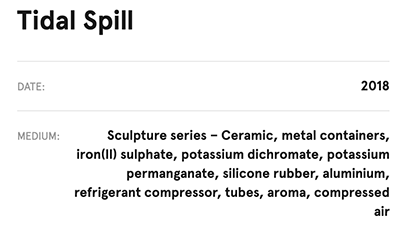
"Contamination is at the heart of Tidal Spill, an installation comprised of several sculptural elements that have gone through different types of treatment, sometimes chemical, sometimes electric.
While one sculpture perspires and oozes, the others oxidize and become covered in crystals that evolve throughout the exhibition. The claimed organicity of these pieces is also present in their shapes which, in certain cases, resemble bone and muscular tissue perhaps made mutant by the surrounding toxicity. Isabelle Andriessen has described the works as ‘zombie sculptures’ with metabolic characteristics and disease-like symptoms. More than simply unhealthy, the artist wishes them to have their own agency and the capacity of choosing the direction of their mutation, without human intervention.
The sculptures and chemical solutions are also juxtaposed with various types of debris collected and moulded by the artist. Their appearance reminds us of the philosopher Jane Bennett’s observation that rubbish is nothing less than ‘a pile of living matter … that accumulates’. In this work, the distinction between living and non-living matter is deliberately ambiguous. Under its guise of a tidy apocalypse, Tidal Spill prepares the ground for the emergence of new species which transcend these categories."
Issues of human non human and post human + * see also the videos here again
source: https://www.lafayetteanticipations.com/en/oeuvre/tidal-spill
I am inspired by the works of crosslucid - as seen in their book - FOR A MAN-MADE DYSTOPIAN COUNTERPART because it creates these objects that appear rendered even though they are objects from everyday life combined to form dystopian/utopian sculptures. The problem, however, I can see here is that these objects if not photographed in perfect conditions don't have the same surreal, mesmerising quality...
A synthetic counterpart
I don't want to go with the synthetic because it will distract from the organism itself and also visually not 'support it' to unfold its full aesthetic value.
Decision
But I do think I can draw a lot of inspiration from them in terms of material - research- form finding and aesthetic combinations.
Idea: One of my experiments could be to get crystals from different regions and simulate the climate conditions + create a nutrient mix I connect to this specific region and put the physarum in this conceptual ecosystem.
+ Ursula Damm knows the french scientist from 'The Blob' arte documentary
> in the documentary she talk of having created around 30 different mixes of nutrients; I'd be curious if she might share what they put in these 'soups' ..?
+ re-ask about physarum artwork with robot pipette
Because I know the slime mold will grow and move wild if not controlled if feed - I need to design mechanism to contain it.
Inspired by this image, I like the idea of something 'oozing out' - breaking free..
Insights from a walk in the woods
In a way I think it is relevant to look at where the slime mold comes from- what is it's natural habitat? Can I recreate it? In a domesticated way?
The domesticated slime mold? The captured tamagochi?
Also looking at the shapes they remind me of bones, and muscles and erosion - decay - life and death side by side ( going back to how any organism lives of the death of another) AND the interconnected-ness of forms meaning a tree might take the same shape as bones or other tissue of the body; the physarum might look like fern, or coral or lightning.
The idea of something bursting or oozing out ..the slime mold coming out of a branch might look at the same time like a sight from the woods and like an open gash of the skin with pus /(german: eiter) coming out.
I like the idea of playing with a suggestive connection to the human body in this way.. to create both an intrigue and disgust in thee viewer
Possible prototype approach:
Collect shapes in woods > create casts with plaster, silicone (or other) > cast these shapes in another material (ceramics probably too advanced and need burner) - maybe something more natural and soft looking? Maybe wax ..?
Possible prototype approach:
Could also be something super simple like finding a beautiful rock - cutting it in half precisely with a machine - putting physarum on both and hoping they'll find back together... call it something like 'my better half'
Idea Mindmap
Letting the movement of Physarum decide something; likes vs. dislikes - play chess - play memory - choose an object - random design something by relaying the physarum's movement to some design task
one habitat : a rock - cut in half ; one organism : a physarum - divided in two
let the physarum reconnect with "my better half"
Body analogy: physarum like pus from body wound
Model the forms in 3D software to ... ? (3d print them)
Mixing materials and working with tubes!
a series of habitats
source: Anne de Vries, 'At the Koufonisia bus stop' (2014)
WAX! She works with wax to create her sculptures - I too could create casts and poor wax in them and see how physarum reacts to it - because the organism actually needs the medium to grown on ...?
Intermediate insight:
Because Physarum is a living organism I can't just get it to do what I want. It will have a mind of it's own - needs nourishment - must avoid light (especially difficult for an exhibition context) - can create dangerous chemicals when it molds and move where ever it wants when it's happy..
Maybe I need to really (re-) consider if it is the right organism for my plans??
Might look into mushrooms or even euglena instead ?
Further thought:
The physarum has some specific limitations but that might also help make the installation more specific - as it is a organism that roams free - how will it do in captivity?
These shapes also remind me of Jesse Kanda and Sam Rolfe's video art graphics - weird blob people - which makes me think maybe to connect the installation to a VR space - maybe with PD, maybe the tracked movement of the Physarum could give information to synthesise sound in Pure Data - like some data I collect from Physarum turns into sound ...
If you'd give this kind of shape to physarum in a contained area it could look like giving a 'opfer gabe' into a cage, like giving a lion a cattle leg - when planning to instrumentalise an organism like this (create such a visual statement) I should first consider the statement I'd be making.
To-do:
experiment : buy a mushroom growing kit!
'Strange beings between life and non-life'
Working title:
Cycle of death - death as part of life
Wax! organic curved shapes + the body
Pink oyster ?
Yellow oyster ?
Yellow kit 1
Yellow kit 2
The contents of such a kit could be transplanted into a 'housing' /form of my choosing ...
Physarum as tarot card chooser - connecting science and esoteric - arbitrariness of both tarot and slime mold movement
A cross-roads question: Do I want to observe and extract information or do I want to impose and utilise the organism/ make it conform to my plans ?
The LIFE CYCLE will become a large aspect of my work, getting to know it, maintain it, understand it and answer the question of whether I will let the slime mould live naturally or dominate and control it to fit it's life cycle to my schedule??
Ursula's idea here is that robotics/machine could negotiate the creature/organism - human interaction. As an in between agent it would be responsive to the organism and create a FEEDBACK LOOP/ FEEDBACK SYSTEM.
Project that has been done but very similar to my idea: supplying nutrients in liquid form through a robot with a pipette.
>> ask what this project was called/by whom?
>> question of control ?
Edit: Answer: via the alternation of different parameters (control) I gain insight and extract information
Thematically also Isabelle Andriessen's work with mycelium has a similar topic of life after the Anthropocene and the man made traces that linger:
"Drawing on the dystopia of the post-human, Isabelle Andriessen lets nature and technology interact in a seemingly balanced ecosystem in The Mesh – strange strangers between life and non-life. The installation includes sculptures containing mycelium, from which mushrooms grow through plastic and metal. Accompanied by a humidification system, the constellation offers a mysterious and haunting sight. The interactions are set in motion to transform the work over the duration of the exhibition, revealing slow and subtle changes such as the growing of the mushrooms and the dispersing of their spores. Spreading like a disease, the human body takes these spores outside of the exhibition space, to continue the dialogue between human body, mushrooms and systems.
They count as a metaphor for the way we leave traces in the age of the Anthropocene, land, architecture, materials, satellites, technology – most probably installing a presence that will outlive humanity. What will nature look like when humanity has gone extinct? Andriessen aims to play with the seemingly rigid boundaries between life and non-life and human and non-human, and how they get confused along the force of the Anthropocene as a post-human scenario."
Feedback session 2
My case is that I know the direction my visions want to take and I should collect materials/ make a collection, whether first hand- like shapes captured in woods - or on the internet.
Ursula Damm correctly saw that what interest me is creating a sculptural moment and something that has a life of it's own, grows, changes, decays in a beautiful way.
Physarum is very limiting so maybe I need to still go in search of my creature.
Focus on the moment that draws my attention: what is evolving, what is frozen & dead, where does life start living
Themes that come up especially through looking at Ivana Basic's work are: pain - sensuality - body without consciousness - body without brain - body - meat - still alive - becoming - evolving
I shouldn't let my vision be limited by the physarum.
(1)
collecting shapes
collecting first hand experience with physarum
also growing another organism and collecting experience with it
Identify your starting point
> keep both an open ended experiment
> & a vision for a sculptural moment
>> 2 strategies simultaneously > because the work with the organism will include a lot of waiting and caring
> look at two organism and how they differ
Possible project phases
(1) COLLECTING - YOU NEED TO KNOW WHAT YOU ARE INTERESTED IN -
what is it you want to express or make someone think or feel
(2)SORTING OUT - after collecting and first experiments: see what you really like
(3) CONCEPT - what do you want to do with it based on YOUR EXPERIENCES
>> this is quite different then my branding approach to a concept, which is focused on the message and deriving the concept from things that it needs to fulfil.
* why does physarum struggle in captivity? how does it survive outdoors? control vs. autonomy - living in captivity
The North Spore 'learn' page also has a lot of great information on Mushroom kits and growth: https://northspore.com/pages/learn
Lion's Mane
pink oyster
golden oyster
My selection:
I decided for a mixture of mushrooms all from 'Pilzmännchen' a German provider with a website dedicated to explaining how to work work/grow/harvest fungi.
I choose:
1 Pink oyster Mushroom grow set - Rosenseitling Bio Home-Pilzzuchtset - designed to teach the basics of growing fungi / a bit more DIY/hands-on
1 normal Oystermuchroom to grow on coffee leftovers - Kaffeesatz-Pilzzuchtset BIO Austernpilz - a different variation on possible base for the mushroom to grow on
1 Pom Pom Pilzzuchtbox Bio - a pre-made box, which only needs to be sliced open to add oxygen (a safer option/ less to do wrong)
I choose all oyster variations because of their structures and colouring. I decided against the golden/yellow oyster mushroom because I already have the yellow physarum - I don't want yellow on yellow and I also don't want to mix too many colours - especially because I am leaning towards taking the sculpture into a bodily direction.
I've selected the 'Pom Pom' as a fixed kit which can be transplanted in it's entirety
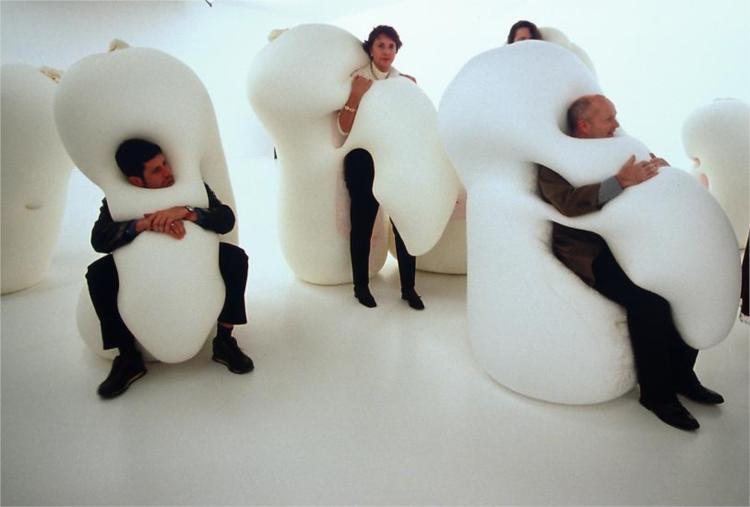
Selecting a second organism: Oyster Mushroom variations
Finding forms:
Also thinking about the blob-organic shapes of Ernesto Neto's work 'Humanoids Family', 2001, because these shapes have openings for an organism (in this case the human body)to fit itself into - could also imagine this approach to creating a terrain for the Physarum to navigate or the oyster mushroom to grow from.
Also very inspired by the shape of a cut-off tree trunk. A natural habitat for both of these organism. A 'sanctuary' space.
Finding forms & materials:
Dancing water droplets: https://www.youtube.com/watch?v=K8Wx2PHIYGI
Riedel Kruse - Biotic Game design: https://riedel-kruse.arizona.edu/sites/default/files/Cira_2015_PLoSBio_Biotic_Game_Course.pdf
Started orienting from this article on best mushrooms for home growing: https://gardenerspath.com/plants/vegetables/best-mushroom-growing-kits/
Ernesto Neto - 'Humanoids Family', 2001
David Altmejd -
A lot of his other work I am less in to although it is quite similar - their is something beautifully intriguing about this one and the other border more on disgust.
Berlinde de Bruyckere
The idea came up to mix this visual aesthetic of the crystals with the rock making approach of the weißensee Abschlussarbeit. In order to create own rock - crystal structures.
Berlinde de Bruyckere
If I use crystals ask yourself - why crystals?
Answer:
I have to admit that although I love the crystals there is no actual conceptual connection between the living organism and a crystal...yet...
Insights for general direction of project:
I'm interested in shapes
connections between body and nature in forms
what we see in the forest could be what we see in the body - bones, muscle structures, veins, tumours, scars, layers of dry skin
_ feeding of the organism
_ dimensions perceived by the organism
'preparing for death is one of the most empowering things you can do' -
Candy Chang
Creative fond Nachwuchs - concept einreichen bis Mitte Juni +
need reference to support the project
Signs of life
S
More computerised view on Physarum: Conways's Game of Life - cellular automaton
The simple movements and structure reminded me of Physarum - https://en.wikipedia.org/wiki/Conway%27s_Game_of_Life
Make a mind map to organise your thoughts!
I am creating a 'man-made' steril new habitat/surface for the Physarum to live on in captivity that is inspired by the visual similarities between the organism's natural habitat ( trees ) and the structures of the human body. Conceptually this also speaks to how we as humans try to comprehend other life forms through concepts and terms like 'memory' 'complex social behaviour' 'intelligence' , more appropriate to our own ontology. Terms that might not fit an organism fundamentally different from ourselves. ( i.e. unicellular organism with full genetic makeup in nuclei in each part of it's mass.)
Kostenplan Aufstellung
Austellungsmöglichkeit? e.g. documentation der installation als 360° film von gallery ?
It looks like Ursula is already supporting a project but maybe Miga?
This idea makes sense only in connection to the life-cycle of Physarum - how it can 'die' but only be suspended in death and come back to life.
Even if I don't get this financial support / or I can't find someone to support my project because all my professors are taken, it will be good for me to work towards this to get my thoughts together and sort out my vision.
Frame my project as a 'zwischenfachliche Konzeption zwischen Kunst , Gestaltung und Wissenschaft' ( sculpture + Bioart )
Ursula Damm wär schon die richtigere für den Antrag..
Might it be possible instead of casting object to 3D print ( if necessary also in multiple pieces ) & then seal and potentially cover/glaze over and cast in Agar ?
This way my dedication might be more focused on the Organism and special new Agar solution and less on the craft of casting...
'Spaces that get carved out - for the human and non-human'
Questions for privat Consultation:
Could she back my project/recommend me for Kreativfonds? or know someone else who could?
Feedback on points for Kreativfonds proposal?
How limited will I be to exactly what I laid out ? e.g. * how long can you live without me - vs. perceiving terrain ?
Should I have e.g. all my production methods decided? Casting / what material / 3D printing etc.?
Access to 3D printer?
Do proposal for just one technique or maybe leave open that I want to try two techniques: 3D print or cast? > formulated it more open
Was für Graphiken sind gut? nur eigene Skizzen? > nur eigene Werke
Größe von Skulptur angeben? (Nur eine version oder mehrere mögliche Versionen?)
Some way to indicate that the Project title might change? > done
Reicht ein angedachtes Ausstellungsdatum? 'Ende August?'
Ich muss alle genauen Preise angeben?
It might be more of a logistic hassle but I feel much more comfortable with the idea of 3D printing because it would offer me much more control and precision over the shapes I create.
- more precision
- more control
- predictability
- more media art, less craft
*Strange beings between life and non-life
Gordon Matta Clark - trees
- connect the sculpture back to trees by hanging it in trees
This sculpture by Ivana Basic is her interpretation of a human body, this is the impression is has on the viewer. Yet when examining the form and structure it looks much more like a piece of wood/tree than any body I have ever seen. Again, affirming the visual overlap between trees and human bodies.
Rough Plan:
Rough overview of phases:
Next session:
Snippets from first conversation:
Ursula liked that I include Wangshui because the piece plays with the gaze in a more voyeuristic method that looks as the organism as opposed to only having the practical function of capturing from the correct angle. The curiosity of the gaze / voyeuristic plays into the artwork and poses new kinds of questions.
Decision: Based on the feedback I've gotten and on not feeling fully connected and committed to Physarum P. yet I want to select some Oyster Mushrooms.
blue oyster
Pom Pom
'Was mich bewegt ' Ausstellung - Danu Rehberg
Weeks 1 - 4
So far I have been waiting for the moment where I feel 'on top of everything', this moment eludes me still but it is time to take stock and reflect on my conduct so far.
I have been documenting in the form of photographs a lot, simply because the organism is constantly evolving so that if not captured the moment will have passed.( As initially everything was new I was taking photographs of all dishes. I have since gone over to only documenting special structures, or bacterial infections or other unusual features.) I am also writing down short notes of thoughts that struck me, my immediate observations, without analysing those thoughts further yet. My broader conceptual thoughts have been on a basic level, connecting different impressions in order to form my own perspective towards the organism.
At the same time my point of view was never entirely free as I entered this project with (1) already a interest for (especially) the dynamic, mind-of-it's-own quality of a growing organism (also relates to Fungi)- meaning a special interest in structural/visual appearance and time/movement/growth and (2) the ambition to create a 'sculptural moment' i.e. a special interest in forms for the organism to grow on.
I am starting to realise that this might result in the approach that I want to create first a setting/environment/habitat( i.e. sculpture) and then let the organism live, grow, decay on it's own accord. So, creating an interactive setting and then re-treating the human influence. This would include a process of first understanding both the organism's natural (the woods) and man-made (the petri dish) habitat to then create a hospitable setting which will allow the organism to thrive and live autonomously (as it should/could).
What is slowly becoming more and more clear is that I am interested in what I see, in the immediacy of the time I spent with the organism and the things I can observe with my own eyes. Although Physarum polycephalum is especially interesting for it's complex survival features, which have made it not only unique as a unicellular species but also one of the oldest species on earth, I don't want to develop my project based on the established scientific facts I can google about it. As I come from a background in branding were concepts emerged often on abstract conceptual implications and connections found out by reading about something, this time I want to base my work on what I, myself experience, observe, think through my interaction with the life form. (I want it to be what it is - I want to abstain from conceptualising on some invisible meta level.)
> Gain an artistic perspective towards PP through an interactive setting.
> Question how we perceive and categorise other species
> Focus on the organisms habitat
> study the organism to understand it's needs and requirements for survival to then create an installation environment where my active care is removed / aktive Fürsorge eingestellt
What is it I actually really want to do with this project?
I feels inherently problematic to propose exactly what I will do with the project i.e. developing different Agar/'soup'/'Medium' before even have talked about a first project Idea in the 'Fachmodule' with Miga ( at the same time I have talked about it in Artists Lab so..) I should just be careful not to promise anything I can't deliver on..
However, to focus my technical research/project aspect on the medium makes sense because it focuses on
(1) visual aesthetics i.e. removing oatflakes
(2) interaction with organism by replacing/providing alternate food source
(3) questioning the perception of organism by providing the surface it exists on and the microorganisms and moisture it needs to survive
(4) essentially it is dealing with the core life source
(5) dealing with the immediate point of contact between me and the organism
(5.1) dealing with the substance that defines our immediate interaction
When is a realistic exhibition date?
15-16 August? / End of August
or rather not death but dormant and waiting
Physarum portrayed as 'the blob' links to science fiction myths (or B-Movie Horror) and as the 50s TV broadcaster says 'some people suggested the growth was mysterious maybe even something from outer space ... found out it was nothing more than a fungus.' (So on the one hand the myth (connecting it to the idea of a 'higher alien life form' and on the other the degradation and perception of other life forms als 'lesser than'. I.e. the excitement of being educated or threatened by something only to then dominate again.)
Heather Barnett said something that connects to both my observations of my own Physarum and more especially other people's who have done experiments: the Physarum is highly independant, 'I can try to get it to do something through attractants and repellants but the organism decides the final outcome'
'When you see them in nature they are usually associated with decay'
the line between seduction and repulsion
science enable us to understand the world around us better - I want people to engage with that
Does the slime mold climb up on a tree when it comes to end of it's life cycle to then have the spores spread across the forest?
'alleged intelligence might be the fact that they appear to be intelligent rather than are' - guy in the woods
while Heather Barnet nonchalantly/casually says, which is an 'intelligent organism'
Human coined terms used (based on our human-centred understanding of the world)
'connecting' 'networking'
'learning' 'memory' 'habituation'
*personal note: in the past I feel like I have similarly explained many concepts with big terms and facts gathered to support my big claims but this time I want to reduce to what it is and just let it stand for itself instead of jumping on some term to make an elaborate concept.
'I would say that the meaning of intelligence needs to be redefined here a little bit. Human intelligence is something and in Physarum it is something else. Computer intelligence something else completely as well. So I would separate these things. But have them together, maybe making a higher concept of intelligence - professor Eduardo R. Miranda
'Behaviour (not intelligence) is more compatible with how I think of these systems'
'I would argue that what we see in the slime mold is not behaviour per se - it is mechanistic responses to external stimuli.'
Also Heather Barnett scene in the woods gives immediately the impression that it is staged and she also says she's never been foraging before and it gives exactly the impression that she didn't know what she was doing. Again, this represents to me that someone working with this organism feels no actual need to connect with it's natural habitat. While apparently committing their research to understand this life form, all insights are gained from inside a steril Biolab. All insights are gained by trying to coarse it into doing something for the human.
Unconventional computing approach
Very popular in computer science, science and Bioart in dealing with the organism
I'm interested in where it comes from, it's habitat and not isolated and completely removed steril observations under the guise of 'trying to understand it' by listening to indescript sound patterns or data turned to emotions on a robot head.
'Sonification' 'Musification' 'an artistic interface between data and information - can we have something richer to convey this information ?
To me these computerised approaches HIDE the organism behind data while saying they are
trying to make the organism more UNDERSTANDABLE - but what is remarkable in most presentations of Physarum it's seen only in strange petri-dish contraptions.
I also do think it is important when thinking about possible interactions with the organism (e.g. could I influence it by sound?) to consider what the organism requires for it's survival and what traits evolution of Billions of years would have left it with - likely not any type of hearing in our sense - maybe some waves, sound or electromagnetic or other, which it could perceive.
If anything would be more logical to start looking into humidity and temperature, moisture related senses.
2 Seiten mit Graphiken, Bildern oder ähnlichem
Concrete task this coming week:
Create casts/molds of small wood pieces using the Alginat- powder I have
Following step:
Find larger wood pieces in the woods
First step is to see and 'prove' these similarities
The second / the 'künstlerisch-gestalterisch' aspect is to translate this into a designed object - meaning finding features that especially emphasise this correlation.
* The proposal needs to be specific enough to explain what I am planning and open enough for my continued development in the project process.
* How (long) can you live without me? - puts the focus on the process of retreating my influence i.e. the interaction
* perceiving terrain - would put the focus on the organisms perception
> & I feel like I DO need this subtitle to give more focus to the angle
These slime mold positions look much like how fungus/mushrooms positions itself on the tree + these two species would live side by side - it might be an option to integrate the mushroom in the sculpture and the slime mold on top of it.
Analyse their habitat!
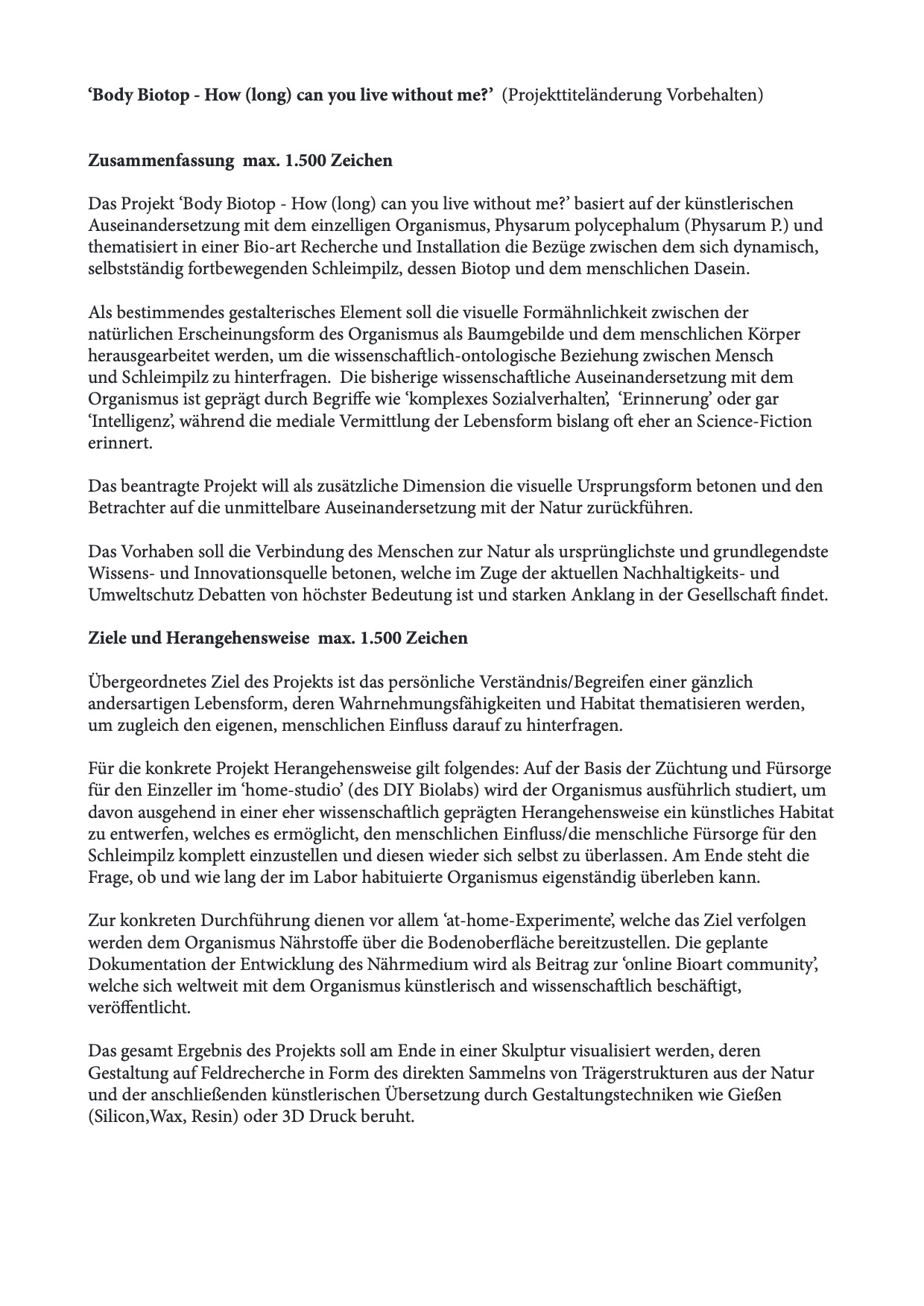
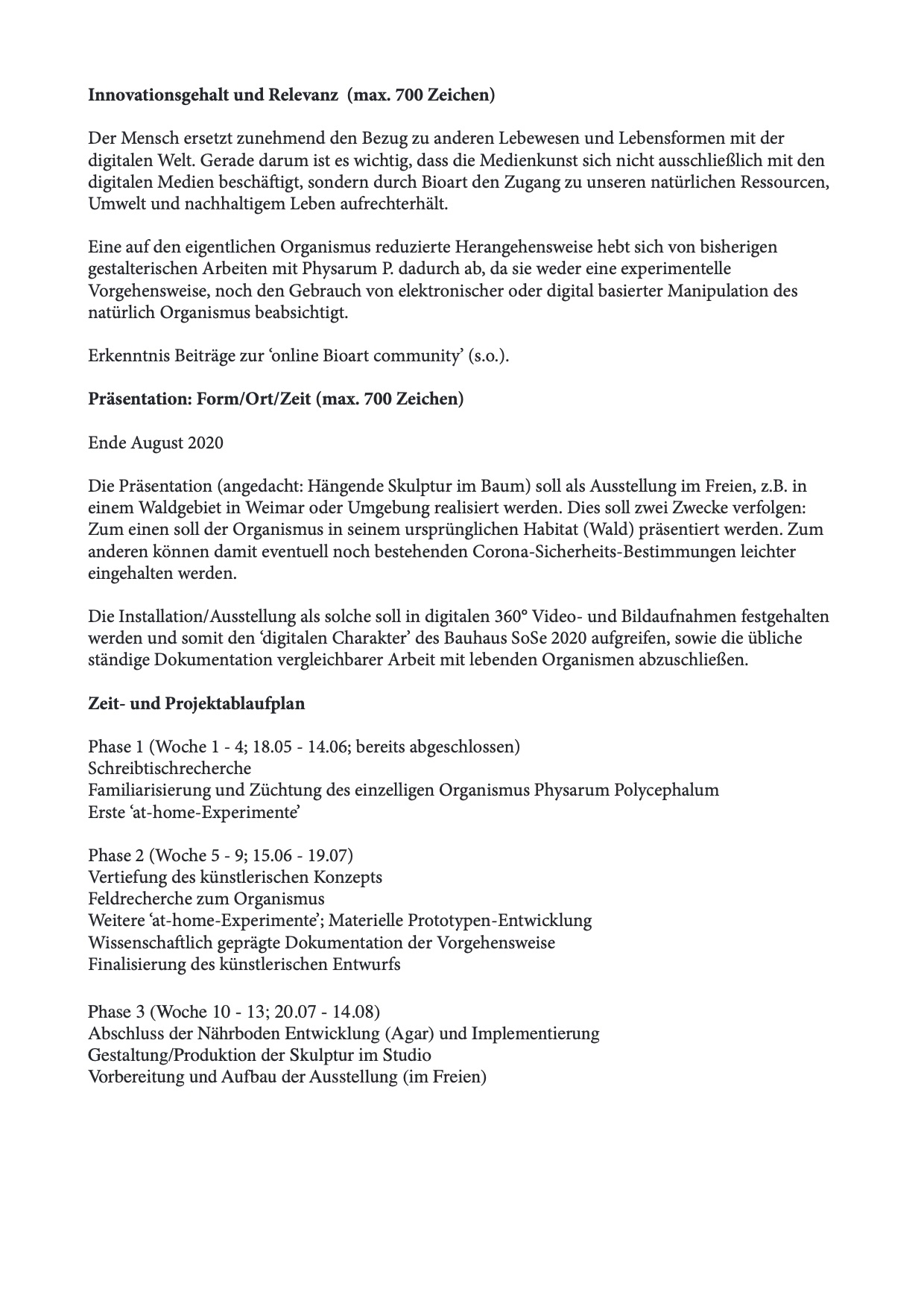
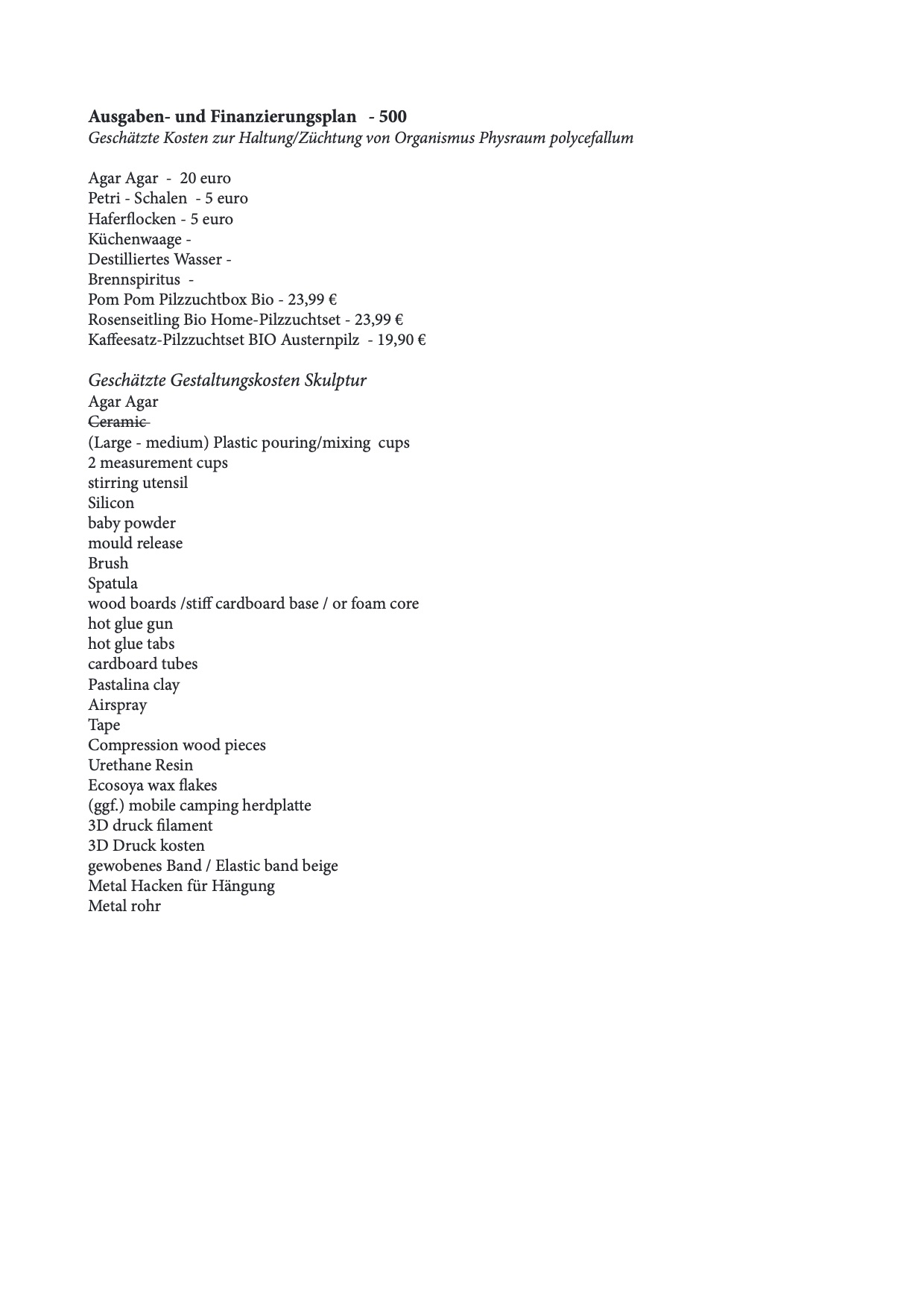
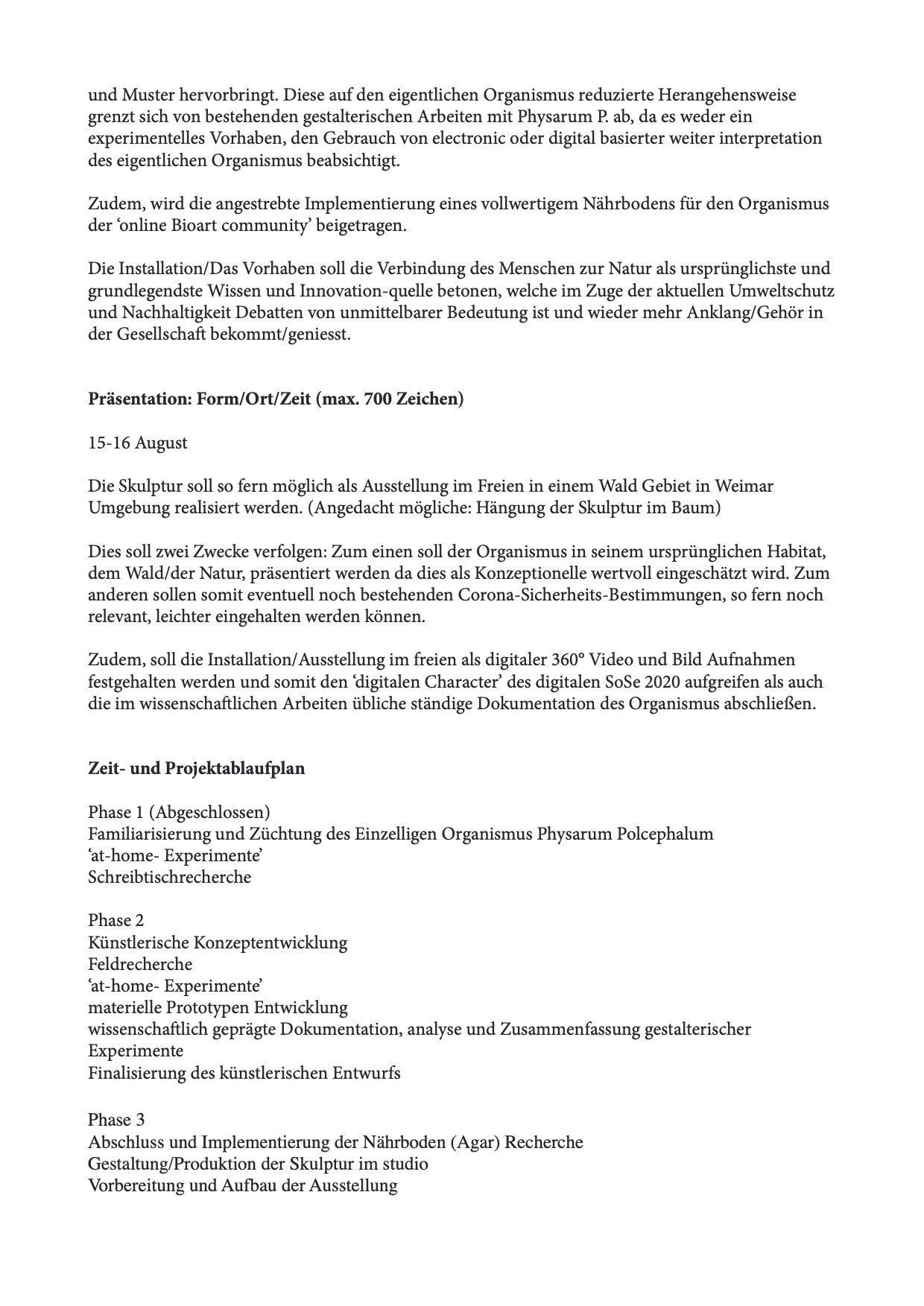
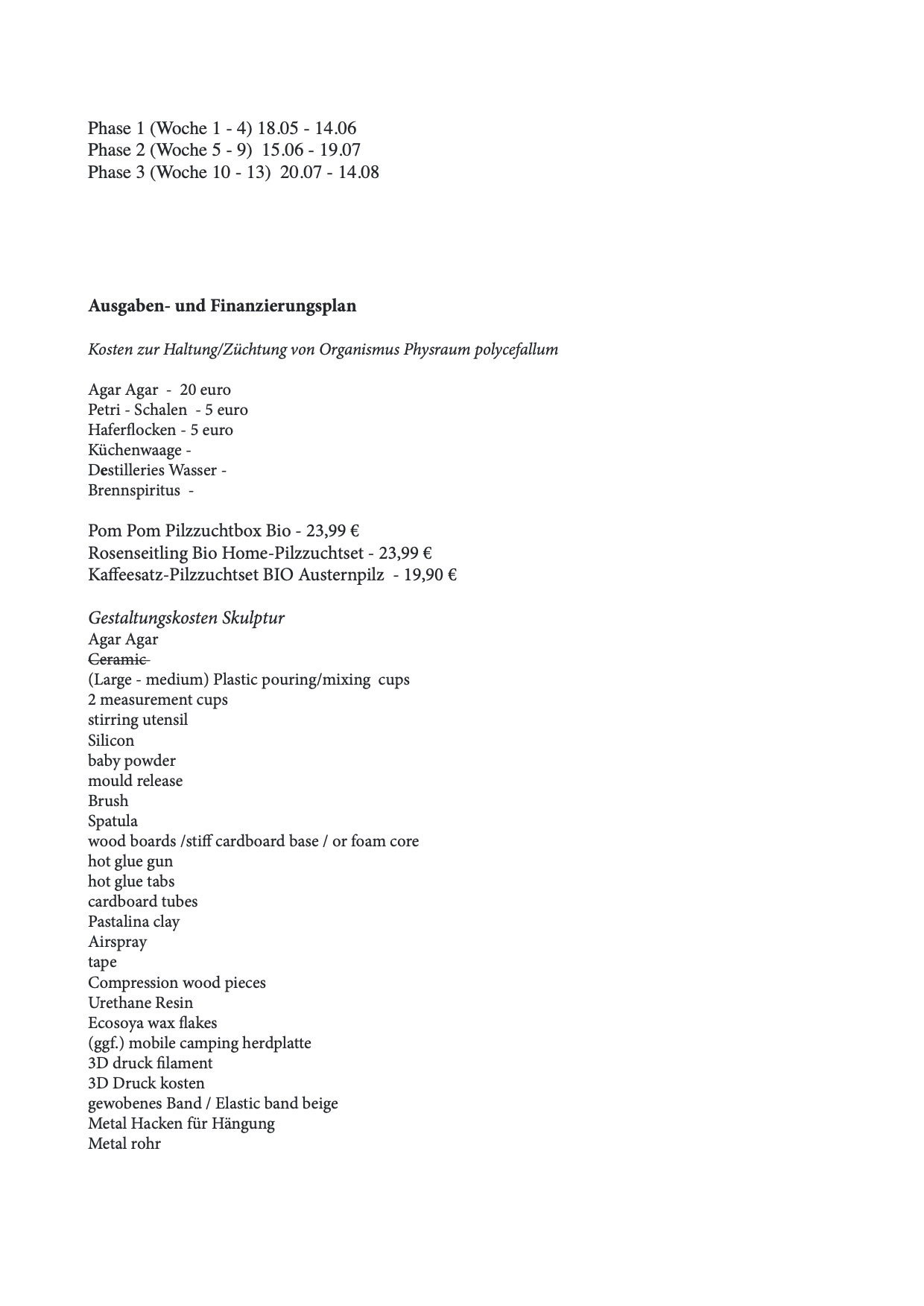

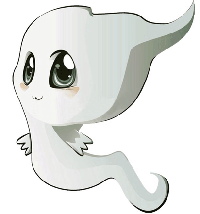
Das Committee besteht aus Leuten die nicht vom Fach sind (vlt. 1-2 Künstler aus der bildenden Kunst) die prüfen den Antrag auf die Durchführbarkeit und Plausibilität des Vorhabens, sprich 'Lohnt es sich für dieses Vorhaben Geld zugeben'
Wenn die einbischen was über Bioart wissen und vlt. Physarum P. schonmal gehört haben kann es sein das sie wissen das die Uni dies aus dem Biolab bereit stellt und der Antrag schnell weg gelegt wird weil der Grund für Geld schnell als untriftig eingeschätzt wird.
Also PHYSARUM NICHT SO DICK REINSCHREIBEN
Lieber Fokus auf die Zeichnungen legen weil ich mit diesen meinen Gedanken mehr Ausdruck verleihe. (FOKUS AUF FORM; Zeichnungen haben ihr sehr gut gefallen weil sie den Ausdruck des Denkens zeigen und das skulpturelle deutlich wird.)
Sie würde mir eher Raten die Vorgänge der Bioart, die Arbeit mit dem Organismus und die Übersetzung dieser Vorgänge und der Auseinandersetzung mit dem Organismus (seinem Habitat)in eine Skulptur in den Vordergrund stelle. Also das Physarum als ein Vorbild unter mehreren möglichen Organismen dient.
*Sie hatte auch den Eindruck das ich zwei Skulpturen bauen möchte. > Ich soll ausgehend von den Skizzen meine Berechnungen machen: dadurch wird mein Vorhaben nachvollziehbar, greifbar und scheint plausible
Ich sollte die Skulptur in den Fokus stellen da es einfacher sein wird hierfür Geld zubekommen da es klarere ist das ich Geld dafür brauche. ( Die kosten der Bildhauerei sich eher anrechnen lassen ) Anders gesagt wenn mein Antrag Fokus auf Physarum liegt ( den ich bereits frei von der Uni bekommen habe & dessen Haltung ziemlich billig ist brauch ich keine 700euro + Physarum Projekte schon X mal in der Uni behandelt wurden, der Organismus billig ist & ich ihn deswegen nicht in der Vordergrund stellen sollte ) > Also Skulptur direkt an den Anfang der Zusammenfassung.
Was inhaltlich gut ist und so bleiben kann: die visuelle Formähnlichkeit & die Frage ' Wie verhält sich Form zu den Eigenschaften des Organismus?'
Eigenschaften vom Lebendigen einfrieren, thematisieren & reflektieren > (Lebensformen) in seinen Einzelheiten reflektieren.
Ich mag diese um Lagerung des Fokus da damit nicht der Organismus selbst sondern viel mehr meine gestalterische Auseinandersetzung, sprich Übersetzung meiner Beobachtungen, Gedanke, Thesen in eine Skulptur im Vordergrund steht. Also viel mehr ICH und mein Ausdruck und weniger der Organismus.
Unter ZIELE UND HERANGEHENSWEISE
Auch würde Sie Bioart weniger an die Große Glocke hängen - auch soll ich 'Beitrag zur Bioart community' streichen (dies überzeugt angeblich nicht) - Viel mehr mein möglicher Beitrag zur:
NEU EVALUIERUNG DER MEDIENKUNST DURCH DIE VERBINDUNG ZWISCHEN BIOART + SKULPTUR ; ALSO DIE NEUE MEDIALE, WISSENSCHAFTLICHE LABOUR ARBEIT + DIE KLASSICHE BILDHAUEREI (ERZEUGUNG VON ARTEFAKTEN)>> MEHR RELEVANT FÜRS BAUHAUS
homestudio - ok
Relevanz
Ich sollte nicht schreiben was ich nicht mache nur was ich mache
PRÄSENTATION ORT ZEIT
Obwohl Sie zuerst meinte die Präsentations Sparte sei gut haben wir dann doch diverse Änderungen besprochen.
Nicht August: zu wenig Zeit und da ist keiner in Weimar!
Lieber: die Ausstellung als Event (mögen event character) und die Präsentation der Dokumentation zur Winter Werkschau
im Januar.
ggf. Oktober ? Die Ausstellung könnte mit der 'blüh zeit' des Organismus korrespondieren > google it!
ggf. mit einer Lesung verbinden?
Auch 360° Aufnahme passt nicht gut zur skulptur da die skulptur die Ruhe sucht - die Konzentration auf das Objekt welches versucht den Raum zu beeindrucken - das Raum Gefühl würde bei 360° verloren gehen und der Fokus auf dem Wald liegen und die Ruhe der Skulptur wegnehmen.
Ich sollte lieber 6x6 oder anderes Großbild Format mit keinen Flüchtenden Linien nehmen , welche den vollen Fokus un die Ruhe dem Objekt geben würden. ( Hierfür könnte ich auch einen Photography Studenten anheuern & diese Kosten Aufschreiben)
AUSGABEN FINANZIERUNG
Meine Ausgaben können am Ende leicht varieren aber ich muss es so formulieren das klar wird was ich vorhabe & dass ich auch weiß was ich dafür benötige
Kleine Sachen zsm fassen
Ganz kurz
e.g. Nährmedien für Einzeller - 50 euro
am ende 10 Zeilen
*Dazuschreiben was im Biolab nicht vorhanden ist
Wenn ich noch was offen habe e.g. 300 euro Fertigstellung Metalgestell ( Edelstahl biegen + Betonfundament)
oder Wervertrag studentische Hilfskraft 8-12 euro die Stunden (Studenlohn) 150-200 euro insgesamt mit Materialkosten Edelstahl 80-120euro
oder Metalbauer (XY wissen welcher) Metalbiegen 350euro (+ Beton Fuss) (*Leder oder anderes Material Band)
So allgemein schreiben das ich nicht festgelegt bin aber vermitteln das ich weiß was ich tuh
Von den Zechnungen aus die Kosten aufschreiben - dann kann man sich das Vorhaben & den sinn der Finanzierung gut vorstellen. & an alles gedacht haben
'Monate' hinschreiben - nicht so detailliert - kalkulieren und knapp zsm fassen
3D drucker - Filament kalkulieren - klar machen das ich da Gerät aus der Uni in Anspruch nehmen würde
> Ask Miga > ask Open Process Lab ( product design Fakultät) > Tim Burkart and Eva Hornicker ( HCI - Digital Bauhaus Lab)
Dann würde es einbischen abstarkt als es um 'Medialität der Prozesse beschäftigen' ging
Eigenschaften vom Lebendigen einfrieren, thematisieren & reflektieren > (Lebensformen) in seinen Einzelheiten reflektieren.
> skulptural bearbeiten
nicht voll auf den Organismus / Physarum einschießen sondern lieber bei der Kunst bleiben
Hening Schmitgen > Max Blank Institut für Wissenschaft & Geschichte - Kunst und Wissenschaft verbinden und Experimente aus der Biologie als Kunstausdruck? Als Brücke?
Investigation der optimalen Bedingungen für den Organismus : wo kommt er draußen vor, analyse der Bedingungen & Dokumentation durch skulpturale Bearbeitung
change: fokus sculpture over organism
change: 2 organisms ( or multiple over PP)
remove: Nährboden Entwicklung & contribution to Bioart community
? obwohl ich in den 'At-home-Experimenten' schon noch nNährboden Entwicklung machen will ..?
extend: period
specific: calculate for 2 sculptures
For drawing inspiration: tomas schmit came to mind
Also I should look at the book: Facing Gaia by Bruno Latour
Recently I'm really in to poetry and I like the idea of giving the slime mold a voice - in a 'Lesung' - we discussed even a 'event character' of the Ausstellung potentially, something to additionally make people want to come to the woods.
source: https://iriscovetbook.com/ivana_basic/
Reading this article made it again apparent that creating such a sculpture is extremely difficult and that the process with these 'fragile' materials (as described by Basic) is very difficult, to get them to communicate the feeling and process that go into them.
"painted wax figures in stainless steel, incubator-like structures, with glass orbs drooping from their necks"
In this approach I've abstracted the idea of the tree as habitat and view it as FORM/SHAPE, is this ok or do I need to investigate the REAL habitat of slime mold..?
Also, should have put my mushrooms in the proper place sooner!
Also should start using them because they will otherwise go bad - latest this weekend!
+ I should do a practice run & understand them better anyways before I make any kind of sculpture!.
To do - get 'Trägerstruktur' - cover in Agar Agar
To do - get 'Trägerstruktur' - don't cover in Agar Agar
Evaluation: Maybe I should crawl before I try to run.
I don'r know much about mushroom growth and these sets are the perfekt place to get startet. to understand the right environment, air conditions, why I need to make a X incision - why it needs to be a certain size, + the kist come with the supplies the in correct sizes - providing plastic sheets or lids with holes for air - etc. I should understand the parameters for mushroom growth before I sprint to adapt them and make it look 'cool'.
Also - the PomPom box kit can have several cycles and my sculptural ideas as of yet are really only about transplanting the mushrooms or changing the space around the substrat which can even be done at a later time!
For now it's important that I start so the kits don't go bad!

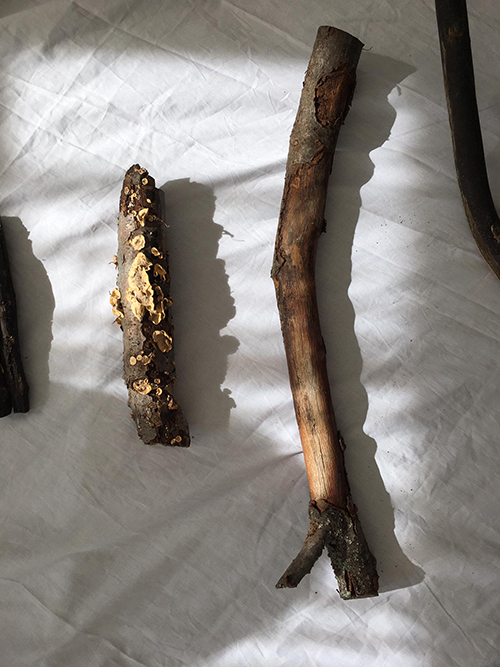
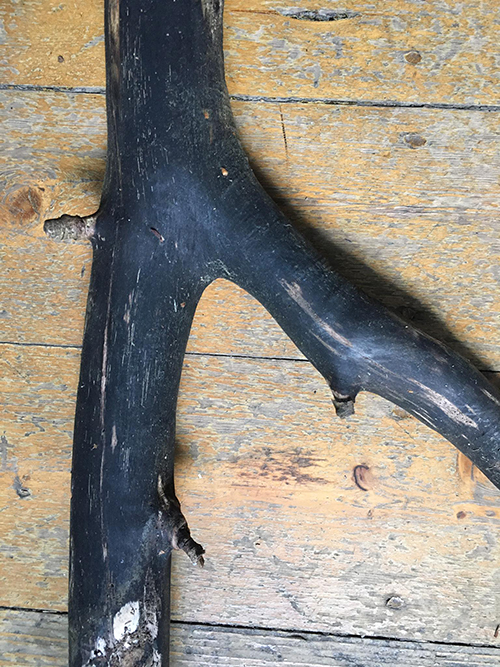

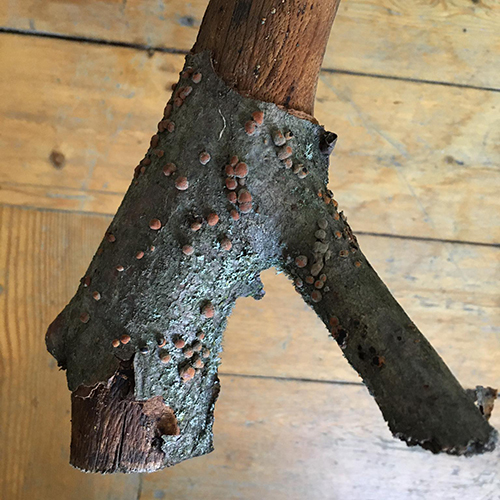
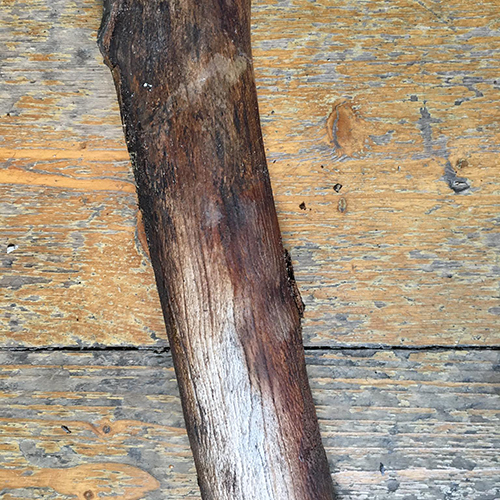
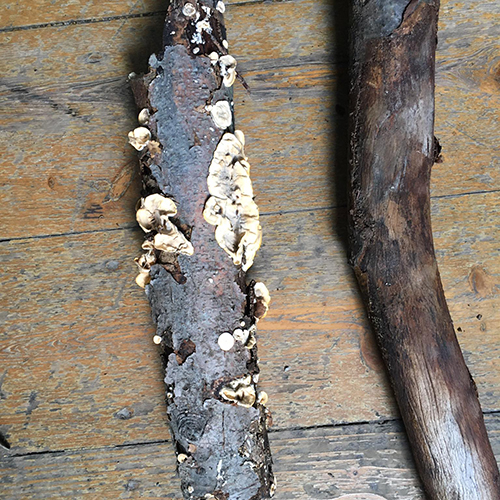
From my walk and collecting in the woods a few things became more clear:
The type of thicker woods structure - reminiscent of human body is more to be found in the (medium-thin) trunks of young and growing - VITAL - trees and maybe this sign of life is really only something to be found and cast from a living structure.
I now have a better feel for the dimensions and that creating a cast of the object I want will be a big challenge, simply because of the scale and I've never done it before.
At the same time I am starting to doubt whether casting from a tree will give me the desired bodily effect - maybe I will have to mold with clay on the wood piece to give it more bodily curvature in some areas?
Do I want these tree details? will it look 'bodily' enough? Or rather 'just' like drift woods..
A more mediated approach might be to 3D scan the trees I want and create a 3d model with the curvature I am looking for an 3D print it in several pieces that can be put together...
30.06.2020: edit: after consultation it is starting to become clear that my work is about my INTERACTION AND RELATION TO the organism I am caring for and trying to control. The process of controlling it and relinquishing control is central to my work and the process of creating a new habitat for PP that communicates my perspective on it; it is about the idea of how it lives with and without me. The idea of 'how does the organism perceive it's terrain?' is an additional though that intrigued me to think more from the view of such organism but is not integral to the work I am creating, it is an add-on and actually dedicating focus to this question would lead to an entirely different work.
Insight and decision-making in process:
Consultation 30.06.2020
If I would choose between the subtitles: 'perceiving terrain' vs. 'how (long) can you live without me?' It would rather be the idea of control and releasing control. There is already so many parameters to the work that this add-on idea of trying to empathise with the organism through sensing the surface is unnecessary.
Overall it was very encouraging and affirmative that creating a sculpture to manifest my personal perspective on the subject of slime-mold habitat was valid and significant. The sculpture seen as a 'hypothesis', a simulation, a valid proposal that refers to my own experience.
Generally: just to keep going forward and base decisions on the plausibility via the concept; i.e. what kind of tree - dead or alive should come from the concept.
To do: Go into the woods, spend time with the trees, experience the actual habitat, try to go looking for slime mold, understand the parameters of light, darkness, moisture etc.; look at the living conditions of trees: observe, also in changing light > look for the Physarum - document my search through the habitat!! ( + there is certainly also the approach of using the living material directly and forming it to my purpose; http://www.georgtrogemann.de/bio-integrading-materials-artefacts-and-processes/)
(+ this is also I question I was asking myself: how important is it for me to get to KNOW the habitat as opposed to just abstracting the shape.)
The focus of my work is THE INTERACTION: (1) between tree and PP: the type of tree - the activity of destructing and deteriorating it slowly - questions of agency and symbiosis (2) myself as human and PP: control over appearance and stage of life i.e. 'getting it to do what I want' vs. releasing that control i.e. returning the conditions more to a 'natural freed state'
My intuition should guide me - Ursula Damm spoke about how my drawings are an intrinsic vision not yet fully understood but that's totally fine and valid and I should trust the visual imagination > explore > go out > continue producing it > I will find out on my way to actualising them and that experiments will come later in my process. / My experiments will come later through experiencing and delving into the habitat & seeing what comes of the sculptural prototypes. ("You will need a lot of time to fully figure out what you want to do" - these kinds of statements keep giving me the feeling that this is more about the beginning of an artistic path than a singular semester project for which there is not so much time to take.)
She termed by topic as : shapes from controlled existence & loss of control
This relates to trees that have the vital traces of growth and life vs. how their form changes in death and my necessity to find a bodily appearance from within the truth of the habitat.
PP also has the traces of growth and living: interesting visual contrast: the signs of living on a decaying surface.
Another contrast is how in the woods Physarum is an EPHEMERAL existence, it is so rare, yet in the labs it is so abundant.
I was unsure if I will find the 'right' piece of tree to mold from. But it is crucial that I try because the process of creating a cast is already a sculptural act; to take a uniform material and create an artefact from something that had function, still carries that inherent and ONTOLOGICALLY GROWN function within it.
It is not an empty object but something that is transferred into a new artistic context, already carrying meaning.
3D print on the other hand is more universal, it carries no inherent function as it is only form. It is an assemblance; an empty artefact.
It would be focusing only on shape and thus making a separation between FUNCTION AND ORIGIN. This process would be similar to that of forming with clay and empty material to be put in the figure of thought - in the 'additive procedure of sculpture', an object without function/ not to be used beyond being representative of an idea and triggering thought in the viewer.
Liz also made some very helpful comments about how I go about my conduct:
If I use the language of doing an 'experiment' and working from a semi-scientific stance seriously and meaningfully then the sculpture should result through the decisions about my parameters. Because when doing an experiment it is open and is about finding things out. In a genuine experiment there is more room for variables. So in my case it is rather 'experimental prototyping towards a set vision'.
This 'open experiment' approach is a question of how the process is structured: in this case I have already committed to a vision (for kreativfonds), which I now try to realise. To make this happen I still need to define certain parameters, but only within this 'visual-vision-container', which I'm already more or less tied to.
It is extremely helpful though to use this experiment mind-set to define the variables and parameters in my interaction with the organism: >> * see 'if organism documentation' where I have now set these parameters of interaction.
Her view is that of viewing these living conditions as variables that I can swap out and test. E.g. replacing the natural tree for a 'non-tree' as a substrat, as a logical step. Following the question: HOW MANY VARIABLES DOES IT MAKE SENSE TO KEEP?
IN A DIALOGUE OF CONTROL AND CHANGE - how many can I take away or change > step by step
What are the limitations of this controlled setting - what are the variables where I can relinquish control?
Finally; there are even some similarities between my work with living organisms and Ursula Damm's fly project.
She spoke about how the Lab-context views organisms in a specific setting and deducts that these observations carry truth. However, these parameters e.g. like isolating a fly might completely change their behaviour - we might never see behaviour that only occurs in groups over an extensive time.
In the artistic work with living organism it's more about the aesthetics of their life, a concept or artistic stance attained through observations and a shift between adapting, controlling and showing some 'truth' of that organism.
Observations make the artwork.
"beings sharing habitats" > we as humans sort to many things out and it has repercussions on the planet, instead we should live more in symbiosis & have more respect for the self organising capabilities of a habitat, like e.g. water in an aquarium.
> How can I establish a habitat to allow it to self organise - to leave the 'players' to themselves?
> Organisms behaviour is always reliant on conditions
> the belief that as artist we have a free-er way to look into aesthetics around the life form and can support science with our findings on e.g. group behaviour, behaviour in habitat which is omitted in lab context > she calls this "the aesthetics of freedom" which need to be investigated
Because I started the plan for myself to work on the sculpture later due to the kreativfonds antrag I am 'ahead of schedule' - meaning I have time to not be too hasty and actually familiarise myself with the trees and the woods and look for Physarum outdoors and understand the body-tree connection on a deeper level.
Source: http://www.georgtrogemann.de/bio-integrading-materials-artefacts-and-processes/
Production methods:
Do more sketches of tree - body correlation
To understand better what I am looking for and the tenor of what I want to communicate; the sensuality of the collar bone or the pelvic bone?
The rejection of the imperfect, tumour like forms ?
The shame of imperfection?
The traces of fragility of scars?
*I can imagine that many think of 'entstellt sein' /exposed /exhibited /vulnerability as a confrontational aspect of a body in this context
Felled - still growing, still vital would definitely more has the look I am looking for!
To create more the bodily roundings I might add clay(knette)on certain spots.
I've been testing PP on different surfaces and settings:
my intermediate prototype for ends of semester might be on slightly formed/shaped wax
Turning sculpture into a time based medium
consideration/insight: when working with a living organism maybe it's not so useful to have such a set vision..?
Before August : bring wood piece to Gipswerkstatt, buy materials !
Hear back from kreativfonds?
Why wax?
Is the structure best visible on wax? not really no
Is wax a material especially suitable for PP? nope
Does wax have any linkage to the topic? none
Does wax have any similarities to the petri dish or the natural environment? no
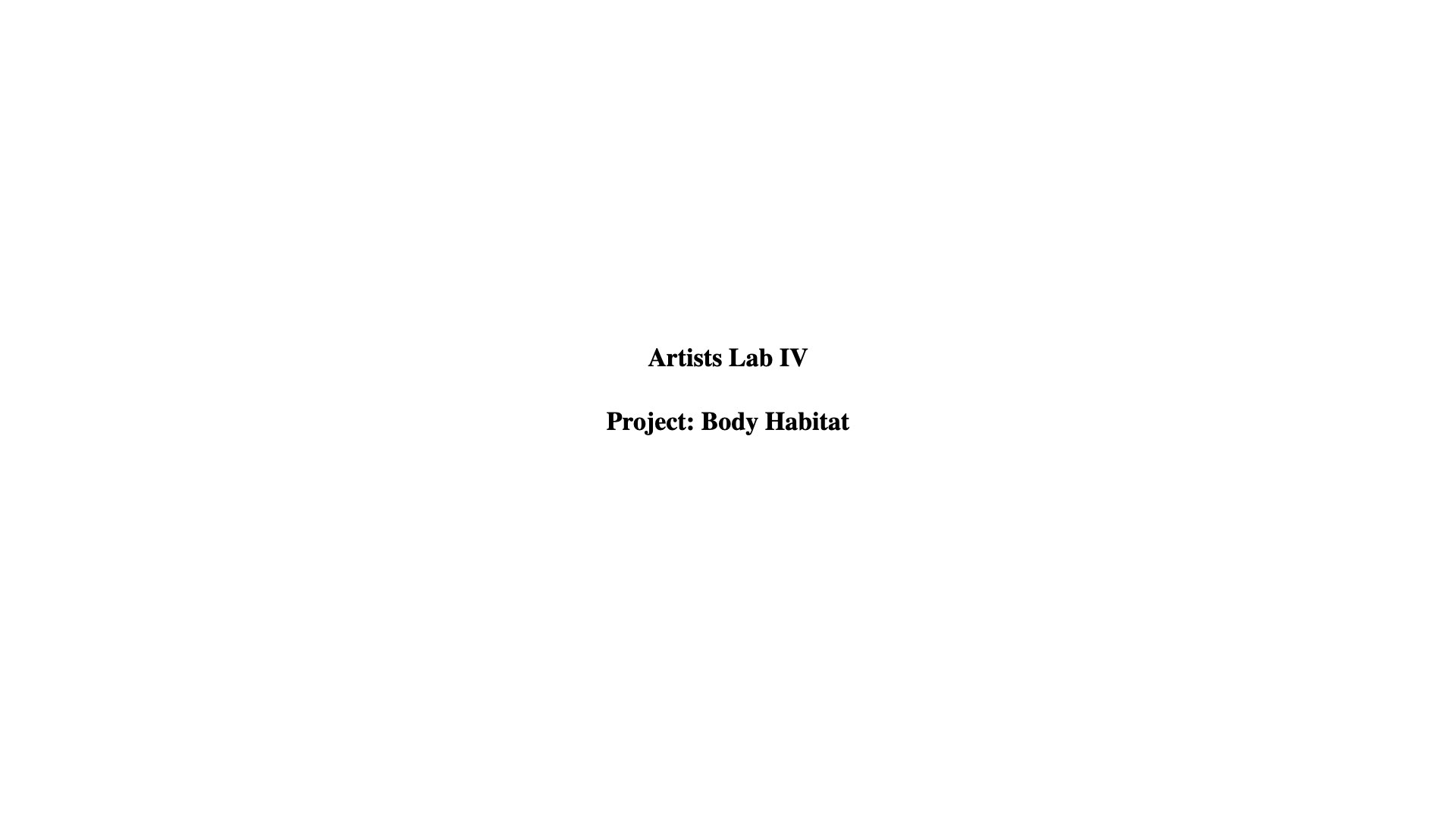
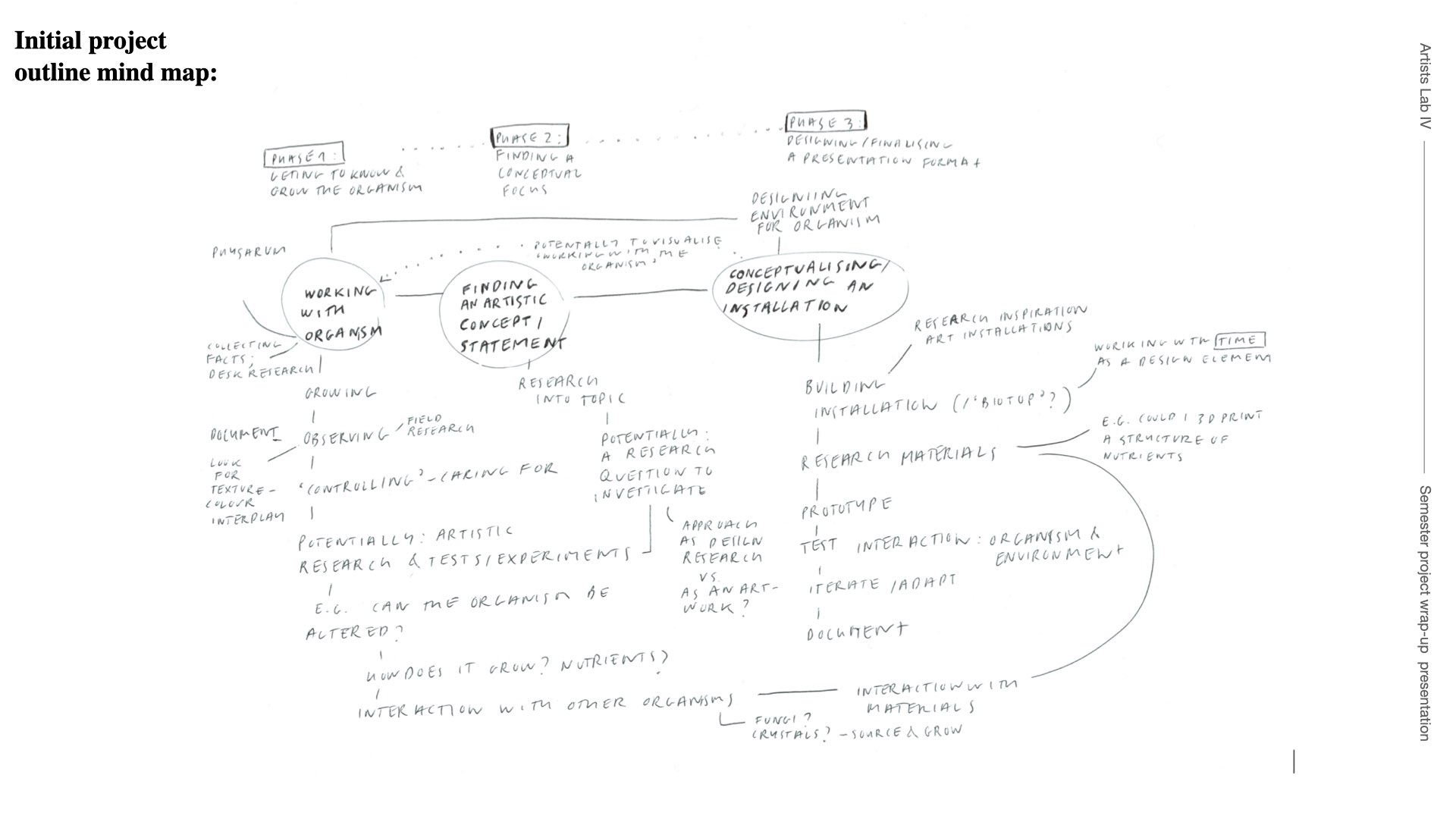
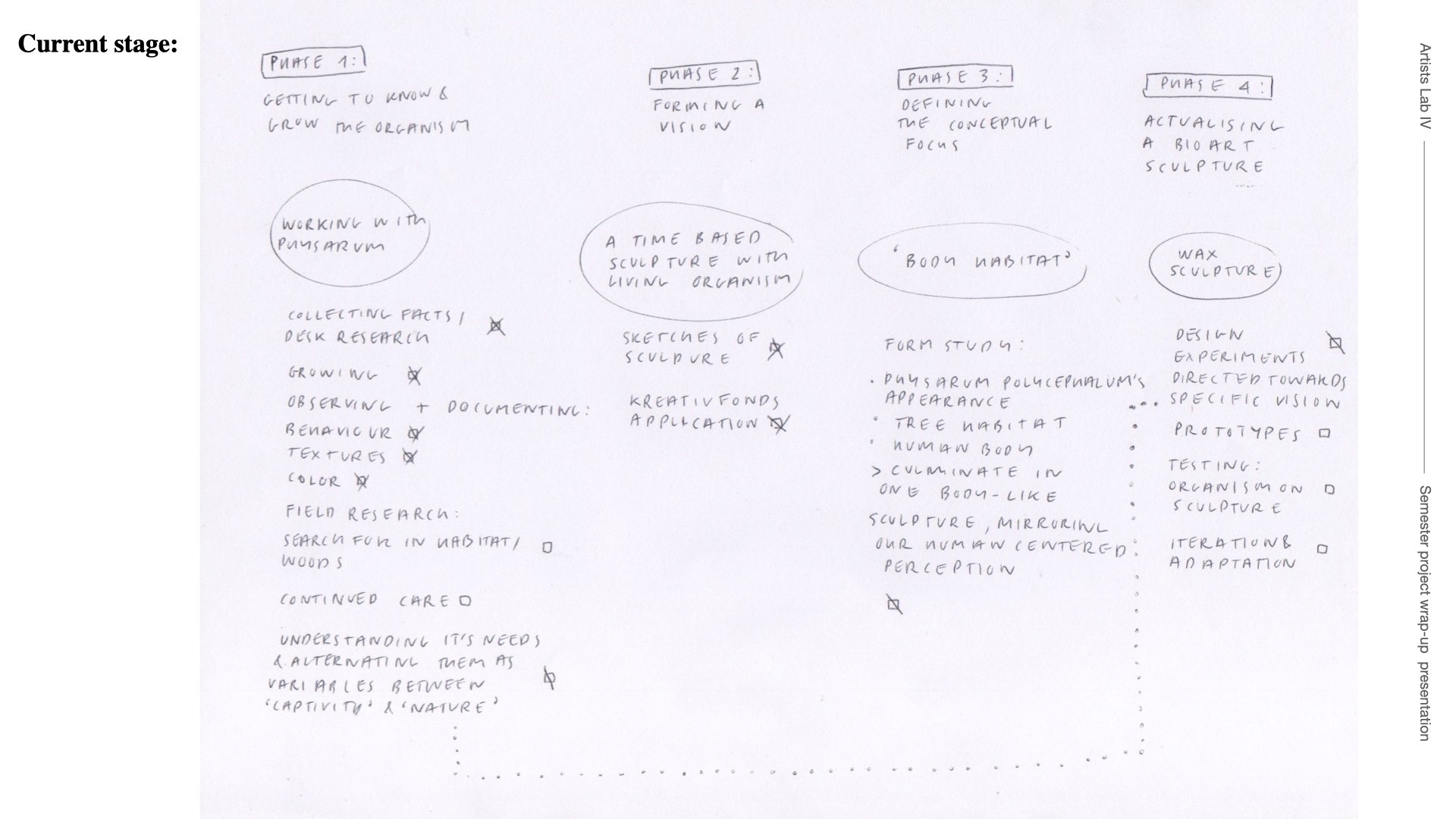
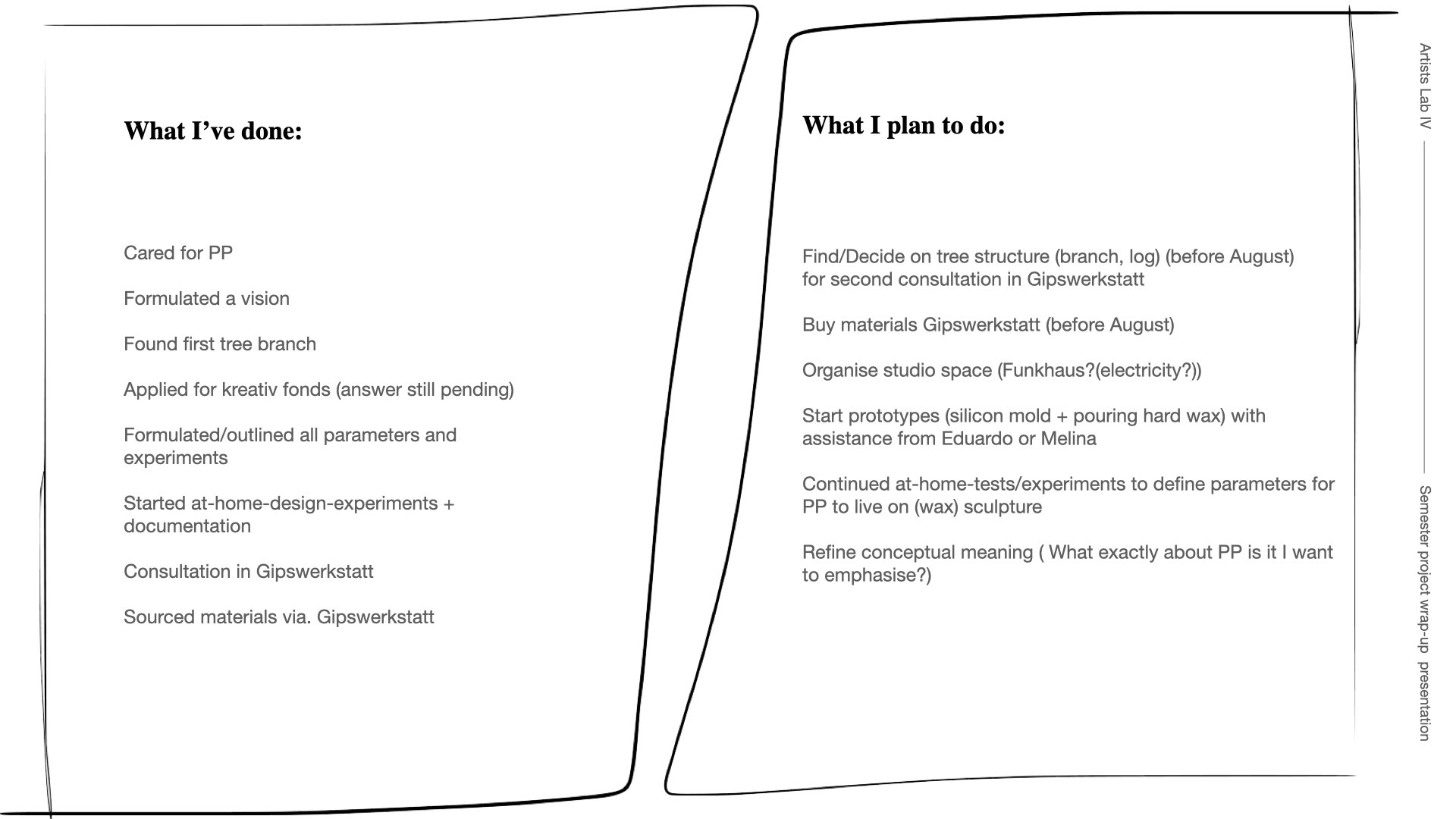
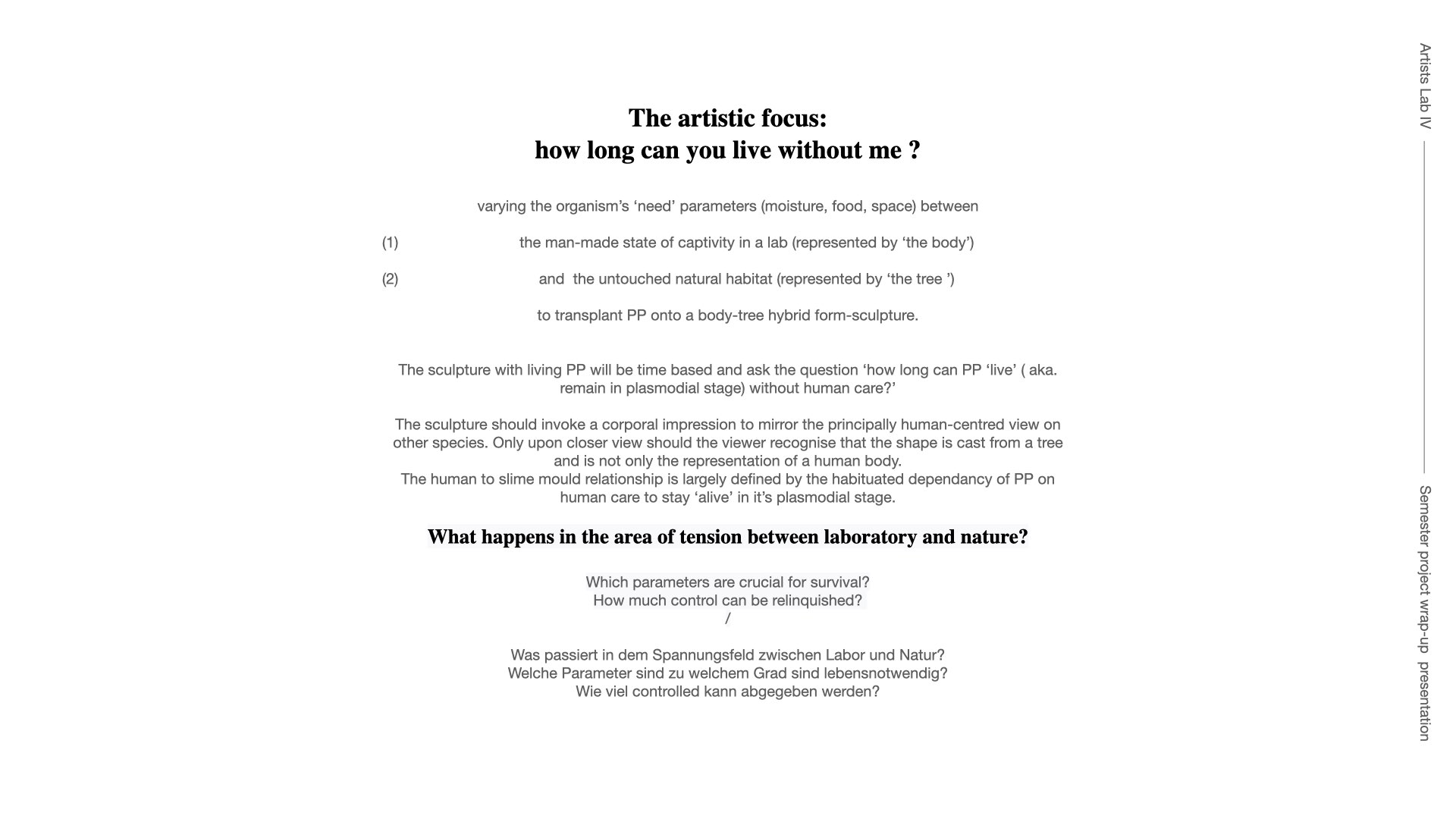
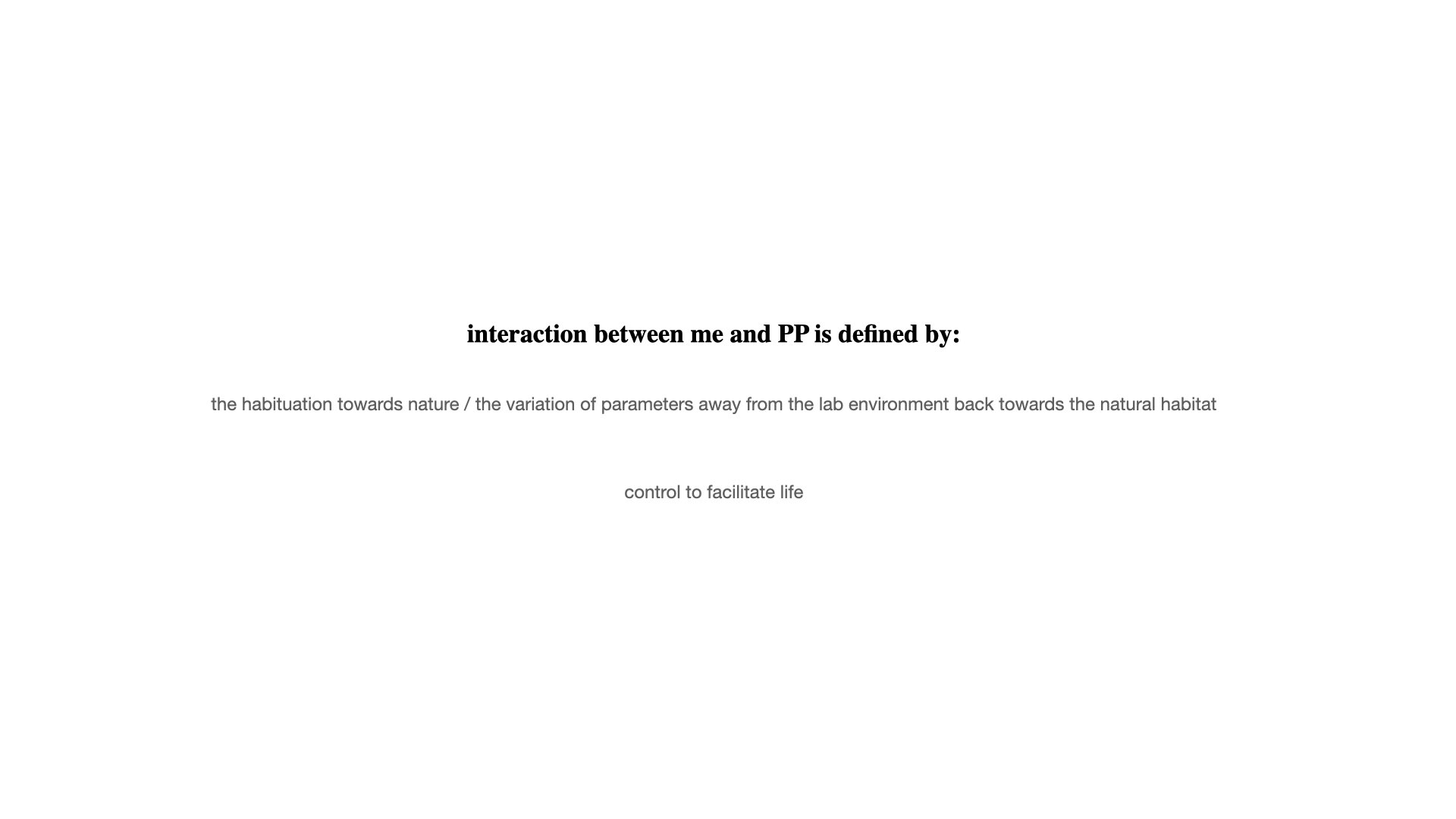
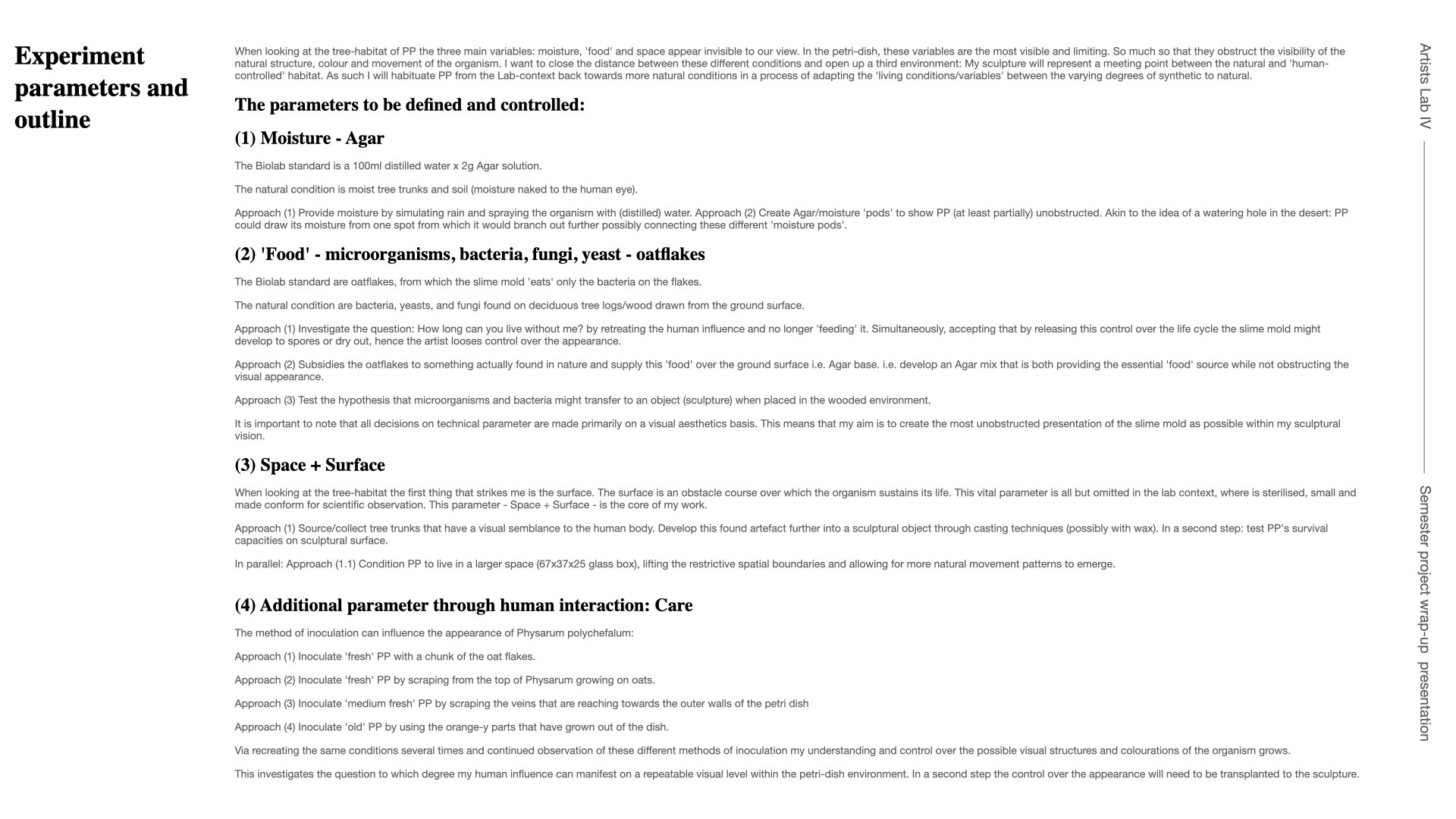
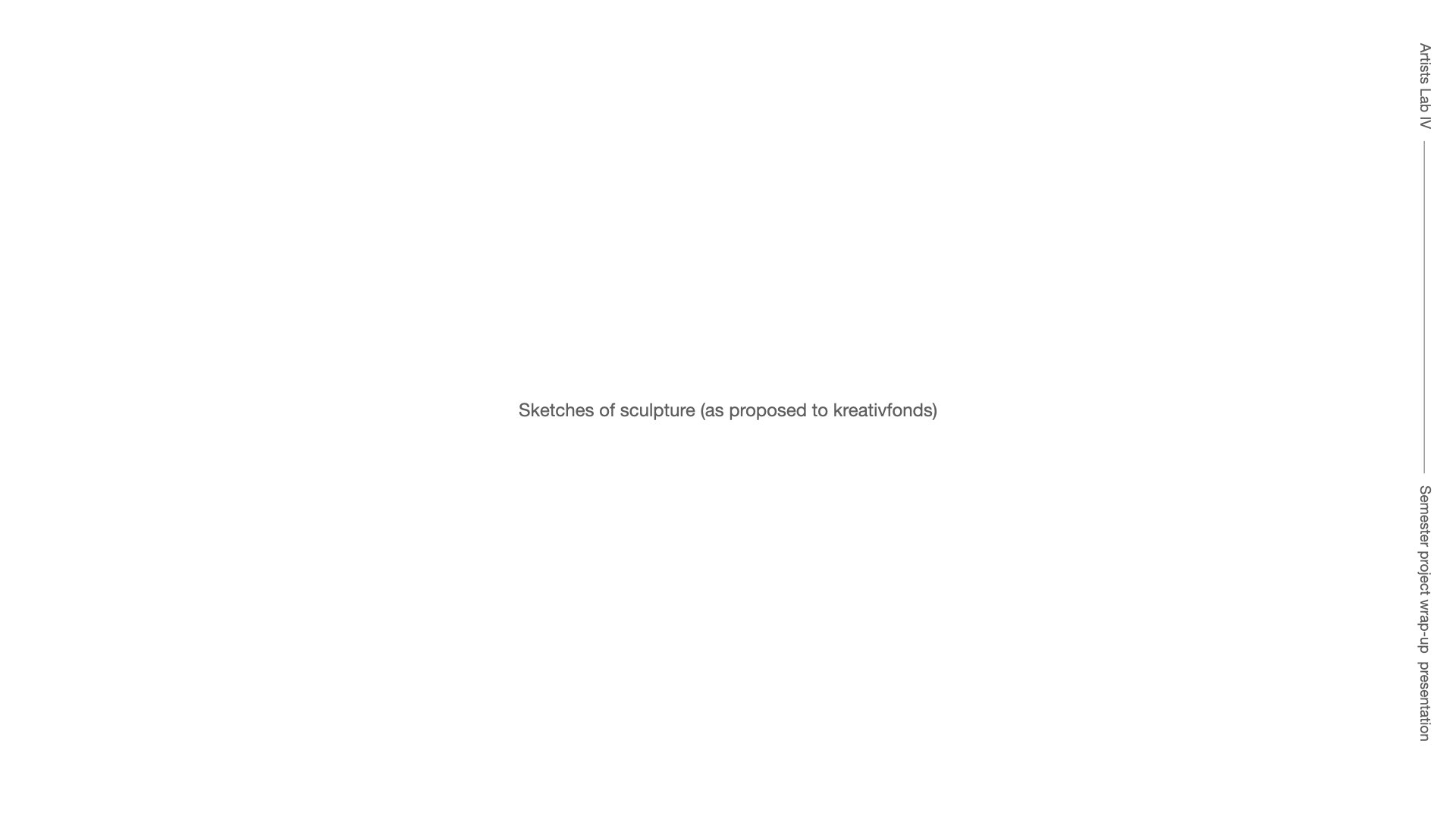
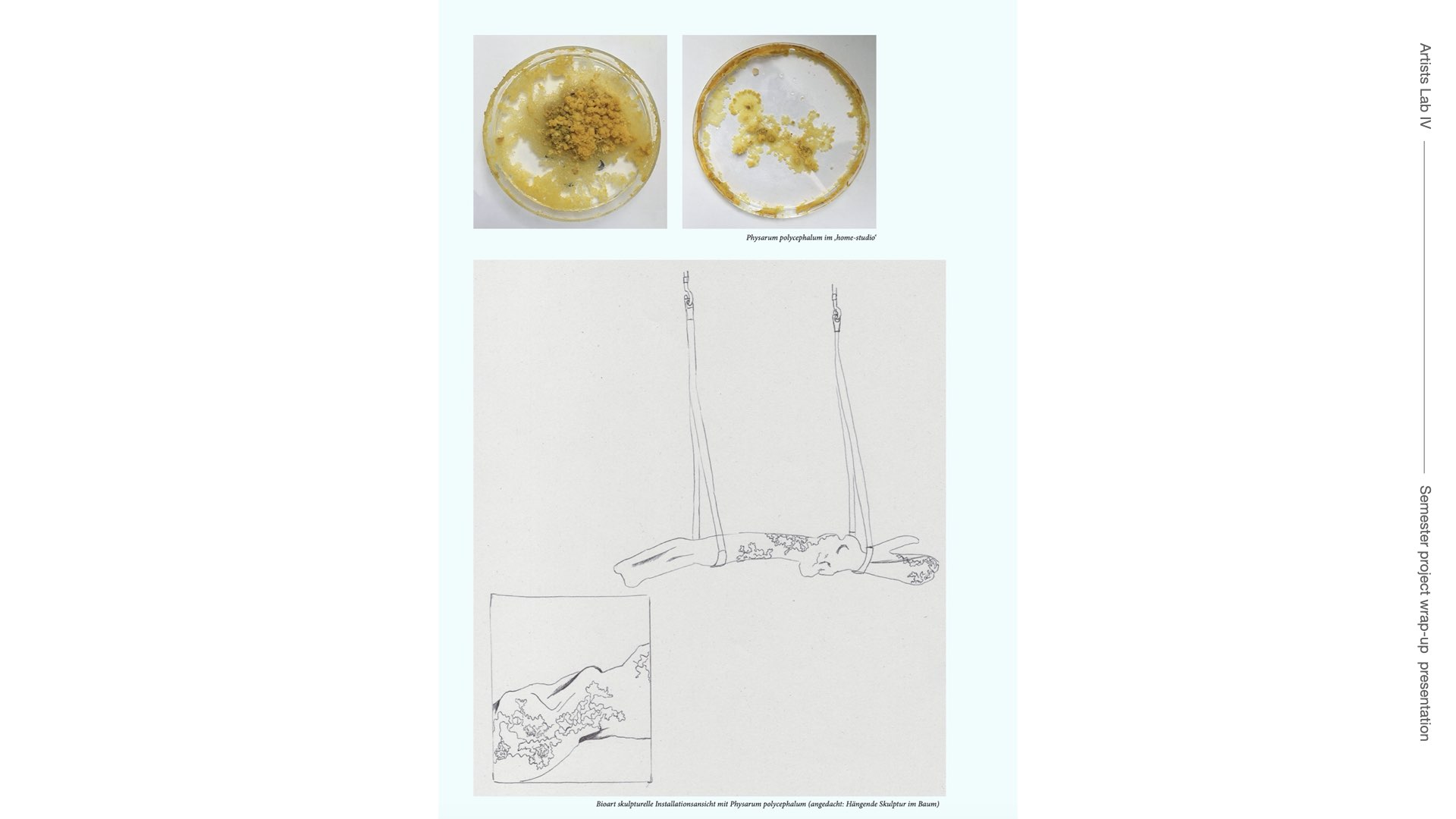
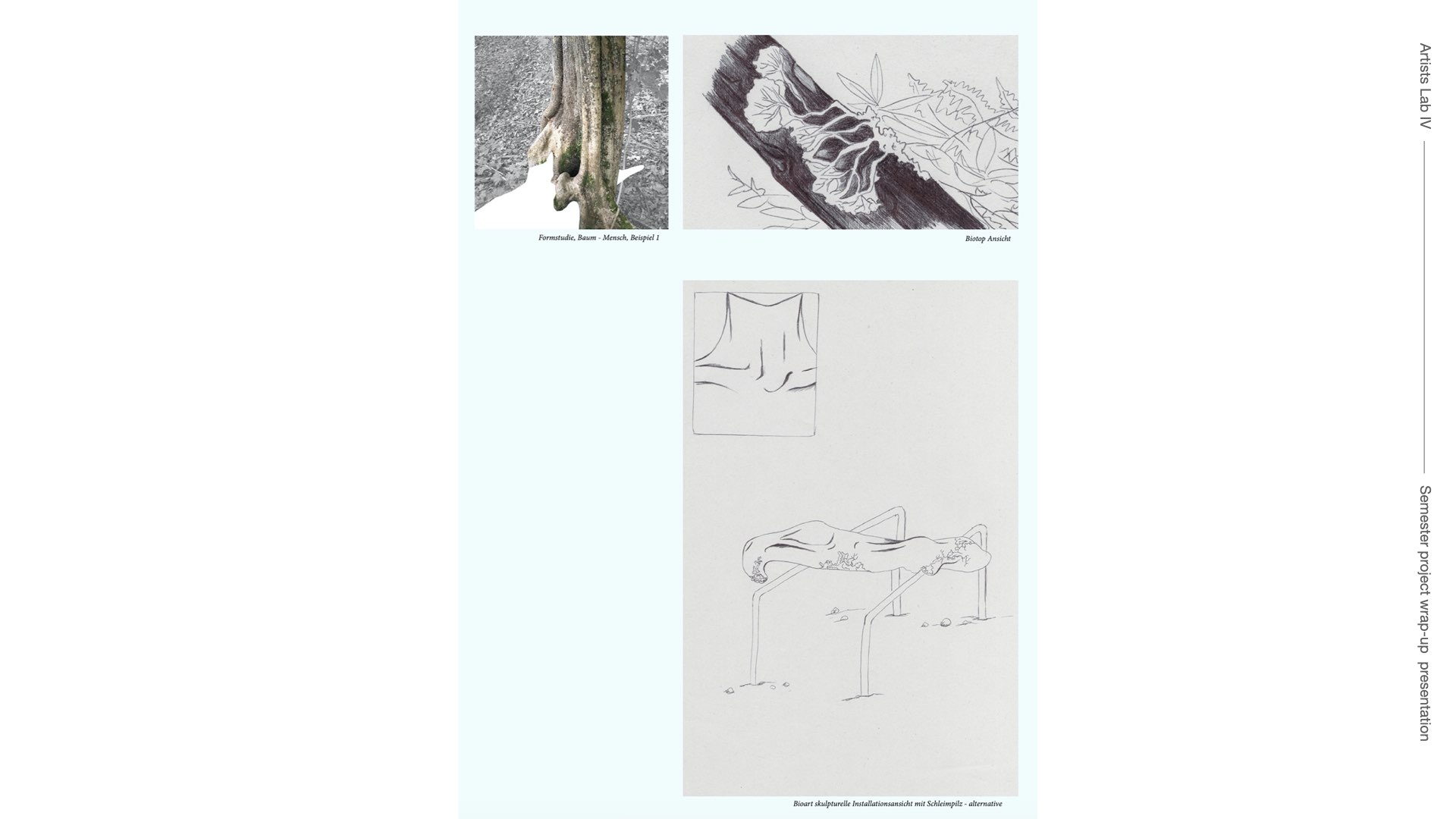
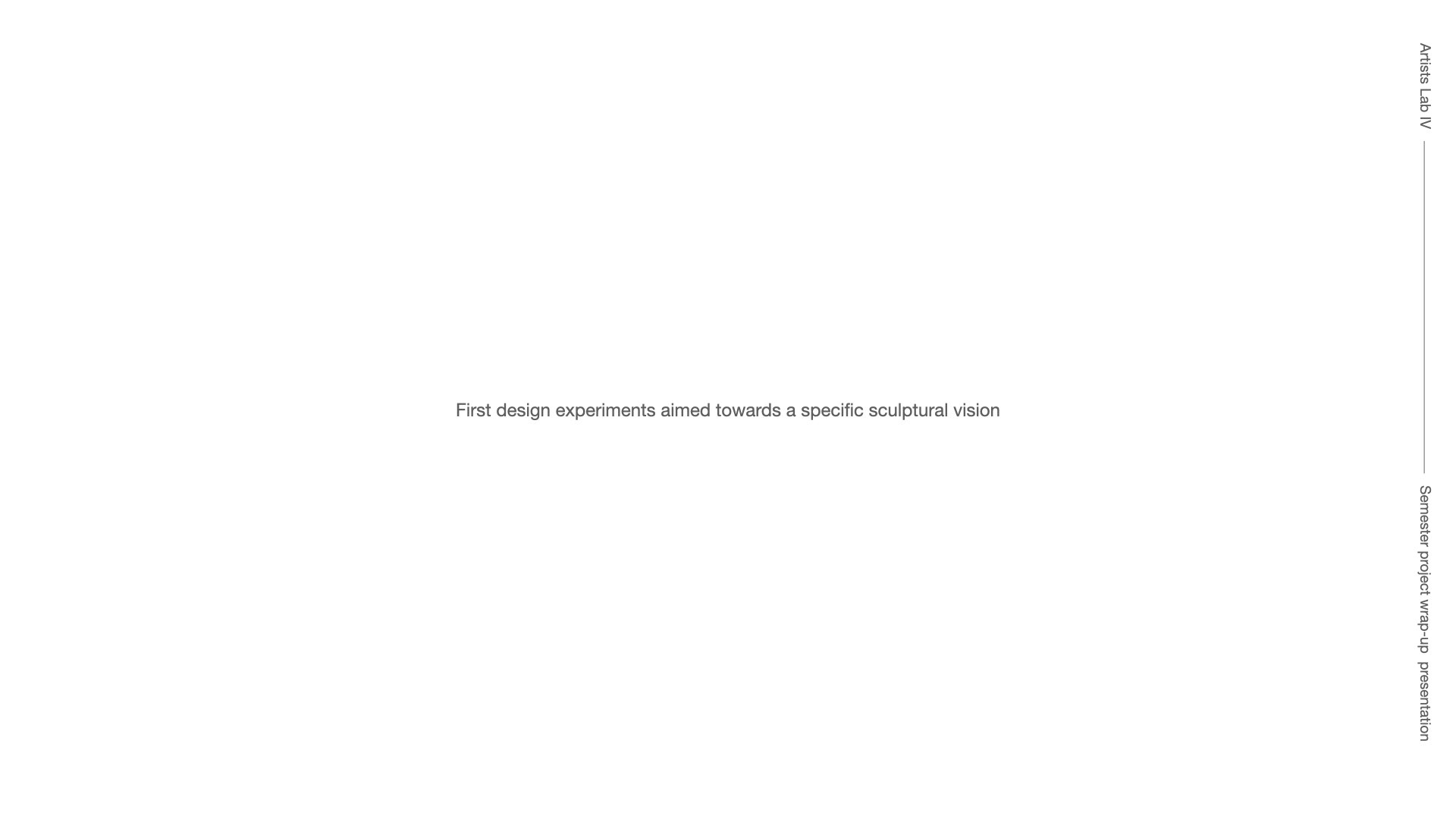
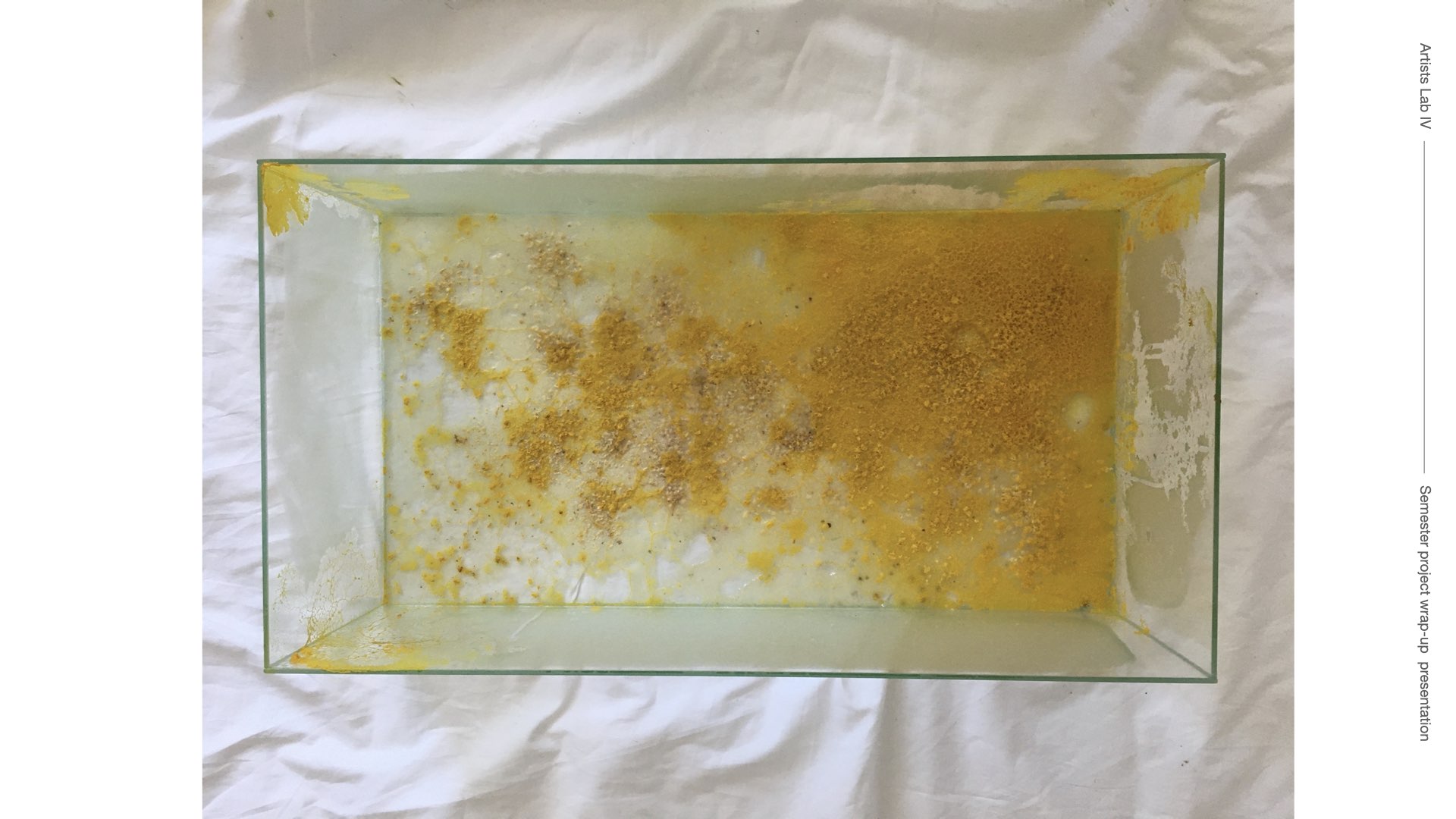
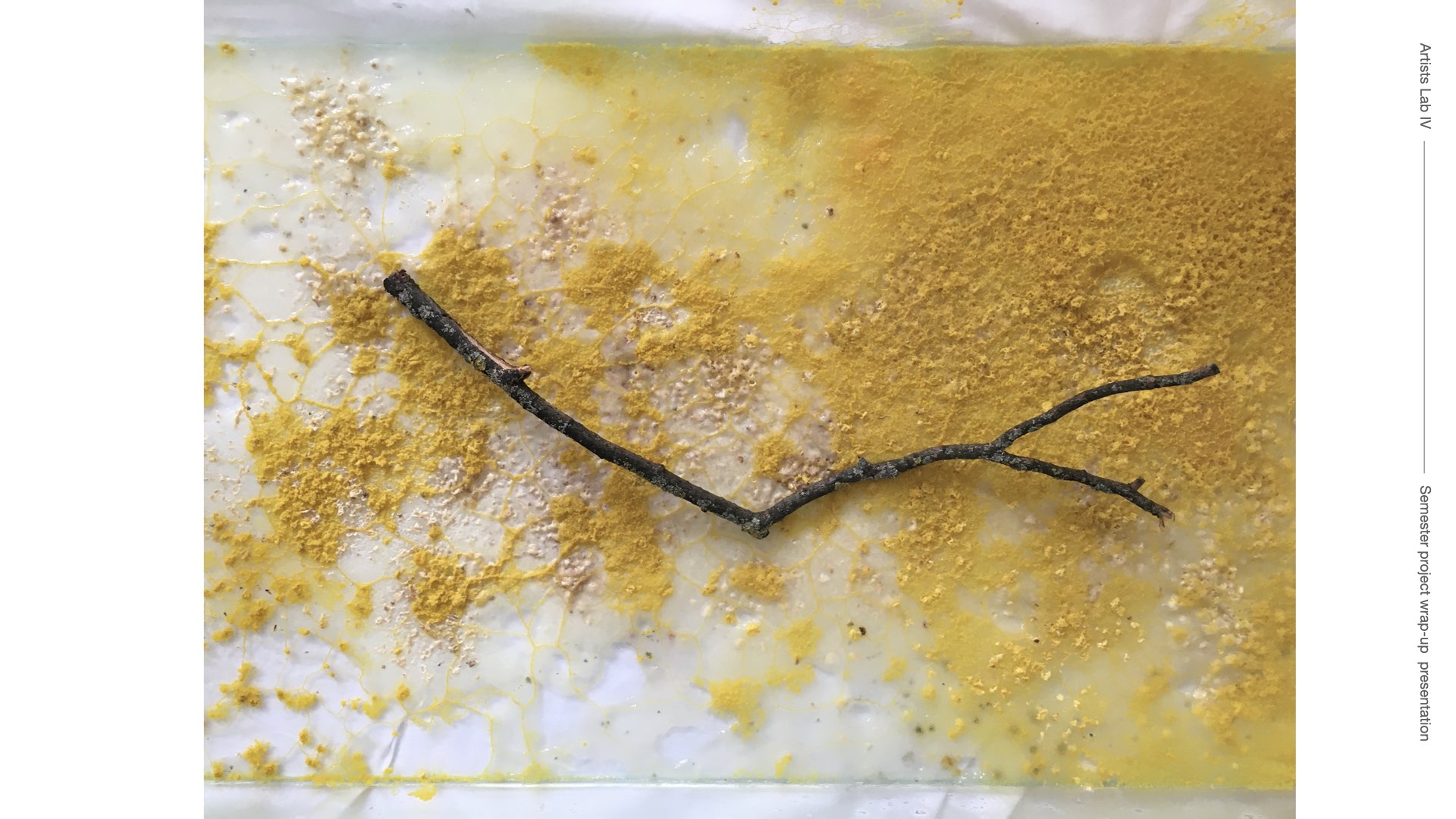
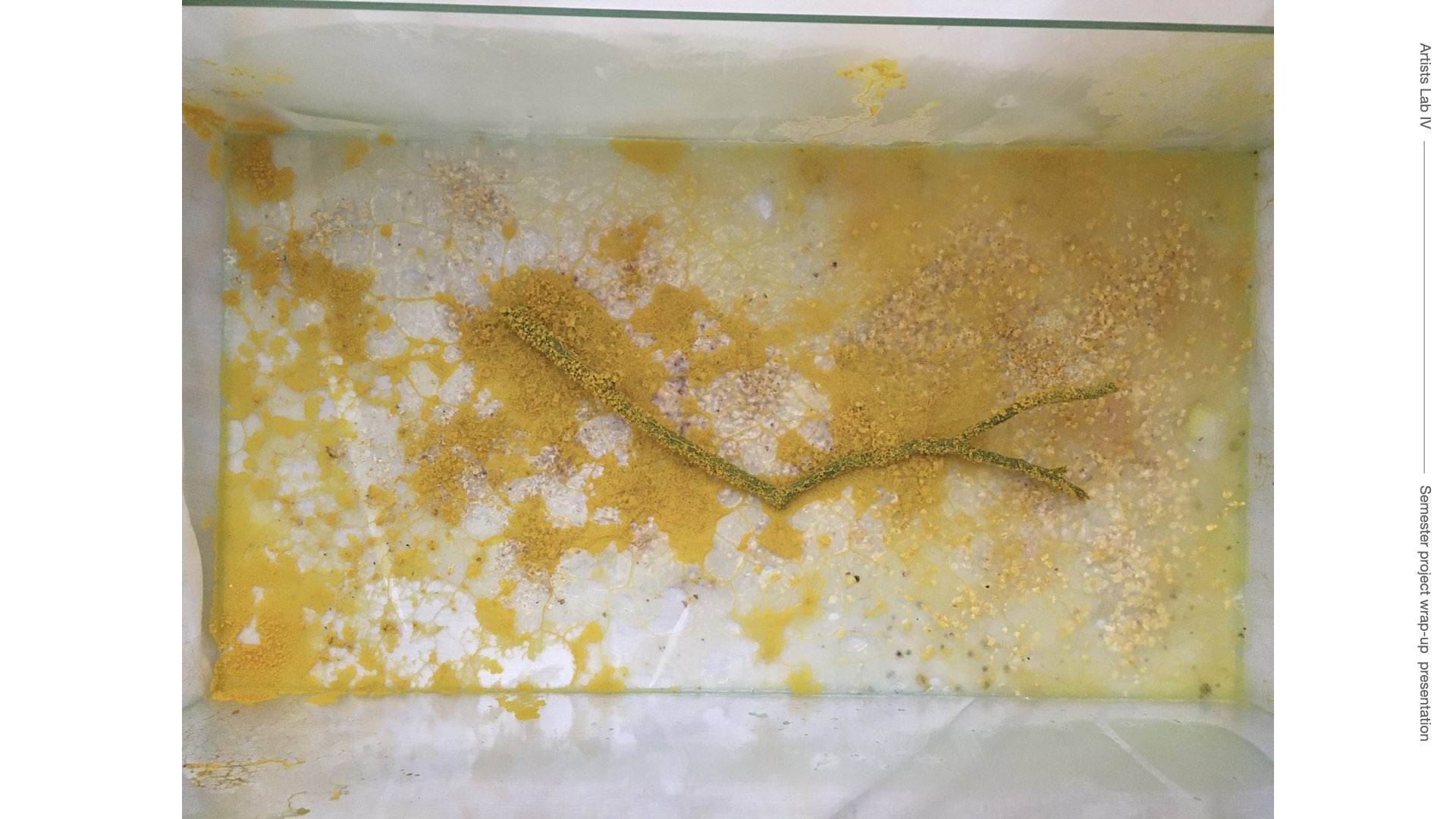
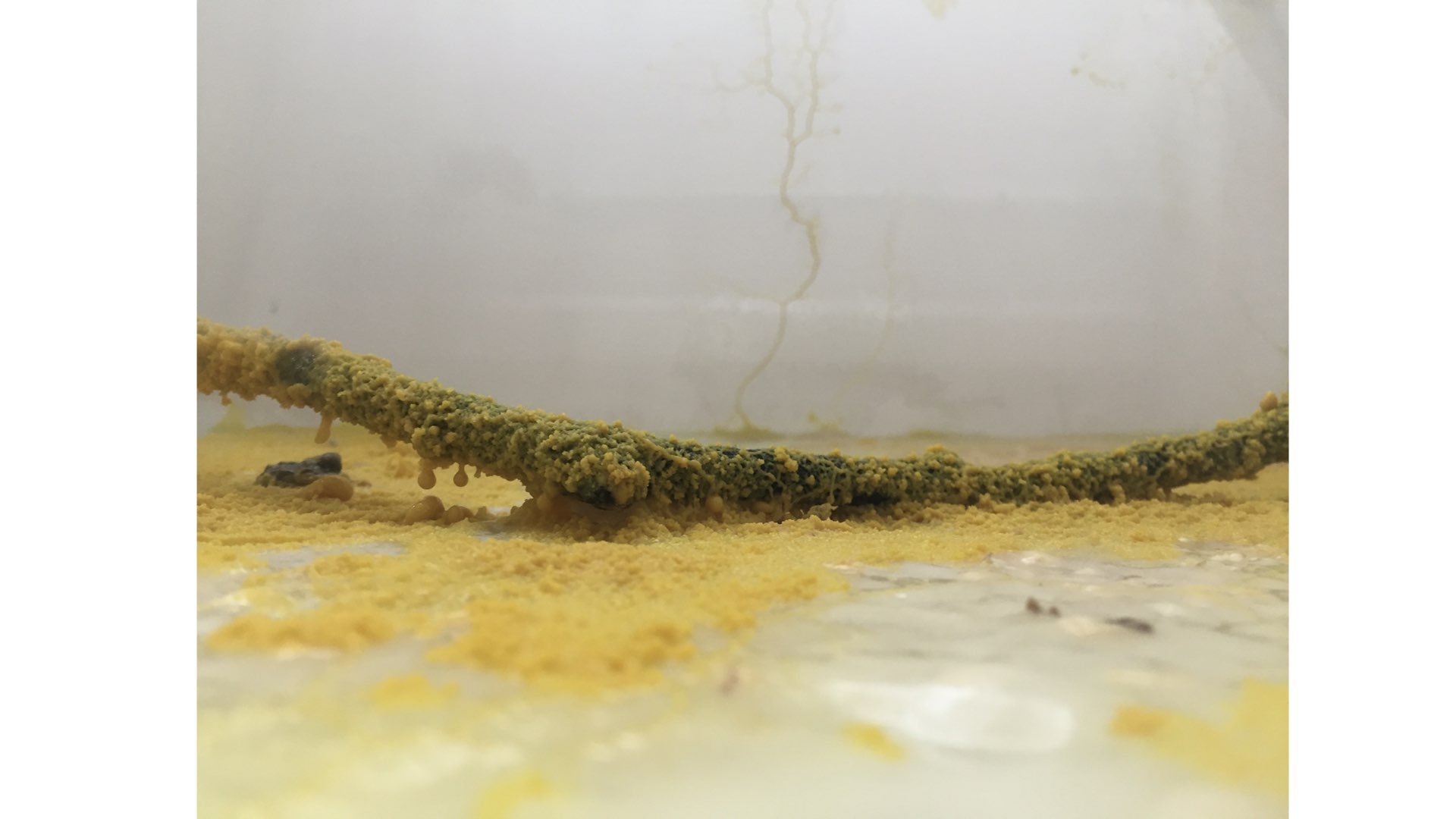

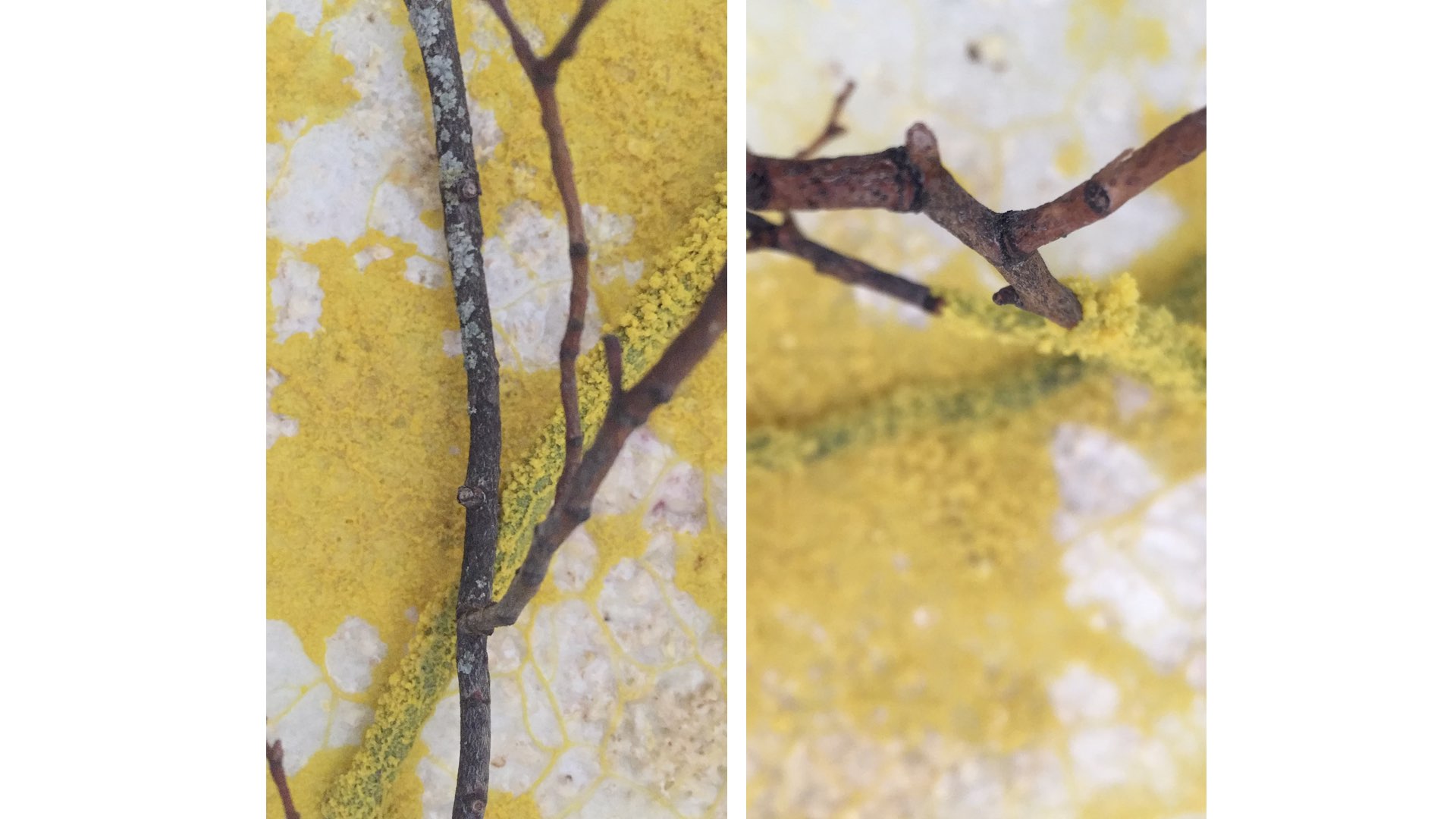
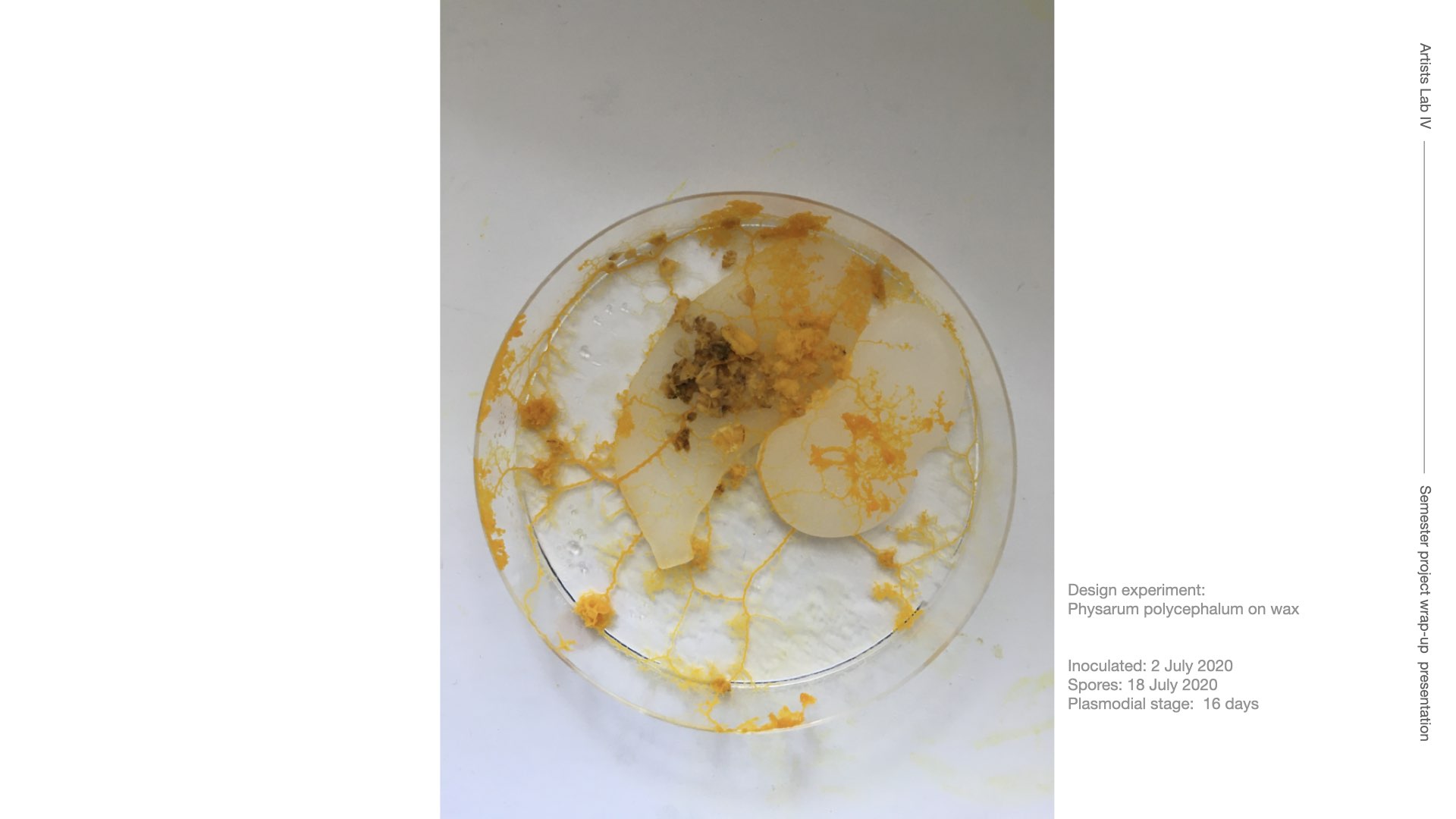
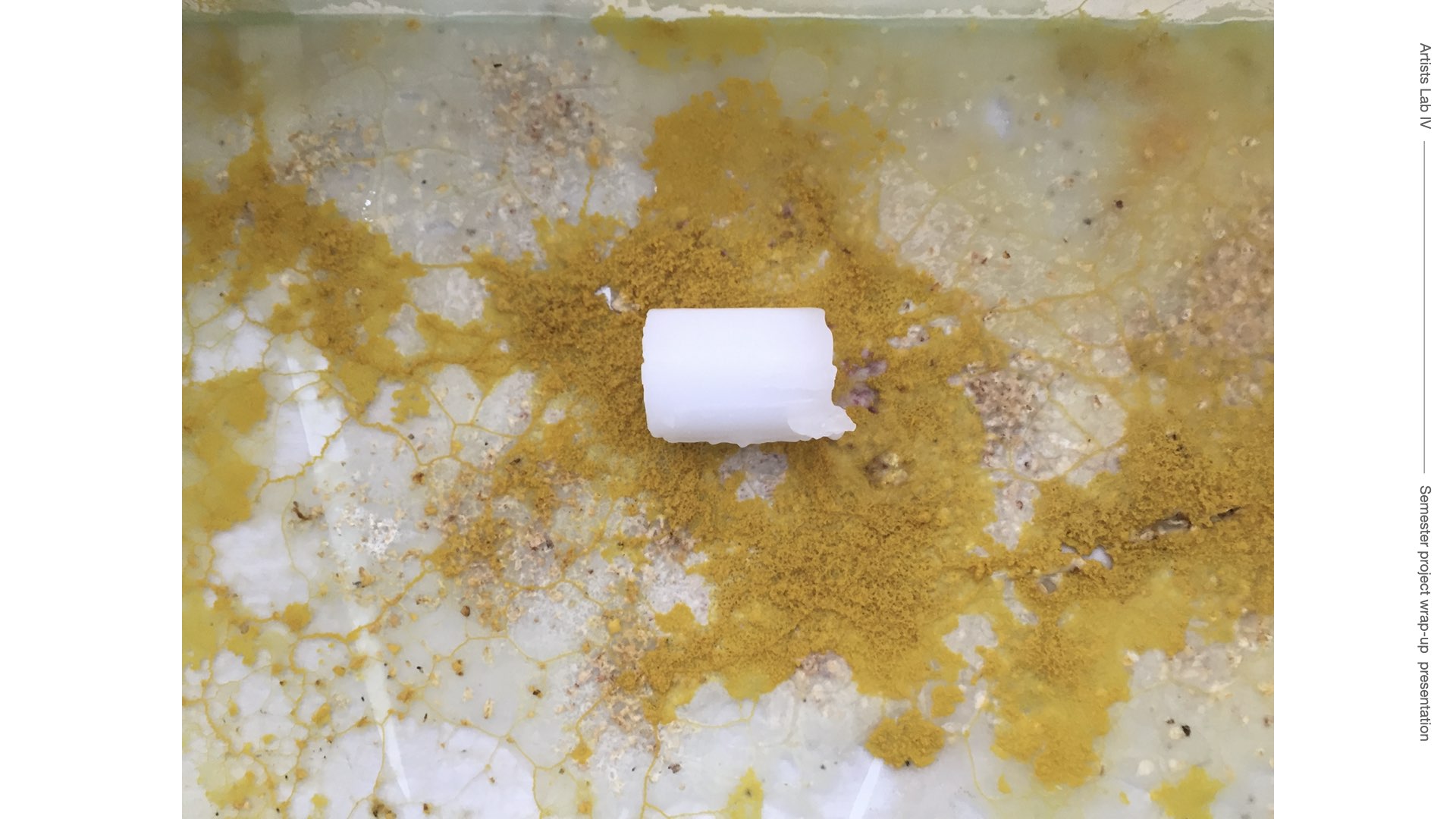
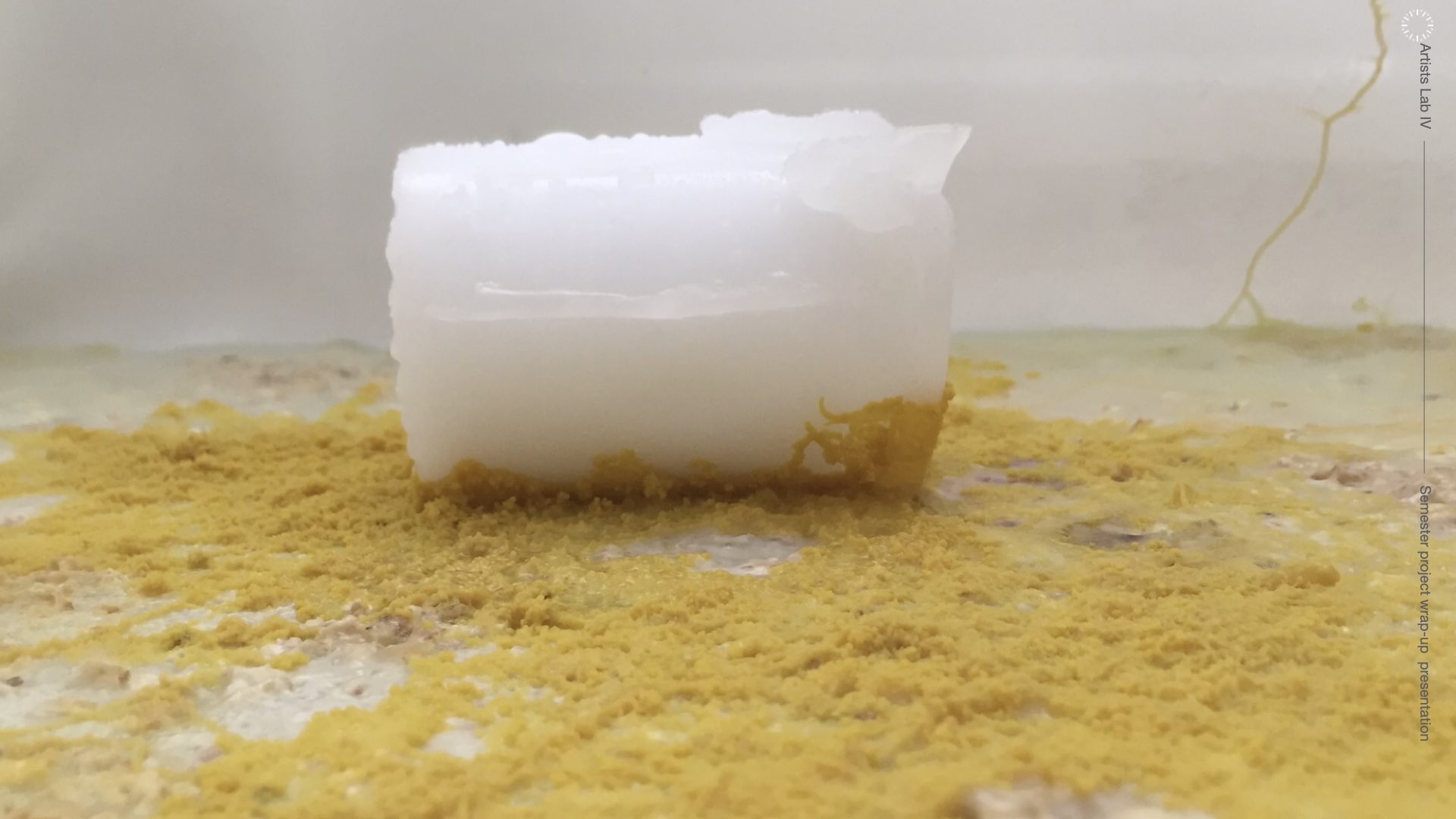
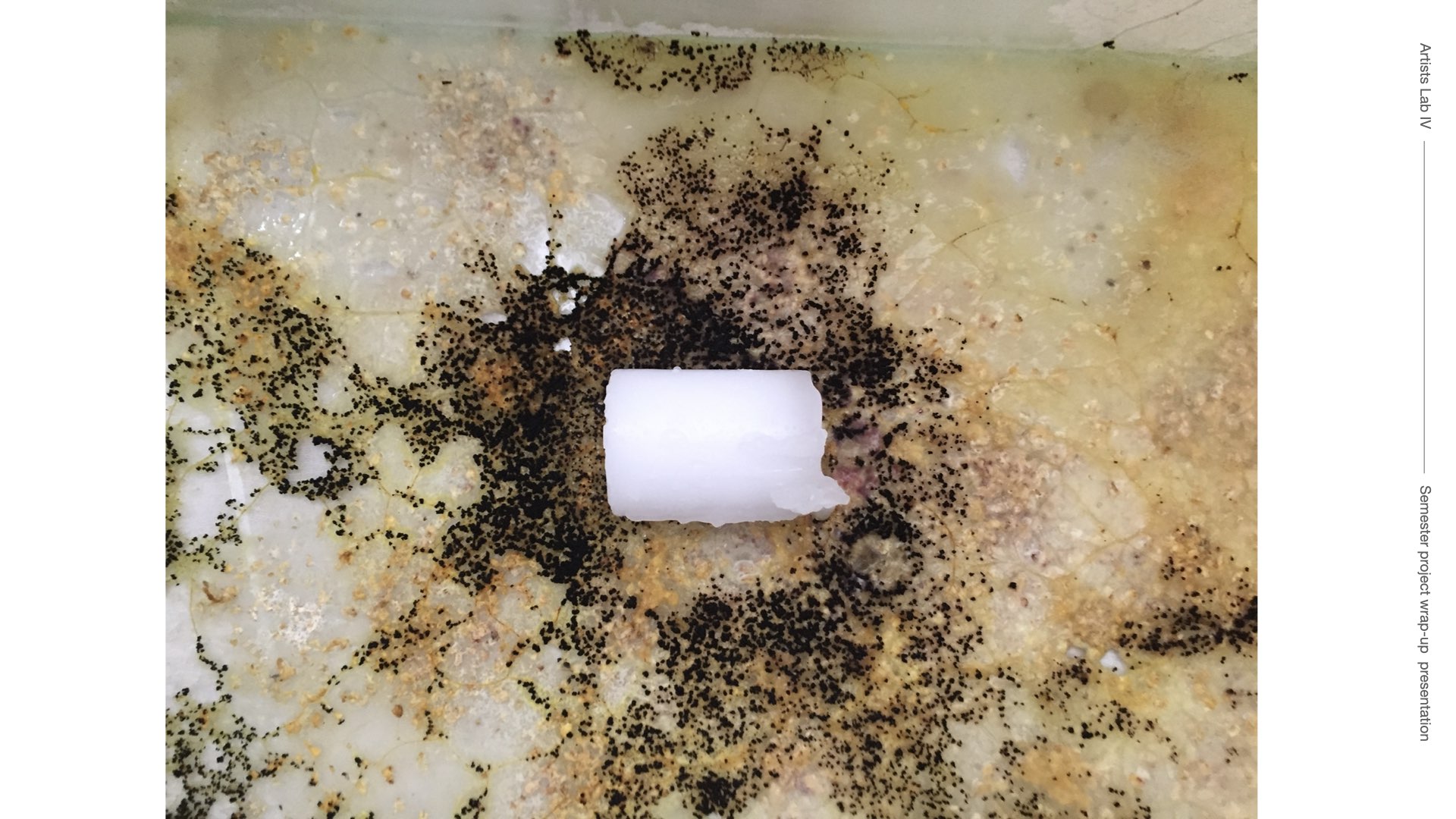
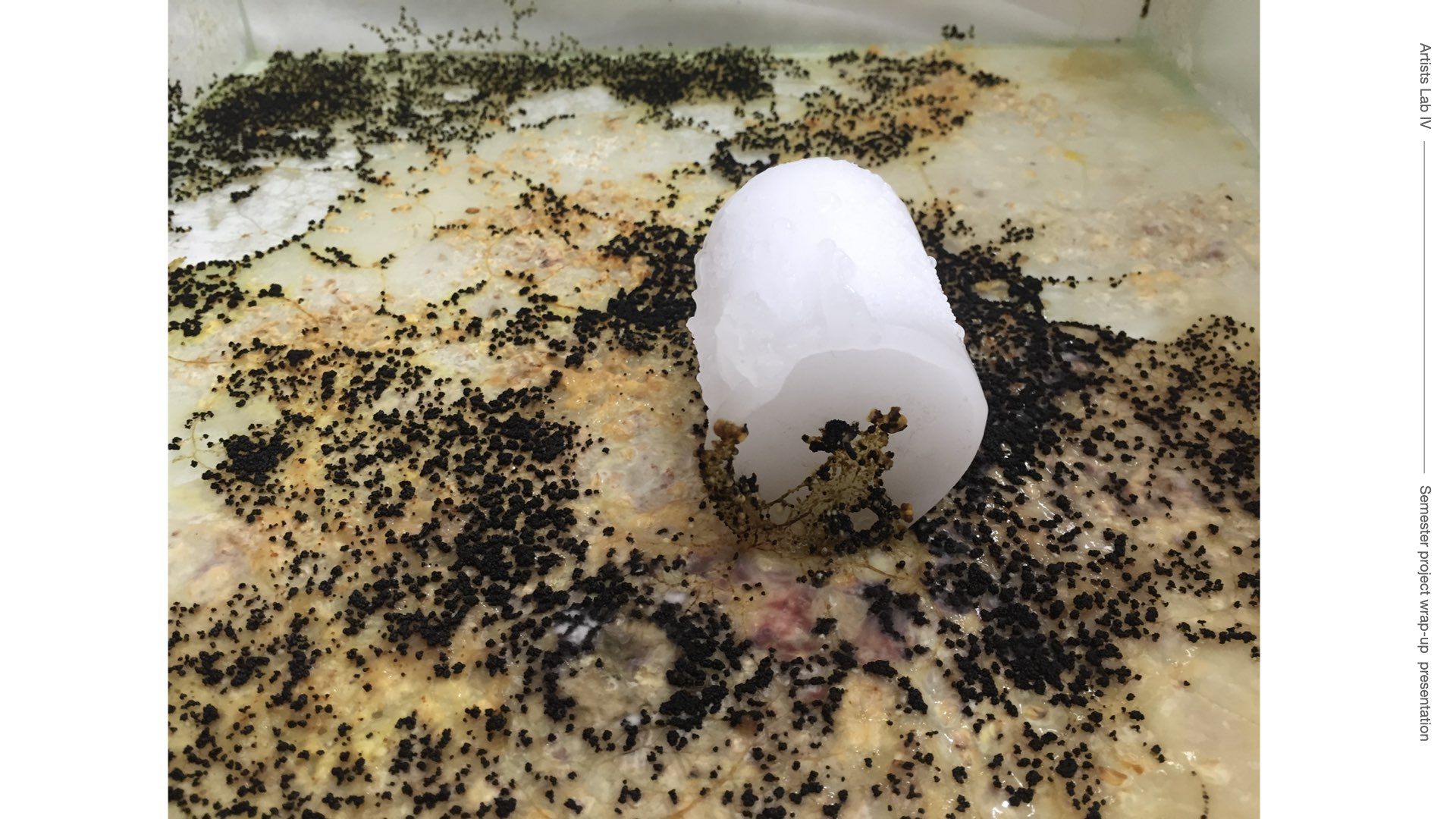
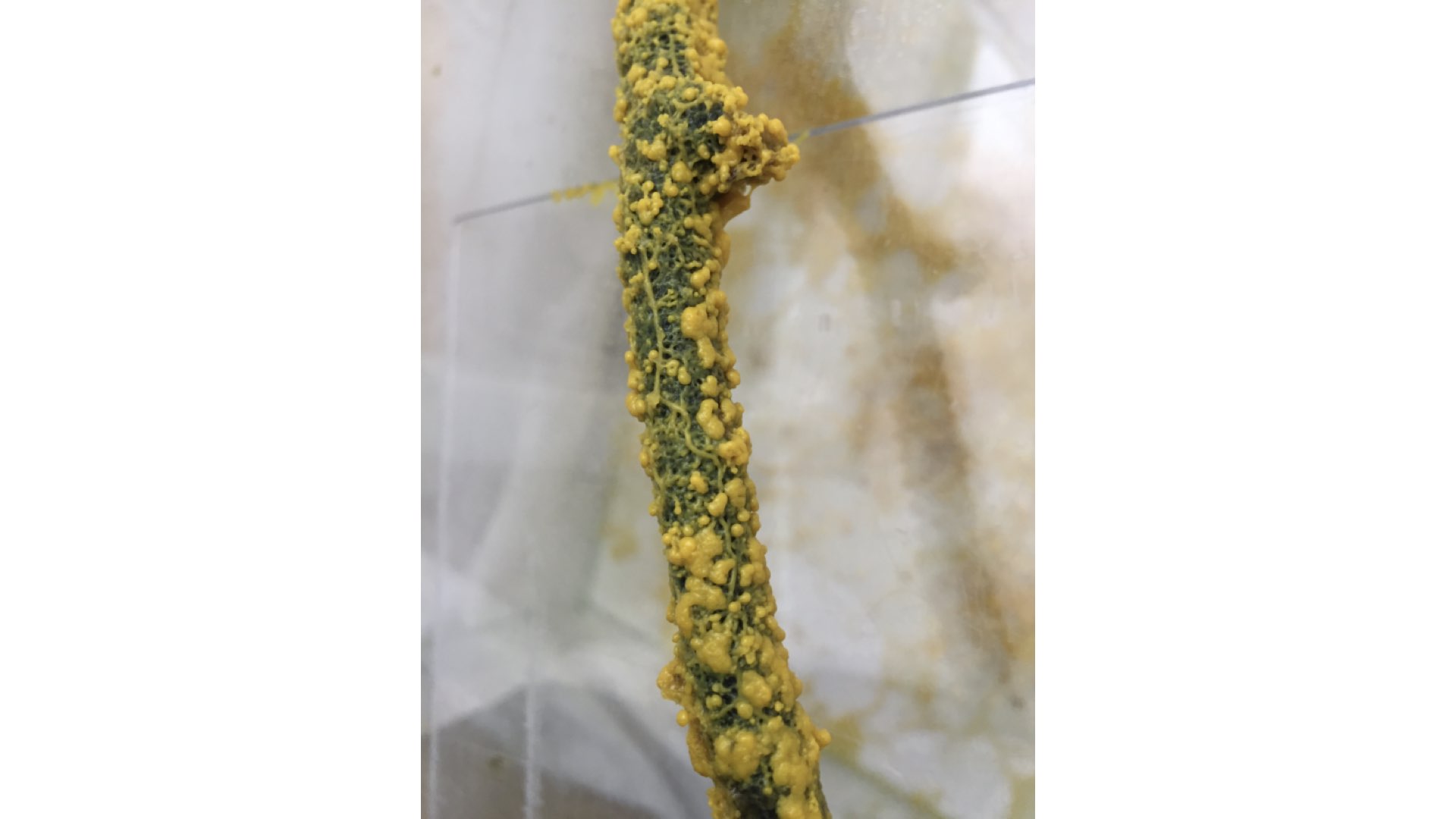
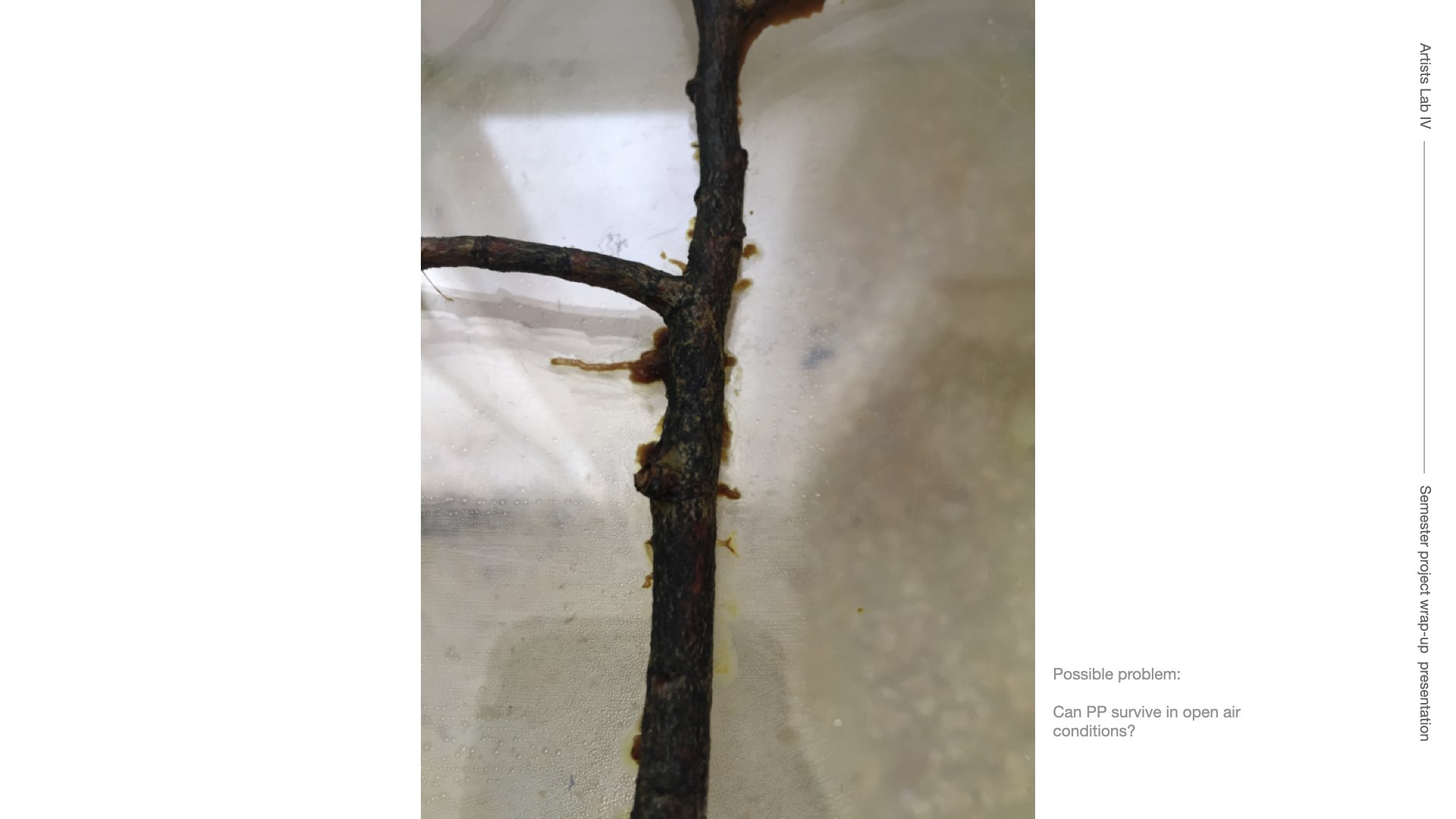
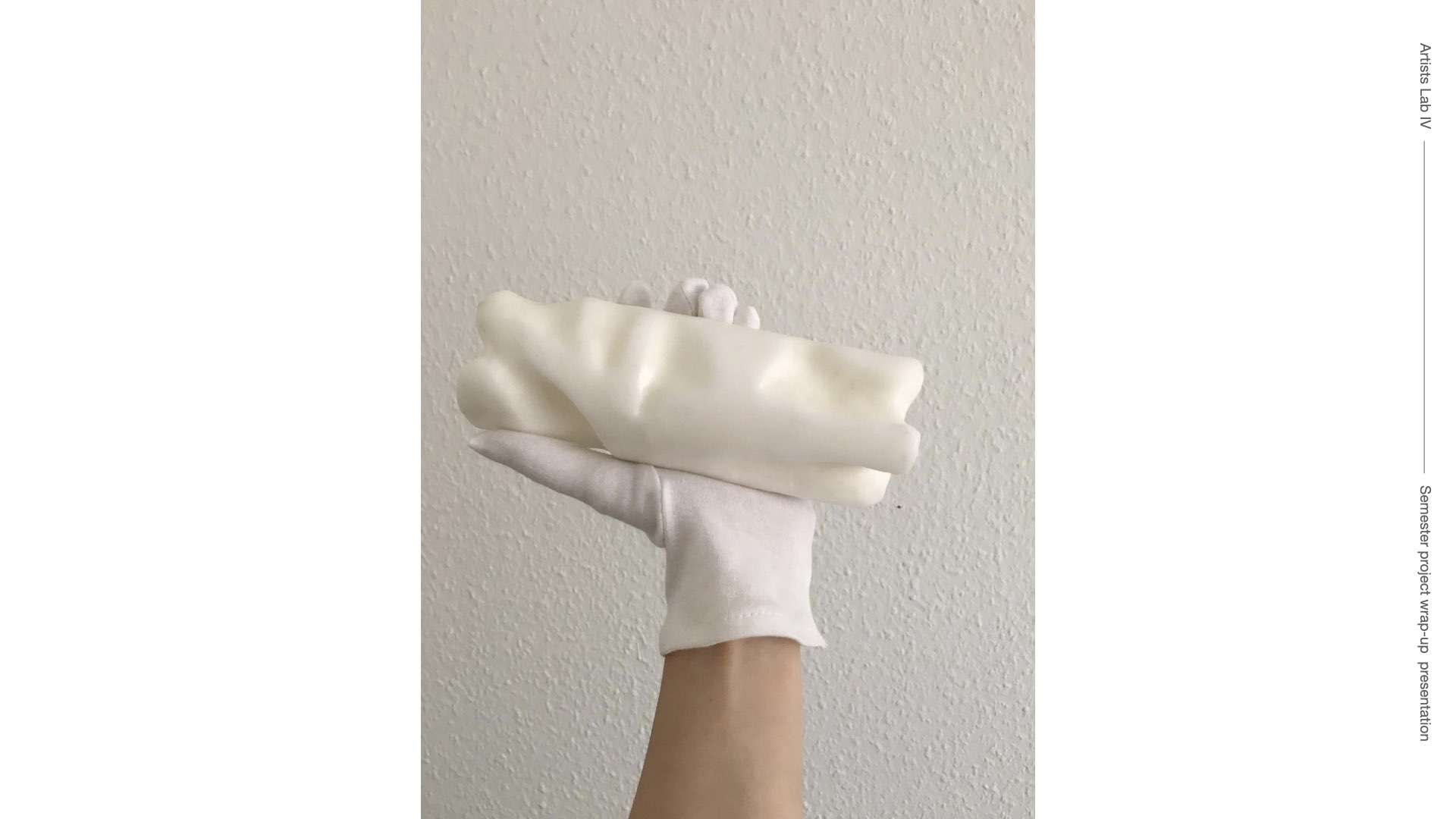
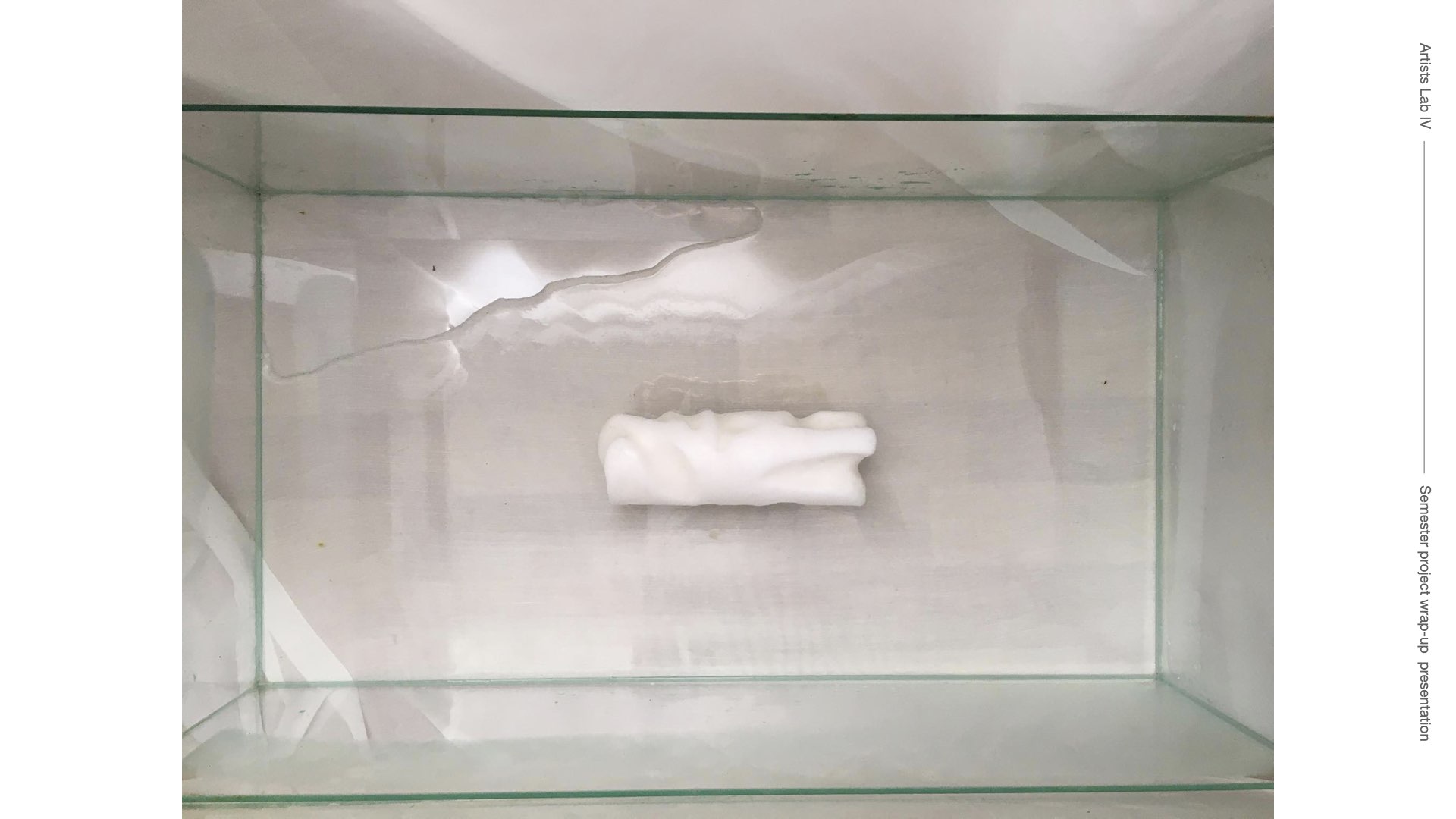

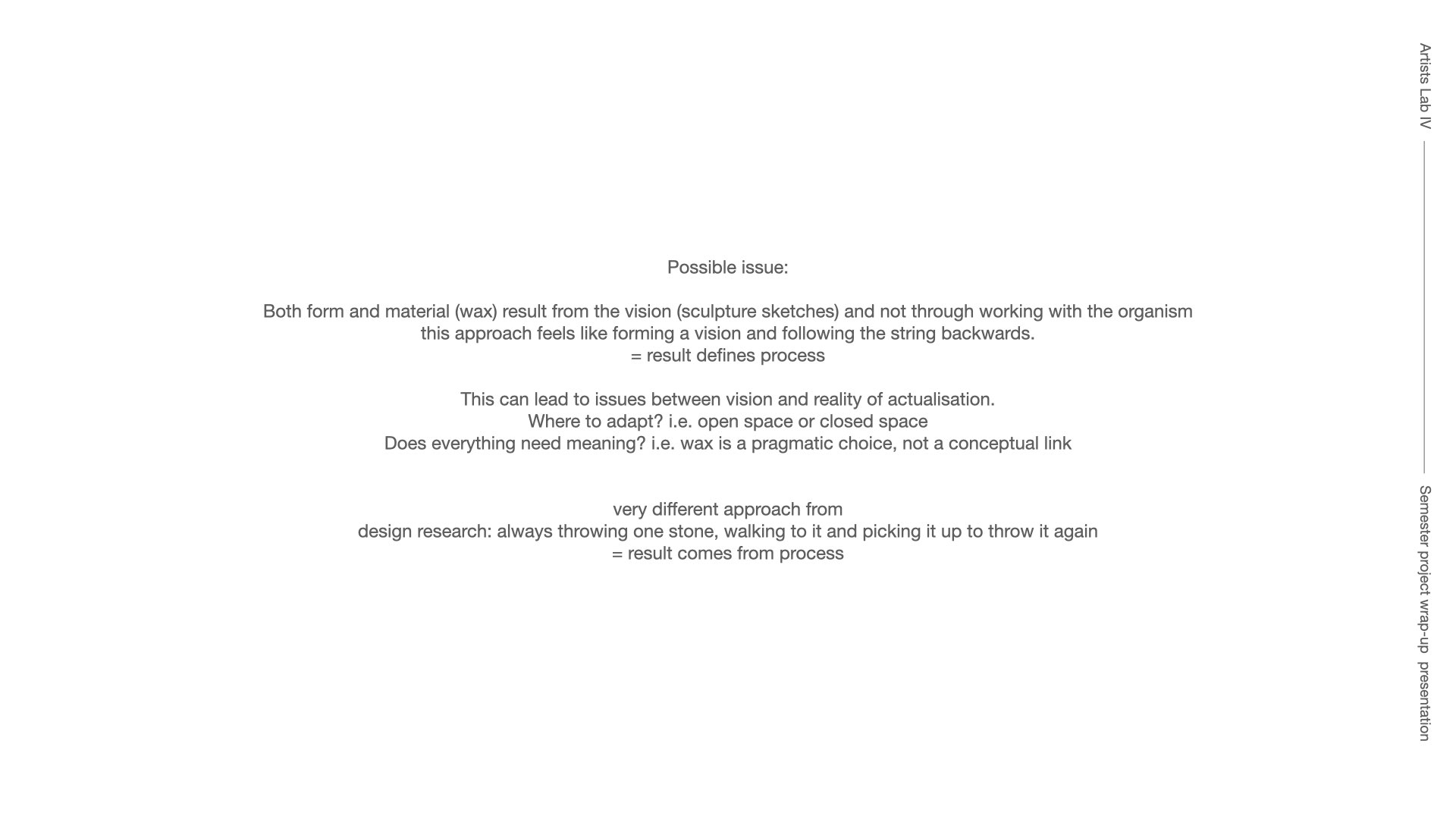
My current struggle was/is the material, because the idea to use wax comes from the practicality of creating the sculptural shape - it comes from the vision.
But I feel like it should be the 'moment of innovation' , the moment of 'dialogue', the MAIN ESSENTIAL PLACE of life, and the component of collaboration between me and the organism.
This is also an insight coming from my experiments; that clearly show me how PP loves the organic wood, it climbs onto it and devours it but the wax is much less hospitable so it doesn't venture there. But the fact remains that just to use wood would also not be a collaboration / dialogue between species. = so it needs to be a meeting point.
However, Liz said; Wax is a material for the preferred language of experimenting in sculpture (Bildhauerei/fine arts) so it does make sense to use it. But can I create a meeting between the preferred environment for the slime mould not just in visual form / shape of wood but in the material itself! Because PP doesn't care what the surface looks like, it senses other aspects of hospitality (which I will have to continue to define).
By innovating the material the project gains substance beyond the purely visual showcase; human - tree- habitat- relation.
By adding PP my sculpture becomes temporary contingent.
So much so that I should really reconsider to what extent I can exhibit outdoors, or does PP need to be protected in a glass parameter?
* I also like the idea of giving some information on what might be happening inside the box by adding a measuring device. (temperature, moisture, light, etc.)
Maybe I can try wax + powder of wood? But how can that then still look like a body?
But also: what is the role of the wax?
> creating a form/shape and having control over it!
> non living compound
What is the expression of the shape I want to have?
> Not a substrate to host the slime mould (agar) but a shape to hold it.
> don't use Agar because it rotes and smells
Wax types:
> bee wax (potentially friendlier?)
> parafin
> stearin - usually a mix of both
mix in wood?
or oat flakes?
or the organic structures that grow on the wood ?
And also it's totally legit if the experiments guide me into new direction with the material. Keep testing , different steps, evaluating.
> I realise I need to get a fuller understating of PP in nature; because in captivity or in the lab it's living in plasmodial stage all day, every day.
But in the nature it's only 'living' in plasmodial stage for a few days in certain months in fall.
Ursula Damm, final statement: Project is promising - very happy with how far I got this semester.
+ I GOT THE KREATIVFONDS -!
Last session Feedback
Reminds of over aesahetised forms ' Mathew Barney 'Cremest Cycle' (*crazy to get this reference for my work again!)
wax - form - purpose; glamour, aesthetic impression
likes how the form also comes from the necessity/idea to create agar/moisture 'ponds' in the shape. #>> meeting point : sculpture + PP ; form + ponds of moisture
If I look at the stage of PP I'm not talking about death. To not think in binaries, to think rather about the in-between; Delouse; in transitional stage - moving in cycles - Karan Barad
Also something to consider that even PP in nature is not without influence because of the influence human's have already had on the ecosystem. What is natural anymore?
My position in the world needs to become more clear: What do I think about other species? How to I relate to PP?
Another idea that came up was showing how PP leaves traces - that their is an effect left my the living compound on the non living compound through the process of hosting it there. - continued living in cycles, leaves traces , something changeable? , sculpture becomes time based, sculpture as a place to live.
Last session Feedback 'if organism'
From observation - on fresh Agar you can see traces of PP's movement; I like the idea of trace and collaboration.
This is something that could take shape in the colouration of the material:
what if Physarum had a biochemical reaction with the surface and created a coloration on the sculpture?
As coloration in general of even for instance of body bruises is necessary to create the bodily impression I am seeking.
> Idea: to as in the slime co. group if anyone has experience or knowledge of PP's chemical composition and possible colour reaction to other compounds?
> 'colour' tests used for PH value? not the strips but the liquid?
Coat the sculpture in PH identifying liquid?
How might Physarum react to this chemical?
> Or: simpler: as seen in the image: Physarum on a smooth, flat surface with the condensed water making the movement traces visible.
Traces in colouration
For the colouration of the object/sculpture itself it would be good to have something very faint so that the yellow of Physarum is well visible.
This wax sculpture doesn't look like it was completely coloured with coloured wax ( *could buy at Fricke) but only blue-is in parts.
Skin is unique because it is not one-tone.
It feels alive because it shows layers of muscle, of veins, of use, of blood, of time.
Especially the places of use and transition, the foldings of the joints have different colourations.
Blood collects and changes the colouration of the food as it's planes move from vertical to horizontal.
Bruises and scars leave traces of time in the colouration.
small creases in the skin are traces of time lived.
How can I transfer this very nuanced and faint, detailed colouration onto the wax?
> Fair: almost white with spots of reddish pink and blue colouration.
Looking at colouration
Body joints mark places of movement, of the potential of the body's anatomy. These bumps form the body's landscape.
The collarbone specifically is this place of sensuality I keep being drawn to this shape.
The 'top' of the torso - that holds up the body beneath it almost like a frame - similar to how a clothing hanger mimics this shape to hold up clothing -
This shape marks the transition between torso, 'body' and head , 'brain'
'beauty spots' clearly mark my skin - but they feel like a too personal mark for the sculpture.
The sculpture should be about shape and body/human as concept - it should not be a literal human shape.
Sae goes for the body hairs, this is also to realistic and going into the realm of the grotesque when use din sculpture.
These works by Ivana Basic show how only (1) Colour + (2) Shape i.e. foldings/creases (3)surface texture can create a bodily impression!
But design experiments have shown that this heavy colouration obstructs the visibility of Physarum Polycefalum too much.
Instead I am orienting on this other sculpture by Basic:
Which is made of wax.
> Test colouring wax in small batches prior to doing the full length sculpture.
> the blue colouration reminds of veins or bruises
> the pink/nude of skin and the flush of blood
(1) COLOUR
(2) MATERIAL
(3) SHAPE
+ SURFACE TEXTURE
Bodily markings:
Creases
foldings
bends
scars
muscles under flesh
bones under flesh
veins
especially psoriasis and stretch marks have the guttural bodily reaction of revulsion and disgust I want to trigger.
tree markings:
Creases
bends
scars
slight muscles stretch
extrem muscular stretch
tumour like formations
*thick diameter to look less like a branch and more like a limb
Body markings I have decided to omit:
beauty marks
spots
hairs
pores
How many/which of the tree markings should be kept and which should re removed or smoothed over?
will tree markings like of 'flechten' translate into body markings like psoriasis ?
Sketching made me think again:
How it needs to be outside because it NEEDS this contrast.
If done right my (human) controlled, precise, sterilised presence will be predominant and I need to give Physarum back some space in the sculpture for it to be a collaboration between me and the organism and for the tree trunk to 'make sense' by being visible, immediately comparable with the scenery surrounding it.
There needs to be a contrast between the industrial, sleek, clean, materials I will be using and the organic living matter.
In this way Physarum polychefallum, the organic, the natural component would be the smallest part of the sculpture, the core, the 'microlevel' and the 'Macro-level' as nature would be the environment, the surrounding, the stage.
New Idea: The sculpture could also be a performative piece - becoming even more time based: what if I had one the bent steal rods with the 'incubation' / 'care' glas box and once just the bare steal rods with fresh open air and part of the installation would be to let Physarum grow and live in the controlled box environment and periodically move the wax object to the open air to show it in the fresh conditions...
This would make the struggle between 'free' and 'captured' even more extreme and deal with the question " How long can you live without me in a very immediate, hour, minute, second, based measurability.
OR TURN THE TWO SCULPTURES INTO ONE BY MOVING IT FROM THE GLAS BOX ON RODS INTO THE HANGING LOOPS ....
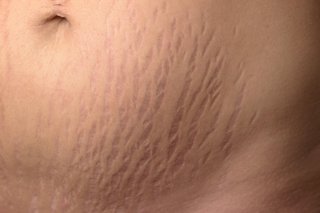
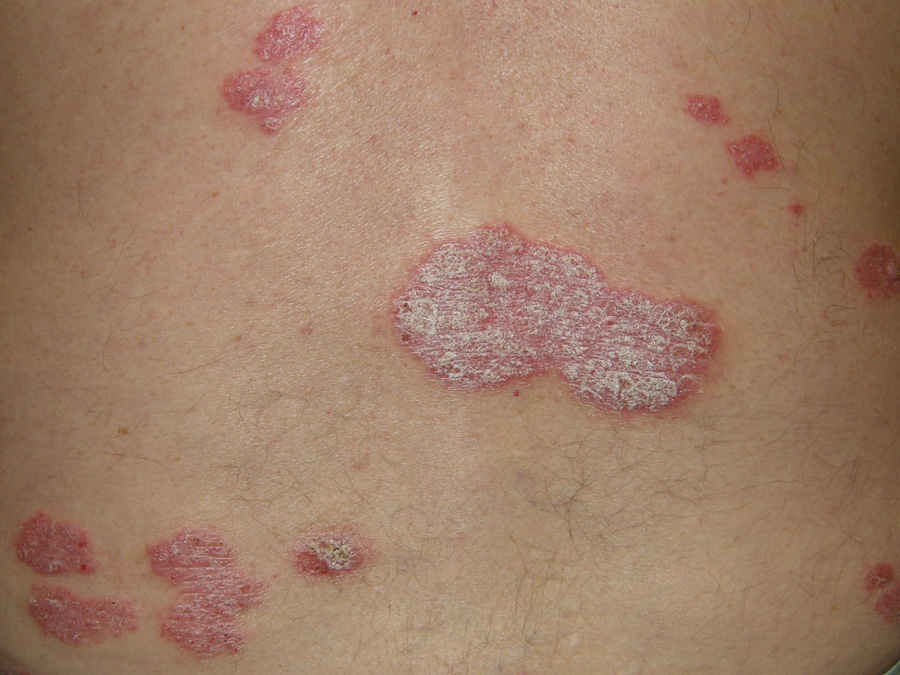
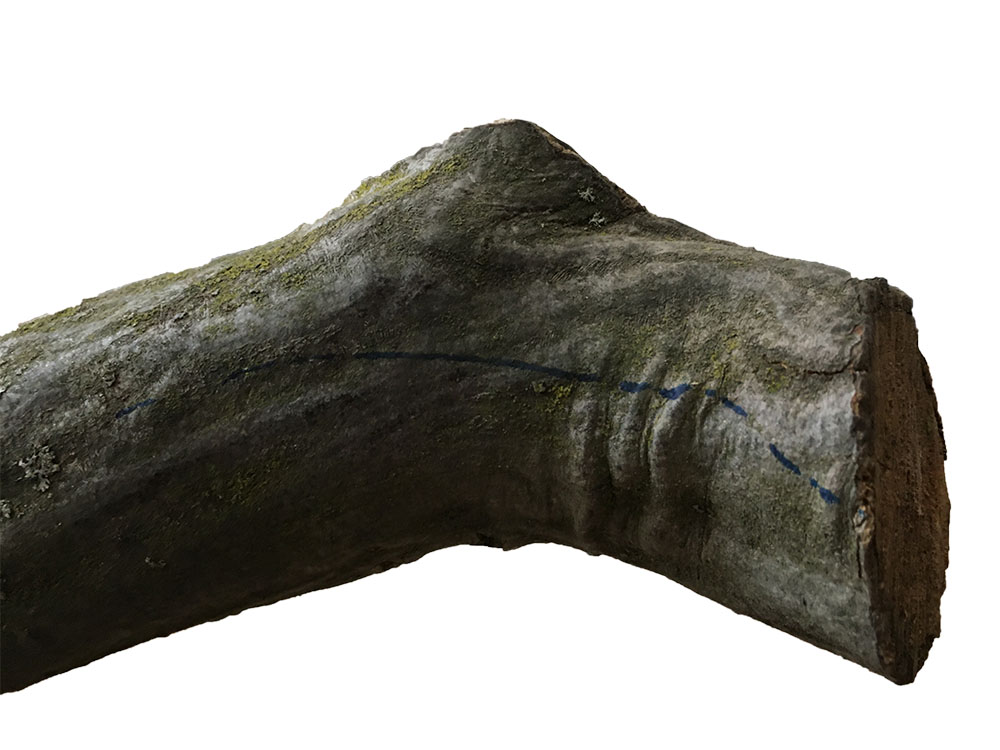
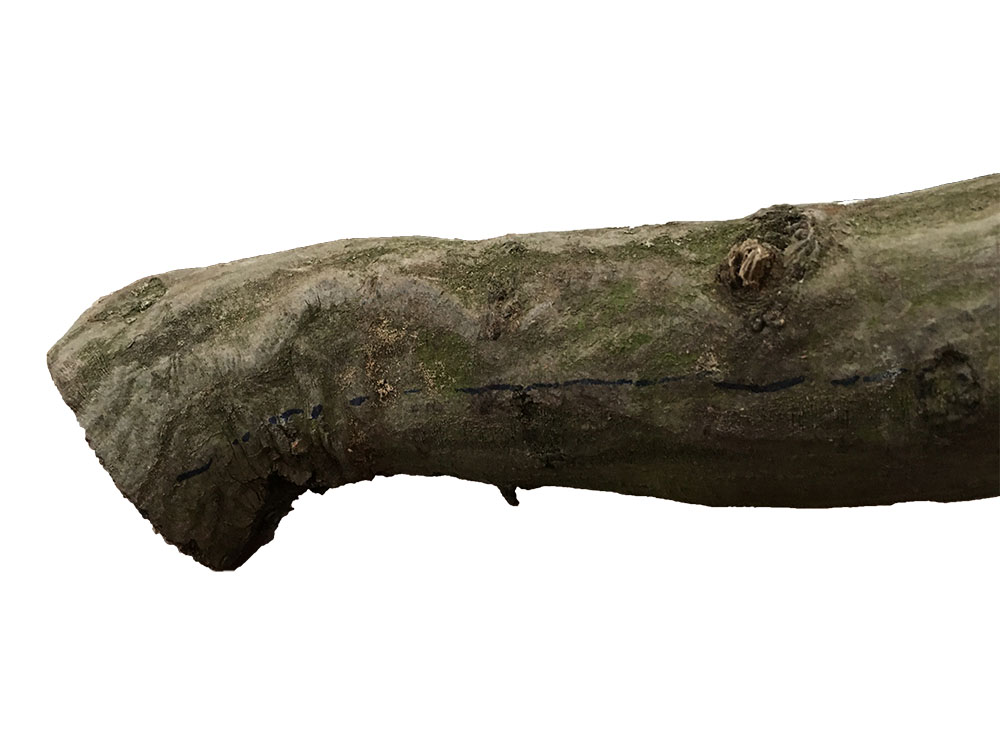
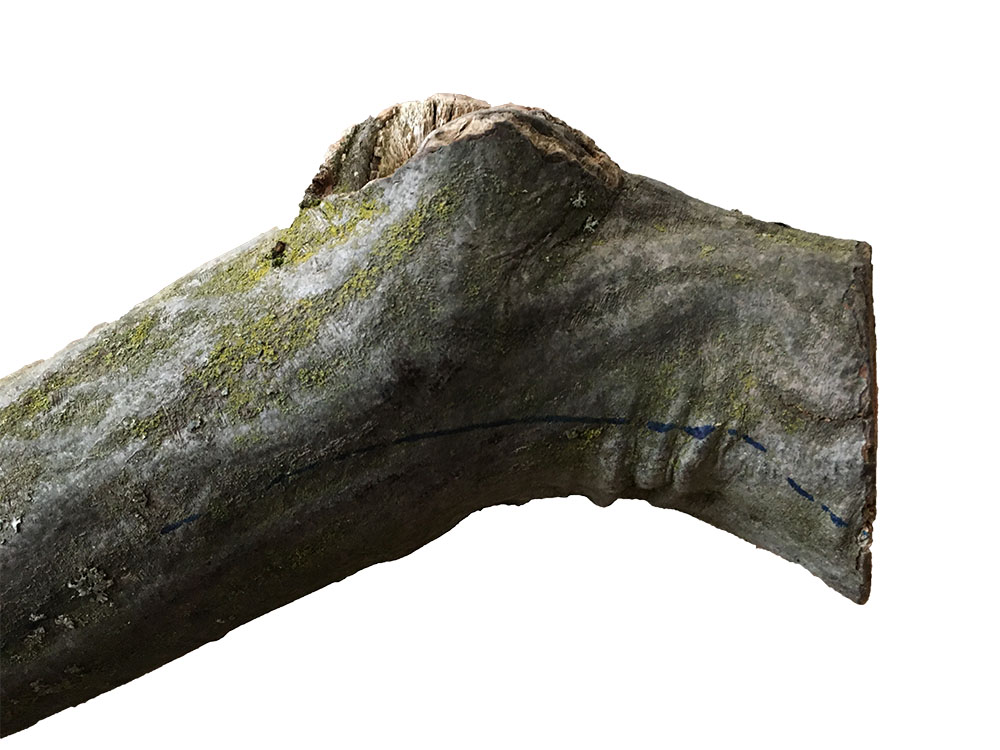
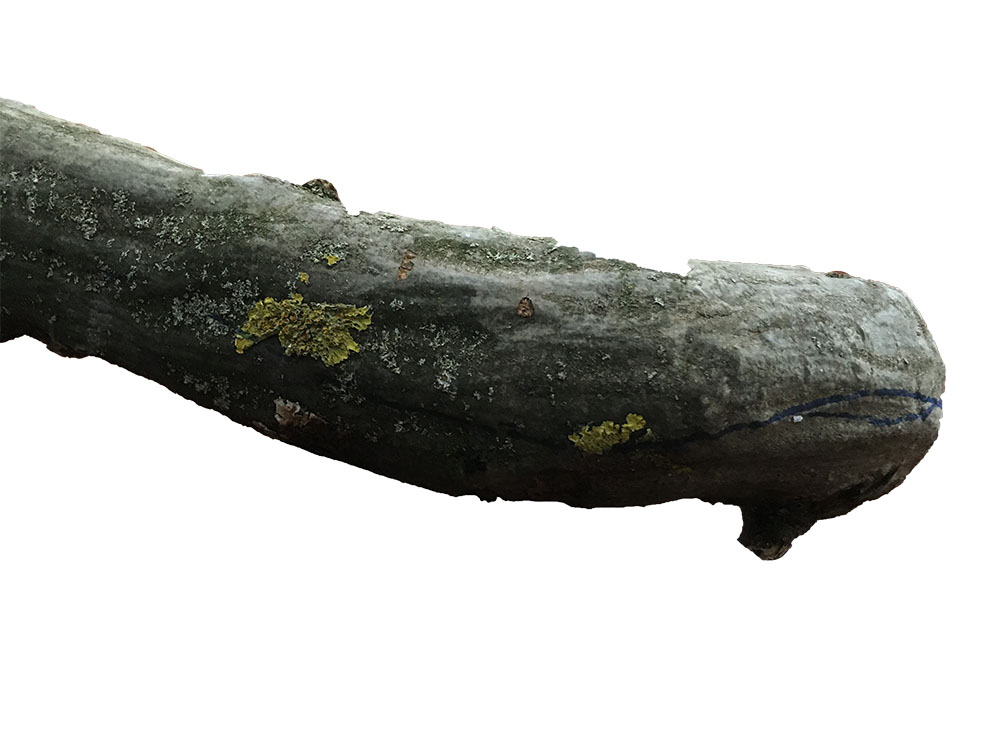
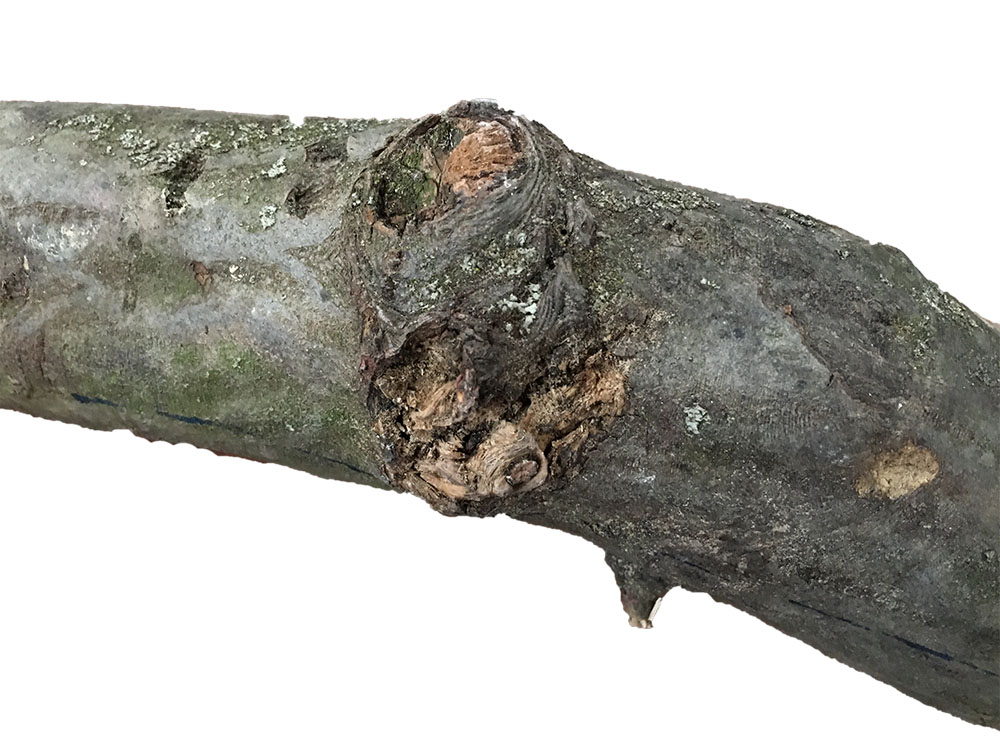
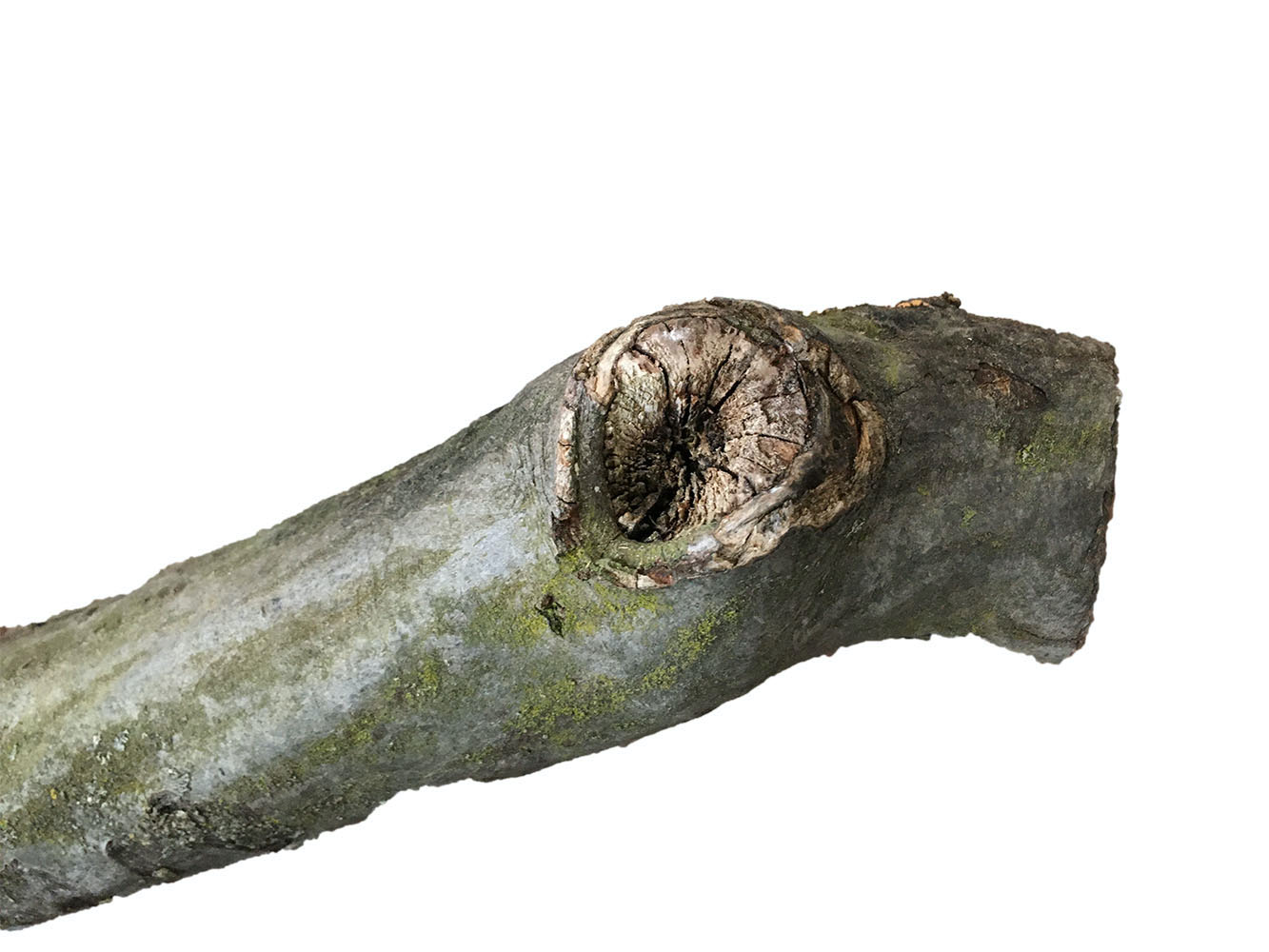
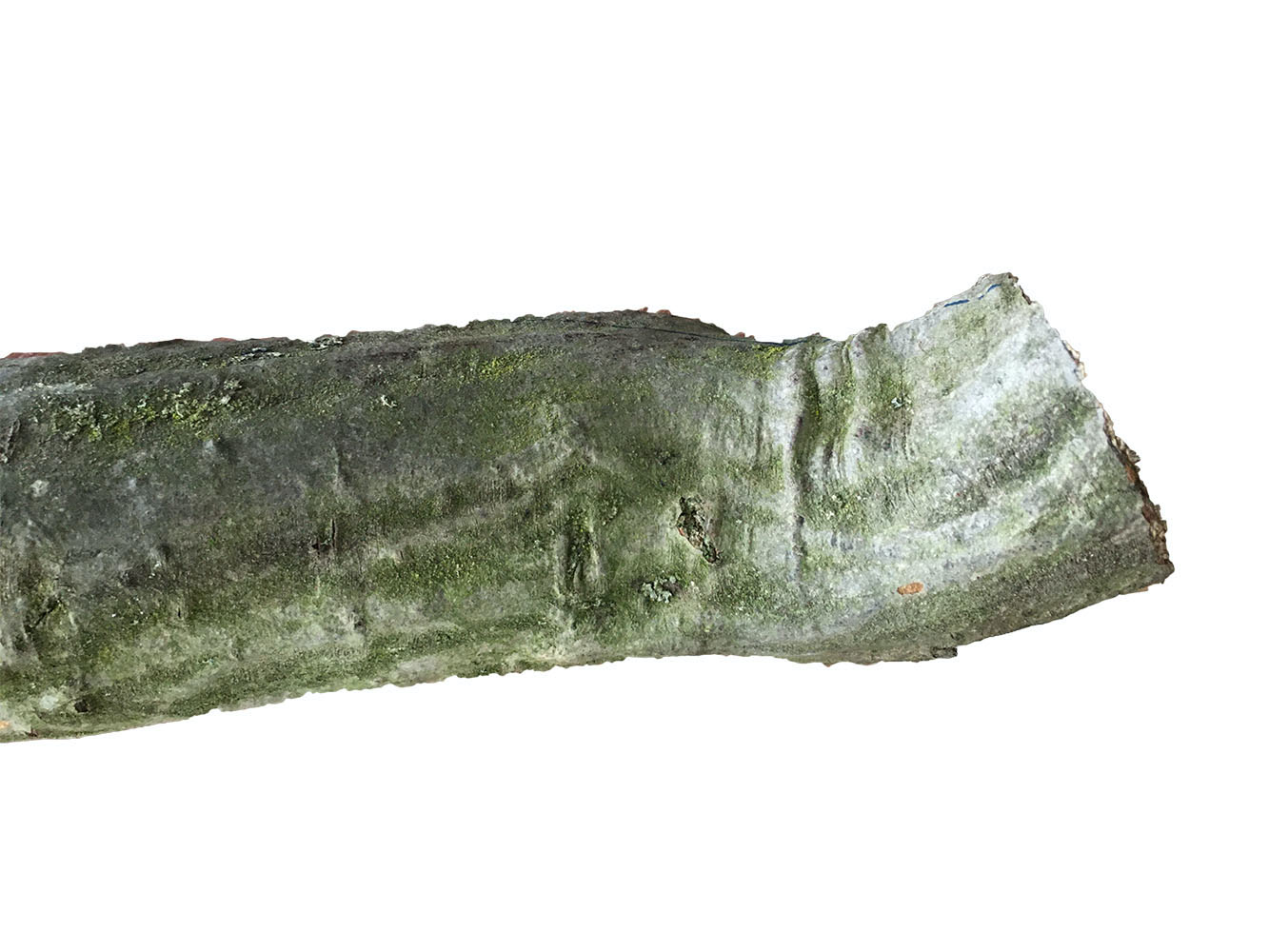
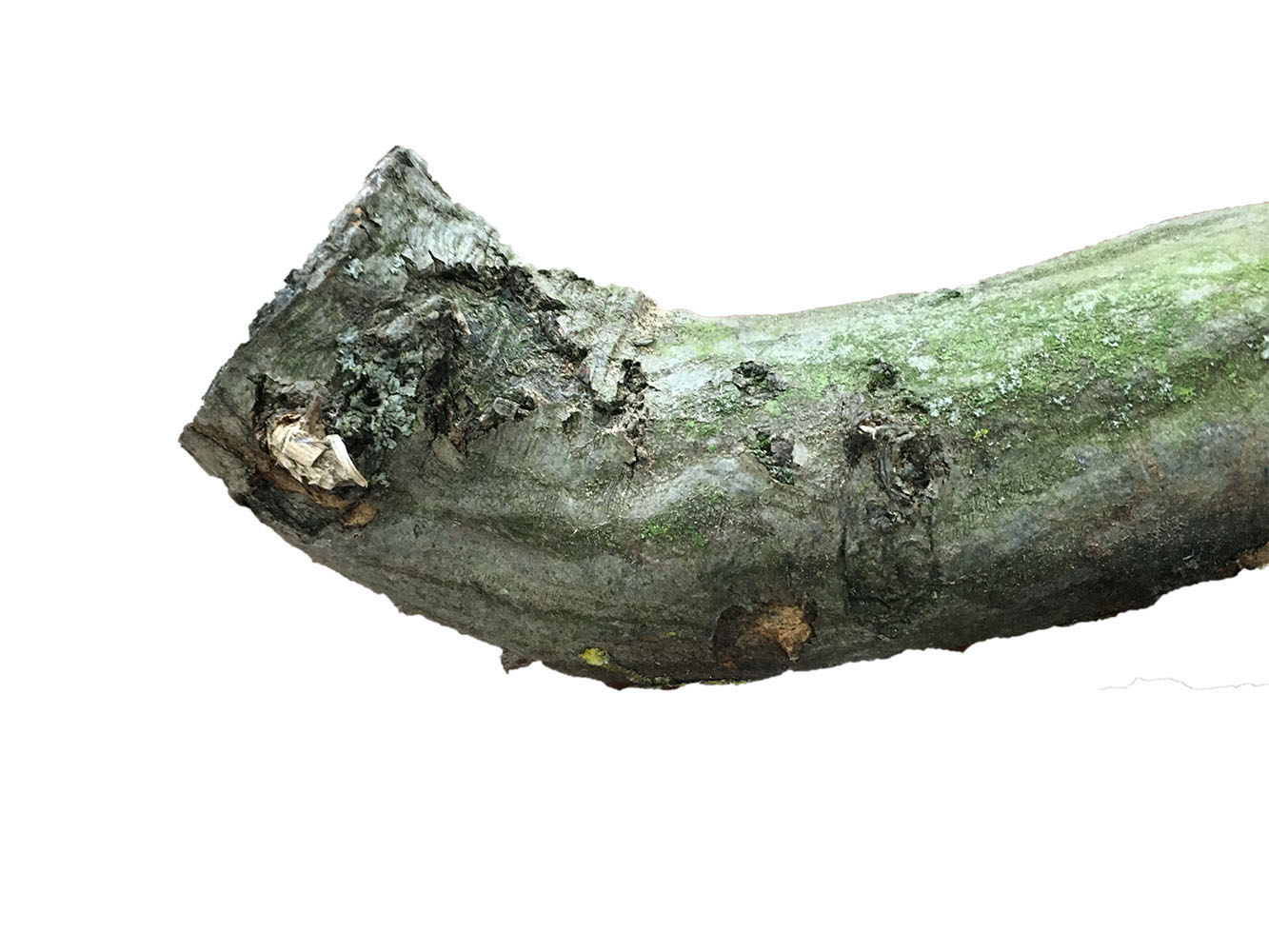
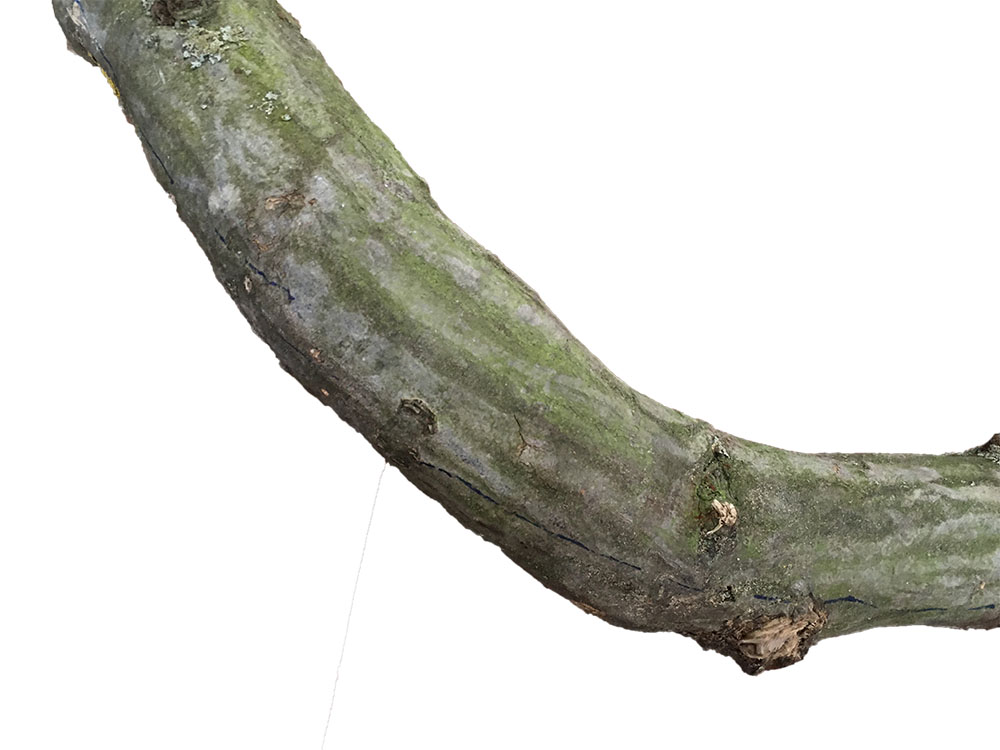
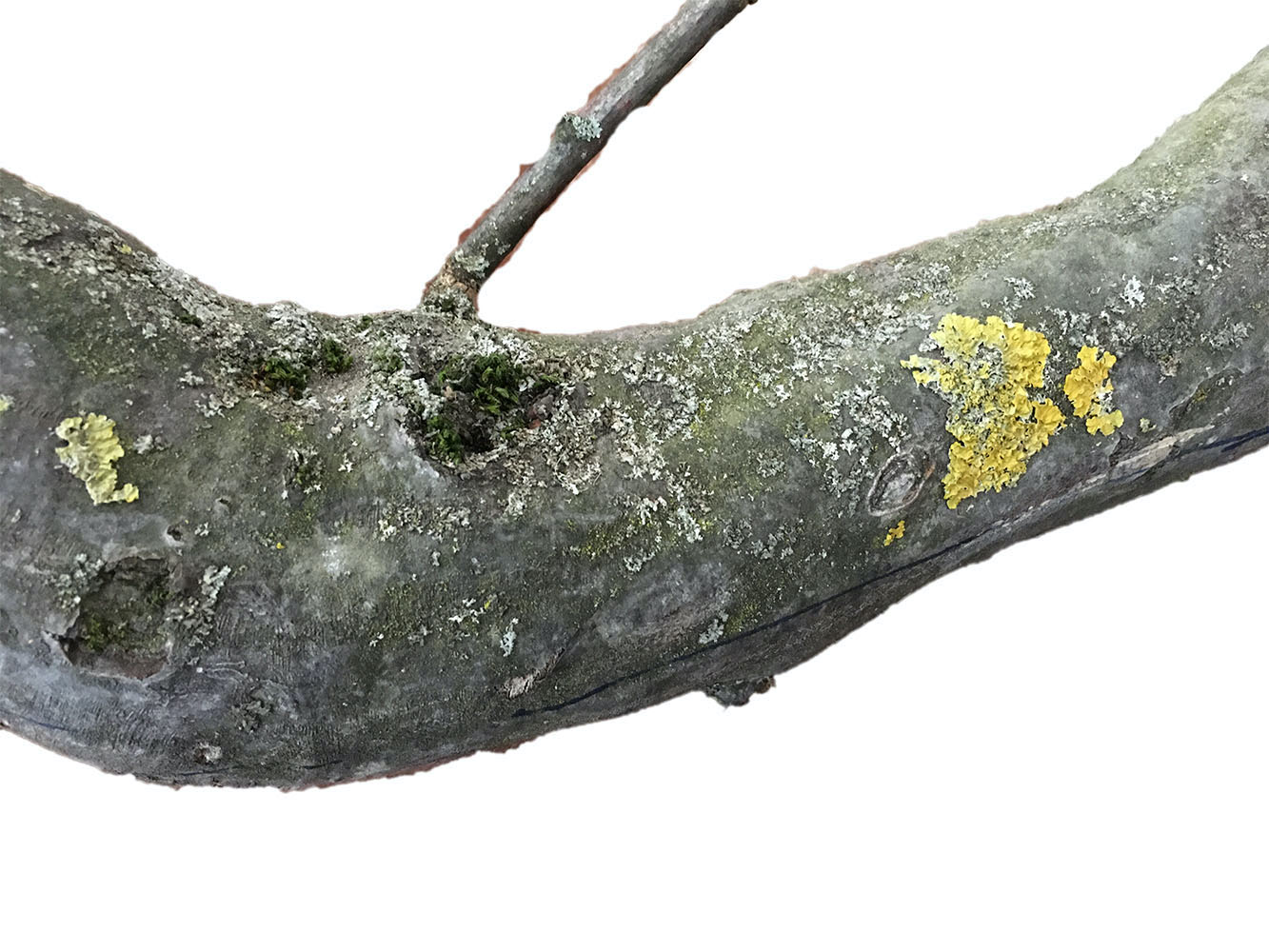
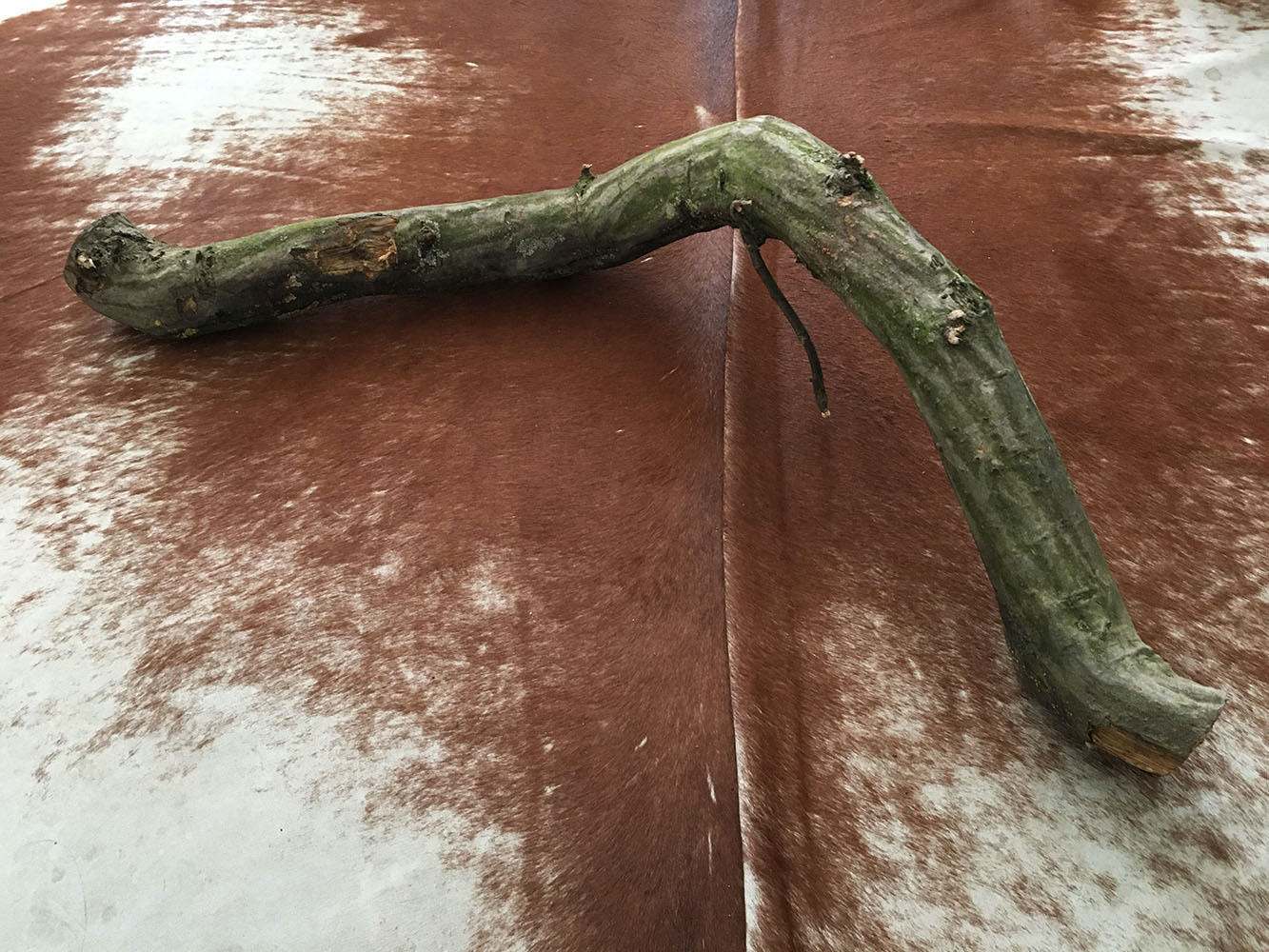
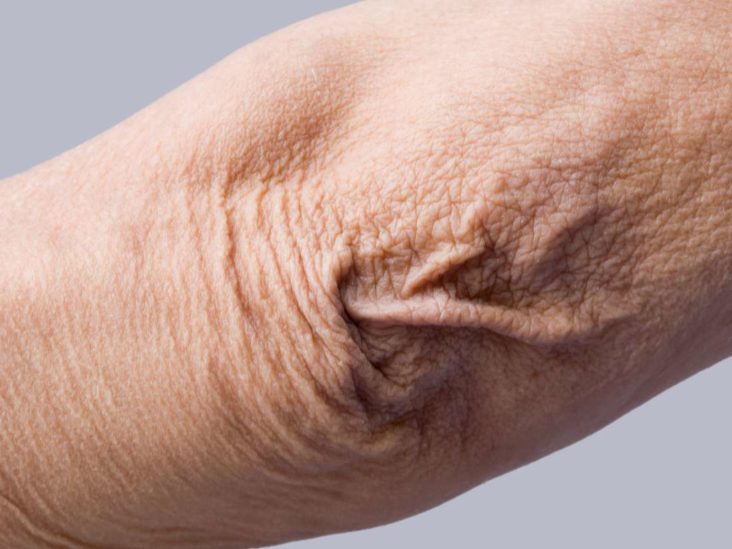
Conclusion: overall there are a lot of similarities between trees and the human body - especially in the surface texture (when finding the right tree) detail similarities can be found.
Will the wax material and colouration mimic skin enough to create the bodily impression?
However when it is turned to this side the impression of the shape is more like an elbow and the stretch markings are also much more pronounces!
At home:
test colouring wax
test moisture ponds
test PH wert
Field tests:
Go into woods again: look for tree piece
+ leave wax object as experiment/bacterial transfer test
Sculpture actualisation:
Make silicone mould
pour wax sculpture
(4) Designed framework_industrial materials, clear cut shapes
Questionable: The necessity of the controlled environment: the box, the container - the maximised petridish.
Would it be possible to create a sculpture in fresh air with the living organism thriving? Or is this: completely exposed (*mit Luftzug) situation only seemingly closer to nature?
As an aquarium like box it has a certain connotation. Generally when an object is exhibited in a transparent box it has a 'conserving' quality to it.
A large tube of this scale would have something of a 'Lotto trommel' and would also not be very fitting.
Hypothesis: Humidity is very important.
But humidity is arbitrary in a open air environment..
> How to: wax and painted afterwards with oil paint
Next steps:
Edit: Why wax for the sculpture?
> Semi - Organic that has a rather organic (vs. synthetic or industrial) feel and yet a man-made component
> mouldable to organic curves and shapes like the body
Working with arranging materials and thinking about colour - shape - composition.
Organic (decomposable) vs. hard materials
3D printing or creating a cast of something ...
Edit: 'Memory of Trace'
Making the traces of Physarum visible....
A collaboration between shape and organism: to make the time visible..
Ideal would be via a chemical reaction that shows an 'invisible' aspect/component of the organism
Insight:
I would like the shapes to invoke that it is a living being
- I think a quite immediate way to do this is to draw a parallel to the human body
Physarum would start to look like something dangerous in this context - like a parasite
Keyword:
The domesticated organism
Edit: the tree branch I found invokes analogy to stretch marks, and elbow, a skin crease
But I am also still interested in this 'wulstige' , tumour like shapes..
Edit:
In my continued work with PP a lot of topics have fallen to the sideline. What remains is the struggle of domestication; keeping it in the perpetually living stage, which stands in stark contrast to the natural living of the organism on fallen trees and decaying leaves (sidenote: here living off death) mostly only briefly in the fall.
The actual wonder of the organism is the way it falls dormant and spreads through spores - travels and lives on through varying evolutionary methods of 'reproduction'.
This to me gives some broader insight on human living and thinking which we unwittingly transfer to the organism. To be so scared of the unknown - of death - to sit in a lab and focus solely on the living, plasmodial stage, which is valued above all other phases. The holistic life cycle of the organism not treated as a whole but zoomed in only on the one stage because this seem most interesting ? because the transfer of spores by air through nature cannot be put under a magnifying glas and tracked so easily.
Edit: Notice here the image choices:
one showing more the bodily, infectious, 'either' impression
The other: the natural habitat of the woods
Edit: Sensor that shows these elements: temperature, moisture
+ Insight: moisture also translates to humidity / THE NEED to contain humidity!
This becomes visualised through the container
(No indicator/sensor for light yet : *Research question: Is light relevant for growth?)
+ filming also still needs to be integrated without obstructing the view
Edit: To stay in perpetual living state is already fitted to my schedule & observing the full life cycle is nearly impossible.
In my captivity the mould and other bacteria take over the petri-dish before spores form.
Edit: The use of machine as mediator is foreign to me and did not present itself as logical or 'beneficial' at any stage of the process.
Edit: By choosing a tree and casting it I combined both organic vs. synthetic/man-made
+ found vs. made
the object is the parkour - with it's falls and folds
the object becomes the place of dialogue
working title 'interspecies considerations between life and non-life'
Edit: * I have a lot of hope for the idea to add invisible nutrients via transfer in the woods because this would tie in the habitat in a very real way again.
Edit: My take on the human - non-human , life, non-life is that humans transfer their way to all other things and species & this reflects our view on life and our fear of death
'Suspended between shapes of living'
Edit: Finally I start to see that being guided by the vision of the sculpture actually leads me to discover things about PP that I might not have learned otherwise. Assumptions made from desk research proved rather not true- PP doesn't NEED the Agar it needs humidity which is provide by containing the air in a space, it needs fresh space/surface over needing nutrients /food, & it's not that bothered by light.
Edit: *Happy to see now that instead of moving away from the challenge of having an organism with moderately controllable behaviour I'm gaining insight over this life form by facing those challenges as varying the parameters.
The challenge transfers into a collaborative form of the sculpture instead of total imposition by me as the maker.
I love the idea of the Pom Pom growing out of such a shape!
But not forming the shapes myself but taking them from nature & directly from the woods.
Muscles - tendrils - bones
I could also consider sculpting this stuff in 3D modeling software and then 3D printing - although it feels a bit removed from the initial idea of connecting the natural habitat and the body.
Edit: This installation triggers thoughts on how the sculptural wax-branch can be presented: what surrounds it - how is it contained?
if presented in woods:
The suspended box ?
The box on metal rods?
But if not presented in woods?
Edit:
The wood-branch carrying structure/object shows a linkage to the muscular build of a body
The Physarum can draw a link to the veins that run through a body.
Analogy:
tree/habitat + organism/Physarum Polycefallum
____________________________________
muscles - skin + veins
Edit:
In a strange way I feel I have some obligation to work out this 'form-study' more. Go more into depth? But essentially this is my insight/base/starting point of the sculpture _ the semblance between tree (as habitat)/( representing 'the natural') and body ( as human) /(representing 'the artificial, the captive, the lab') -
can it be enough to serve is just that: an artistic starting point, an opinion, a point of view that can't be proven true or false?
Edit:
I found such body-akin features in a freshly trimmed tree branch
Edit:
Instead it is perhaps overall shape and especially the coloration that draws a connection to bone, tissue and bruising.
Edit:
The keywords of the two different living environments are the to polarities between which my sculpture resides. They hold the parameters between which I navigate.
Edit:
*Top image could look like some type of skin rash
Edit:
Find out what is up with this purple coloration?
" In nature, plasmodia live in dark
and humid places: under the bark of rotten logs, under
decaying leaves. Then they migrate to the surface of the
substrata where after some time they sporulate. In a standard laboratory culture plasmodia are protected from light
and kept in the dark because radiation has an inhibitory
effect on their growth."
source: http://citeseerx.ist.psu.edu/viewdoc/download?doi=10.1.1.554.794&rep=rep1&type=pdf
Initially I always viewed it turned like this because the surface is smoother and 'better'
I really like this piece of tree but I'm curious to still find another:
thicker branch
a muscular stretch
tumour like 'wulstigerknottenpunkt'
Build with Plexi pieces cut to measure
> I should use Plexi and not glas because it's much lighter to hang on the wall!
Mounted on aluminum/metal canvas rectangular backdrop
Adapting sculptural presentation:
Two-main factors
'Need' from organism's side:
(1) Not only moisture as base but air humidity seem to be crucial factors for PP's survival
> fool proof test this hypothesis by having one dish without lid
(2) 'Need' from aesthetic's side:
The impression of the wax branch is too fragile, too delicate, too detailed to unfold it's full impression in the outside setting
Reasoning why not outside?
The sculpture was to be set outside to create a stronger connection to nature / the natural habitat of Physarum and connect the smallest component/micro-level of the sculpture: the living organism - back with the surrounding /macro-level : the natural habitat . Hence, to minimise the man-made impression /my presence (which I feared might overshadow the organism). Instead the connection between the branch as wax object and the trees as surrounding should be made and highlighted.
However, when imaging the finished branch into the wooded environment now I feel like it would rather have the opposite effect. The connection between the wax branch and trees as surroundings would not be made in a way that supports the sculpture but rather buries it. Because the branch is not as massive and 'demanding of attention' as it would need to be to harmonise with the environment.
The wax branch needs more space to breath, more opportunity to look at the details of the object, the texture, the imprints.. & then the interplay with the texture of Physarum, with as little distraction as possible.
I'm also realising that in my working process I repeatedly mentioned how I want to focus only on what is visible, only on what is there, what can be observed/seen with one's own eyes. Inline with this I should set the focus on the very first and central aesthetic aspect which was always the texture, structure and look of the organism - highlight that which is visible- . If I would present in the woods, the woods would overshadow everything in their conceptual role and would need to be explained and might distract from the texture, structure of the sculpture because there is much structure around.
With such approach the concept would become than it is in the artistic approach of letting the object do the talking.
+ the outside setting brings a lot of unpredictable aspects into the work, which I also can't control, preempt, fully measure or document or recreate. Because the work is already dealing with many elements (bildende Kunst + biological mass) it feels more appropriate to be very clear with every elements that comes into play.
If I decide to suspend it on the wall in a case should I re-enforce the wax with a metal rod inside? could it hold it's own weight?
> This looks like a very elegant solution - not to go into the branch but suspend it by laying it on metal rods
> This way it is also much more likely to hold it's own weight on two points
To wrap up the project I want to summarise -
especially for IF ORGANISM COURSE
(1) What is the vision behind the sculpture / artist's statement
(2) How does this translate into the execution
(3) How does it 'work' - What is innovative about how it works
Maybe my key turning point is WORKING WITH LIVING MATTER IN A (NON-OBJECTIVE) NON-SCIENTIFIC WAY
Psydo-scietific
neither scientific
nor natural
opening a third space in between these categories
- & how this relates to the text of the module
between the polarities of lab and nature a third interspecies - personal, artistic- philosophical - psydo-scientific space appears/opens up
> determining the outcome (non open experiments towards a vision that reveal parameters through limitation )
> shaping an organism to my will
> the PROCESS of forcing life to my wishes
incl. experiments leaning on scientific method
> the psychological/ethical implications and considerations
philosophical considerations
1 - only focus on one phase of life as greater metaphor for fixation on only this state
2 - struggle of shaping another life to your wishes - doesn't work in interaction with another life
> the importance of the natural habitat but also not objective approach
Creating a closed environment: plexibox
Have entire box built and shipped
> less hassle
> better result?
> call and ask for picture of real life product?
> how long till delivery????
Order basic sheets and cut self
> possibly cheapest? But do price comparison
> organise getting into workshop? time + difficult + might not be possible
> might mess it up in the end?
>> worst option / not worth any potential cost saving
Order custom cut sheets
> prize comparison
> buy glue
> might mess up? / probably not better than professional service?
https://shop.transparentdesign.at/cu/transparentdesign/configurator/vitrine?search_id=257841&product_id=339187&configuration=%224mm%22%20%22farblos%22%20%22xt%22
Option 1
Option 3
Option 2
Decision: I will order the box because it is for showcase purposes and should not impair the view of the actual wax-object in any way. It needs to feel professional!
The additional cost of having it made professionally is approx. 100 EUR more - for a perfect result and no struggle with gaining access too a Workshop and building(with needed help)
I want to find a way to integrate a camera!
+ video feed
Why is the vulnerable - severed limb like body important?
Its a bit grotesque/shocking/appalling/visceral to get a gut reaction from people and make them realise that by cutting ourselves off from nature we are mutalating/ hurting ourselves - Ironically we both do recognise the natural world as the most original source of knowledge and innovation yet we are increasingly alienated from it.
We use terms like intelligence to categories life around us. Especially in the case of the slime mold it is used to arouse excitement and a point of connection towards this other species.
However, I found such human-centric terms to be highly speculative and distract from the tangible observations of working with slime mold. I was perplexed to see the leading researchers on the slime mold had never looked for or seen the organism in it's natural habitat.
When an organism is only researched in a human engineered environment how natural are the outcomes?
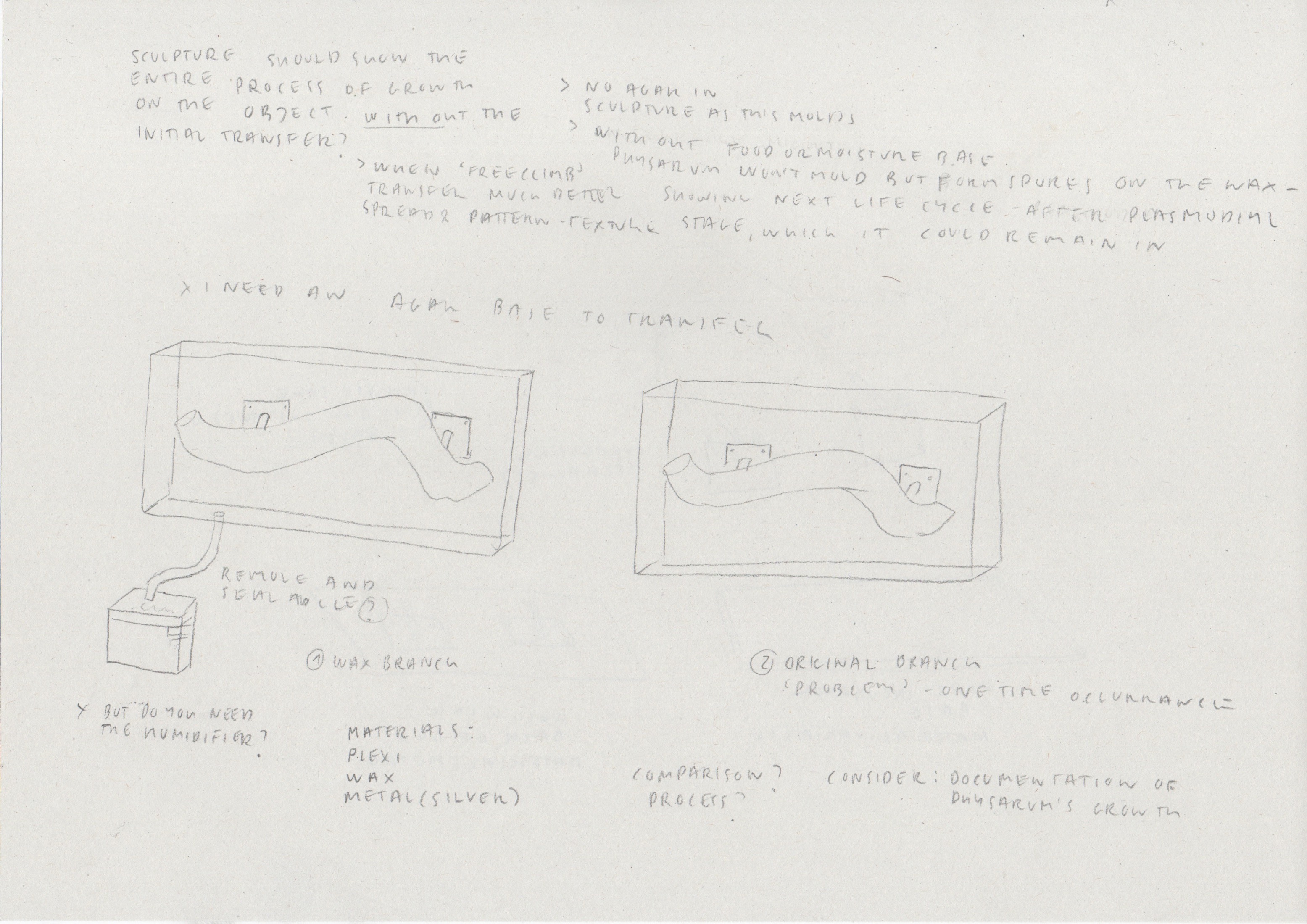
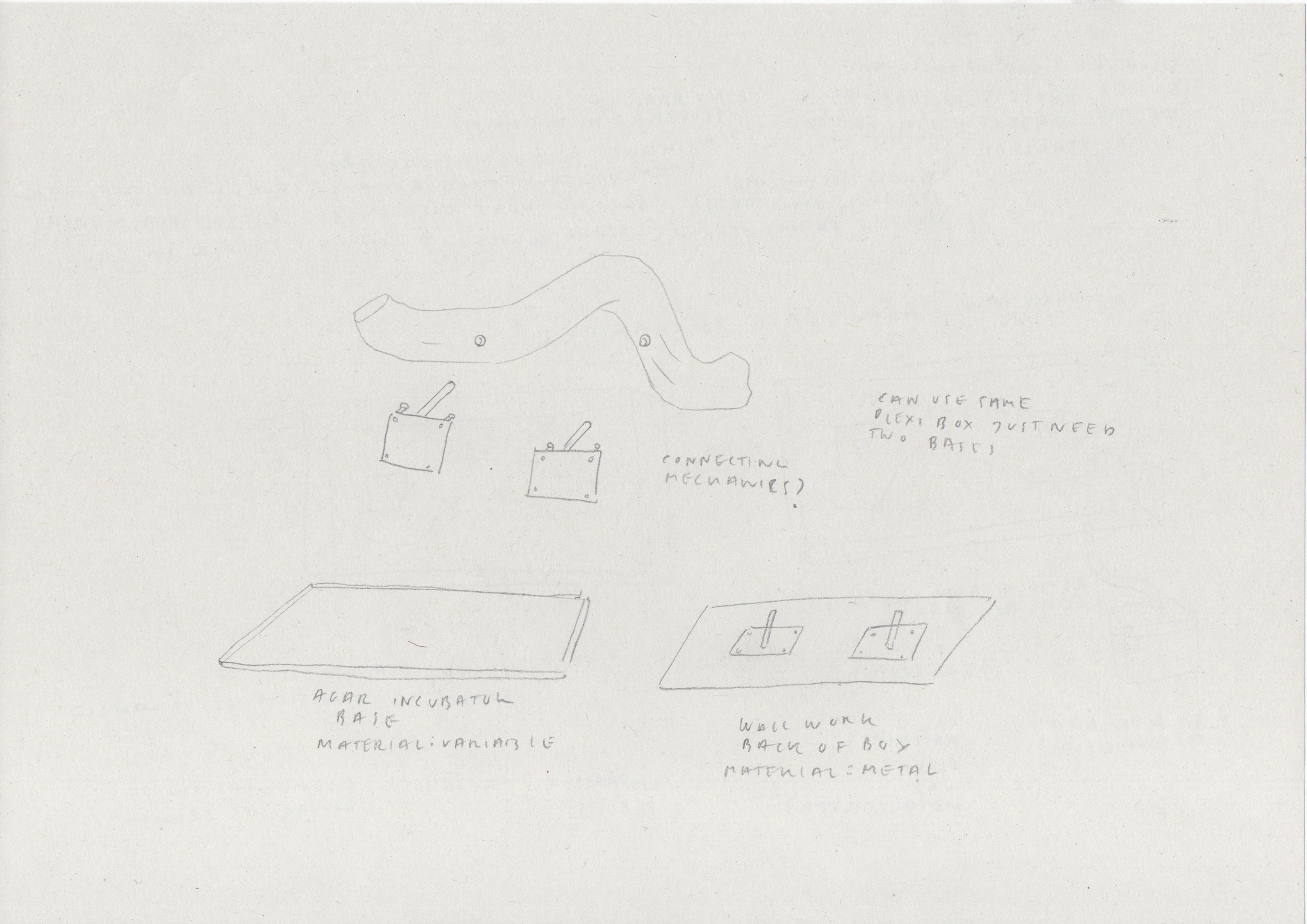
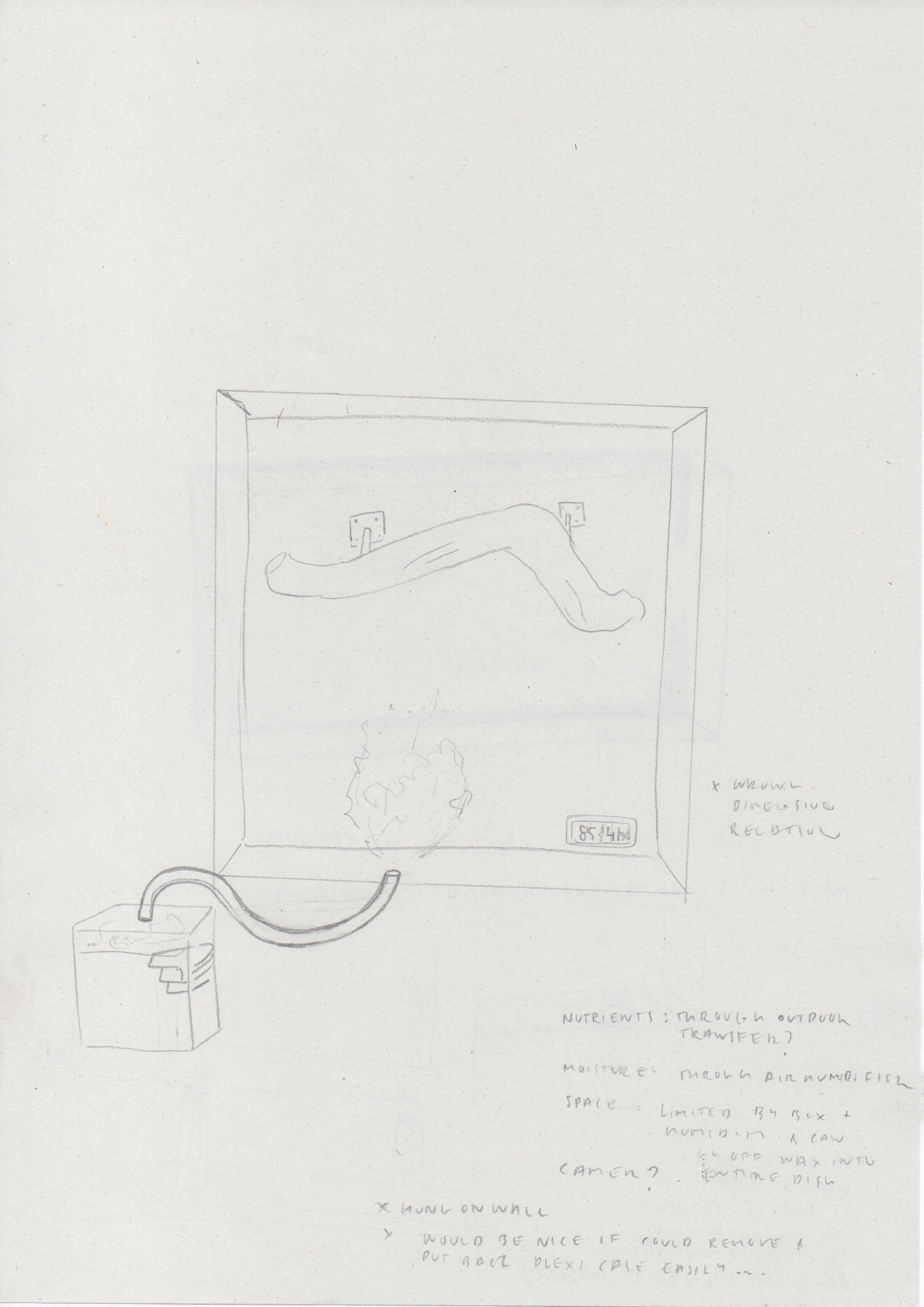
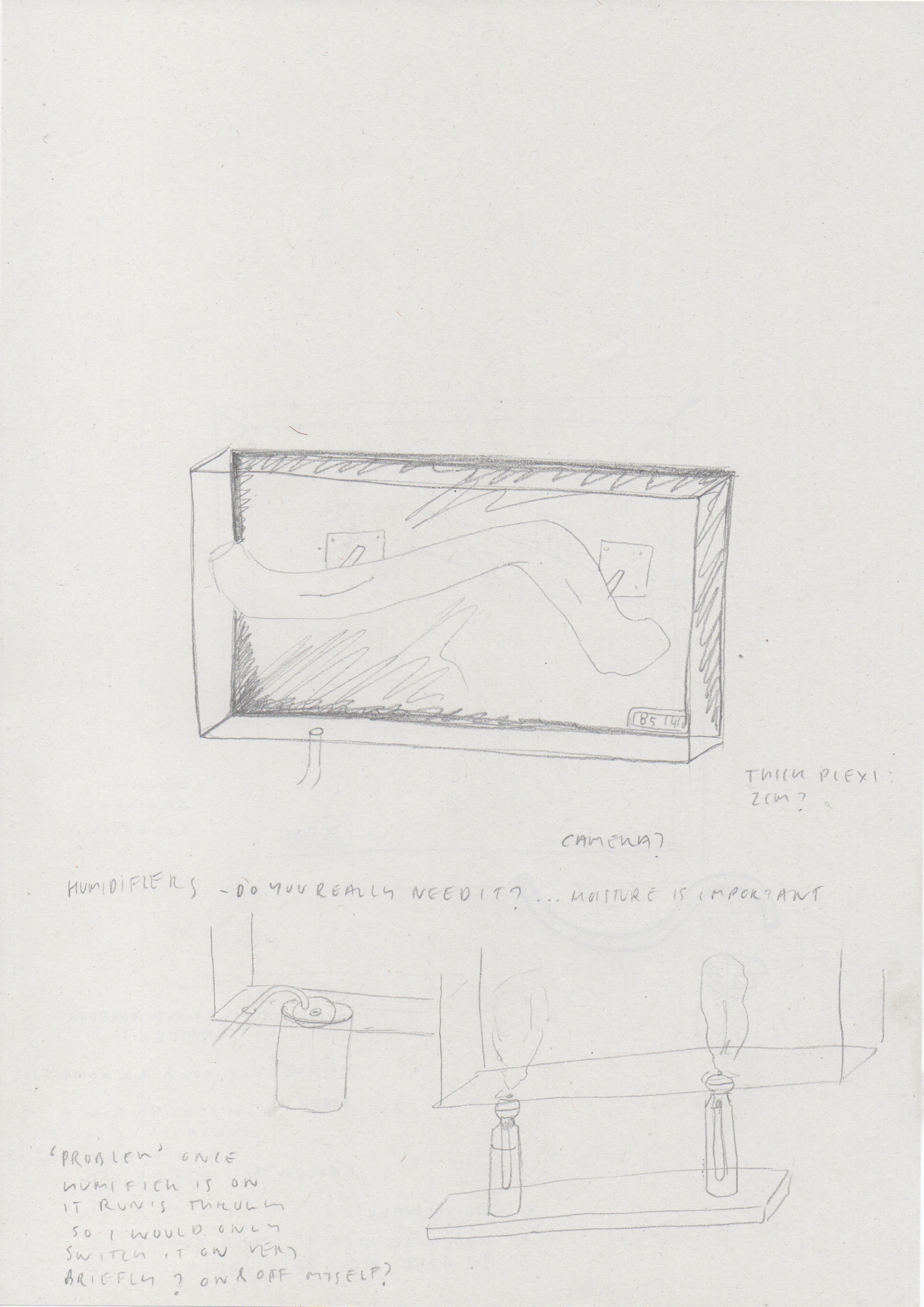
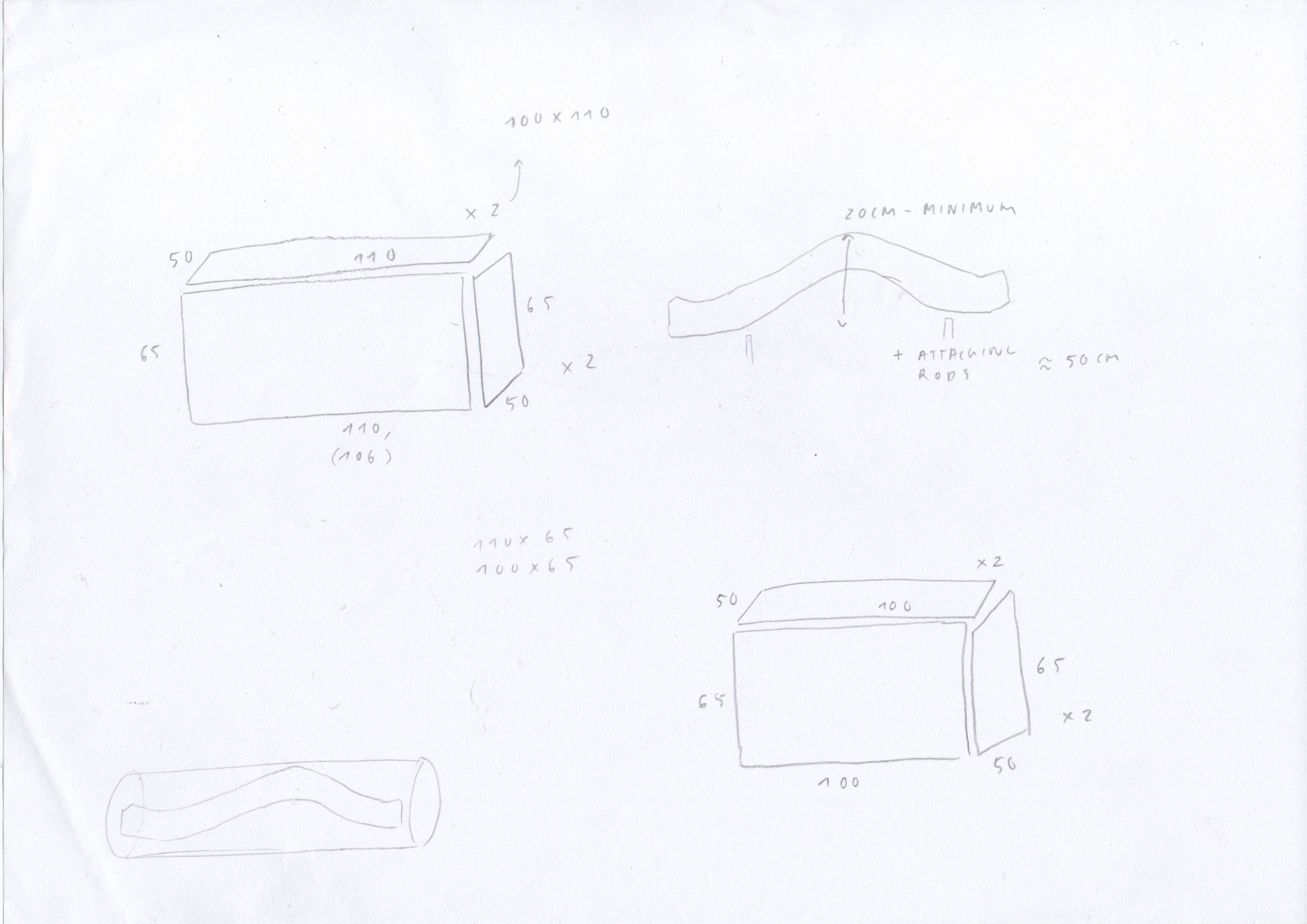
*Oxygen: It should be sealed air tight - the organism needs Oxygen
* An additional problem with a humidifier would be that it would fog up the plexi-box and make the branch hard to see!
Reevaluating what the sculpture needs:
Moisture/Humidity
Contained airflow (aerosoles) (humidity)
'Food' / nutrients/micro-organisms bacterias /yeasts
Minimal light
Controlled temperature
Consider that suspending the object is a lot more difficult also in the installation into a space!
But floor is a bad viewing hight...
But this is another huge undertaking in itself....
> Simply spray the Metal backdrop & wax branch itself(moist)
> Plexibox
> Outdoor transfer + oats during incubation phase
> Low lighting in exhibition space (dark)
> Indoor exhibition - control temperature in room + install thermametor inside box
it's not scientific - these are artistic considerations and re-configurations of the parameters. Taking into account a margin of 'risk', that Physarum might not behave, look or survive like I want it to - I've gained the insight that it is extremely difficult to form other species to a human will - if you over extend what you want them to do for you they might die - it is a process of trial and error of altering and fine tuning to negotiate between expectations set for the other species and their needs.
Additionally my personal realisation is that it was too difficult to ensure the optimal supply of every parameter when trying to move away from the already optimally engineered lab-context petri-dish. I cannot replace the petri-dish and synthesise the natural conditional AND create a classical sculpture all in one. In the end the sculptural vision, the conceptual statement/it's meaning are more important for this artwork than the scientific, biological aspects. It was never my intention to develop an optimal 'third habitat'.
It is about having a personal, artistic, 'third' answer to dealing with the parameters that are needed to sustain the organisms survival. These solutions do not have a claim to being the 'optimal' - instead they are an experimental 'other' approach/suggestion to engineering a habitat for the slime mold.
The Paris Zoo also aims to show Physarum in an exhibition context over a period of time - how did they do it?
It appears they tried to recreate the natural habitat as good as possible.
> Moss, plants, decaying wood logs, leaves with bacterias
> which they probably replace once Blob has covered most of it
+ > it appears they also used OATS!!!!! * could try to get some bigger oats that have a less identifiable look (?) !
Large terrarium with ability to control temperature and humidity and light to optimal levels
Although this variation appears more elegant - it is also more decorative and difficult to build (especially with metal and not with wood as seen here)
I like the industrial feeling of showing how something is made.
The stripped down style also feels more 'matter-of-fact' and scientific.
> If I invest in the smooth glued professionally made plexi box this also won't look 'cheap'.
* test one wax with oats, one without and one from outdoors in the woods !
In the end I want really high quality HD photos of the surface!
+ Time lapse captures of the growth and pulsation.
* test whether life on wax only works with connection to plasmodium on Agar ...
At the hardware store the question of how to do the metal bars and suspension became heavily discussed..
Option 2.1 - Baumarkt : Polystyrol
Price:
4 Platten - 96 euro
Kleber - 4 euro
(or Dichlormethan 8-10 euro)
= ca. 100 euro
+ working hours
+ control over fit
https://www.opitec.de/technisches-zubehoer/kunststoff/acrylglasplatten/acrylglas-klar-transparent-4-mm-sondermass.html?listtype=search&searchparam=acrylglas%20
pre-cut
easy assembly
fast delivery
ensured look
comparatively cheap
"Das verwendete Material ist glasklares Acryl mit einer Stärke von 4mm."
Price:
102 EUR!!
Price:
121 EUR custom cut
+ cost of glue
Price:
Around 120 EUR plexi + glue
Price:
114 EUR * EDIT : wrong MM plexi - would be more expensive after all..
with cut holes!!!!
Delivered by 19.10 + then would still need to be built - also here measurements need to be right because otherwise box will be too small
so there is ALWAYS THE MARGIN OF ERROR/RISK
but it is probably easier to adapt the base than it is the box (* but I needed an idea of the base to get the height)
Price:
154 EUR
with cut holes!!!!
Price:
126 EUR
with un-precise cut holes...
Very expensive
probably not inner measurements but outer so fit can definitely not be ensured
page seems outdated and shady
Comparatively stupid to have the Polysytrol Platten for 96 euro
UNCUT,
WITHOUT HOLES...
> decision: they are getting returned!
looking into plexi also showed there are further considerations to be
made on how it is cut etc. but at the end of the day I just want a garantie for it to look professional - the only way for it to look really professional is to have professionals do it ..
Decision: most effort, most margin for error, need access to tools I don't have - price is not significantly cheaper
> Don't do it!
Decision: a lot of pre-work done
also no control over fit once ordered
> need to give exact right measurements
> margins for holes not adding up correctly
> the hard part/glueing is still in my hands
Holz
> Kürzen
> Rahmen leimen
> Bohren
Plexi:
> Box bestellen
(wegen Seitenschlaufe 5mm extra)
> Löcher bohren (Anschrauben + Sauerstoff!)
(Kann auf Tisch aufliegen)
Metall:
> Rohr schneiden
> Gewinde schneiden
> Löcher in backdrop
> (ggf. Aluminium doch über backdrop) - dann Aluminium schneiden
* Max nach Spanngurten fragen?
* probably harder to get money back on an order like this because they'd ask ' why do you need 6 and not just the two you use?'
* This perfect glueing and polishing really makes the difference!
*Final measurements: 100.5cm x 40.5cm x 35cm
4mm - is thick enough to have a high quality look
but also cheaper and lighter than the 5mm - *weight and height is also to be considered so that the Box doesn't crash and can hold it's own weight when suspended.
*After much back and forth I will now order prompt Monday morning - then I can have a call - ask how long it takes to deliver + whether their is student discount + whether it's still covered with protective sheet + GET IT ORDERED VIA THE UNIVERSITY DIRECTLY!
+ since I can't reach anyone in their office it is highly likely nothing will happen on their end anyways until Monday ( fingers crossed they don't have a lot of orders ... in times of Pandemic...lol)
Also an important point for personal learning is that art is not a deliverable? Ursula Damm said the deadline is not so serious and the final deadline for me should be an exhibition (which I have to do for the Kreativfonds) so if at the end of October I have a date set for the exhibition and the nearly finished sculpture + book documentation then that is enough! Maybe the sculpture doesn't NEED to be finished before 31st of October.
This video confirms to me that while it is possible there is a big margin for error when DIY-ing this and under the conditions of not having access to the Workshops I need to outsource whatever I can..
https://www.sora.de/massanfertigungen/acrylhauben/8/masshaube
https://www.acrylglas-shop.com/acrylglas-xt-staerke-4-mm-farblos.html
https://www.plattenzuschnitt24.de/shopping_cart.php
Every technique to make it cleaner has a high mark-up and even then perfect glued corners are not guarantied..
https://expresszuschnitt.de/warenkorb.php
https://www.plexiglas-shop.com/index.php?lang=1&
'Submarine 6 Stück Befestigungsriemen Spanngurte mit Klemmschloss 5M lang für Fahrradträger Befestigung Schnellspanner Zurrgurt Camping Outdoor (Blau-5m'
'4 Stück Spanngurte Zurrgurte Ratschengurte TÜV zertifiziert und nach DIN EN 12195-2, hochwertige schwarze Ratsche, belastbar bis 900kg, Länge 4m Breite 25mm, einteilig, neon gelb'
https://acrylglas-online.com/acryl-polystyrol/
https://www.klebeprofi.net/klebe-anleitungen/polystyrol-kleben/
* Call Werkstatt on Monday to give them time to read the mail and not call on a Friday briefly before closing for the weekend (when everyone just wants the week to be over)
> Then ask if they could do it or someone with an Einführung could do it for me? (& I escort?)
Also links to scientific idea of emergent behaviour - behaviour or outcomes that can't be specified by the input..
* chemicals
* ph invisible to me because too hard to measure
Learning what is art and to be an artist (?):
This semester has indeed largely been about trying to understand 'art' and realising that it means many different things to different people and even amongst artists there is not one fixed idea. However, each person feels protective - some even hostile - about their idea of art and what it means to be an artist.
Art is not a deliverable? Art is not made for deadlines?
Does art need to mean something? Have a concept? Or can it be pure execution?
I don't yet understand art.
I understood it when it was something separate from me, now that I am asked to be a part of it I am disoriented.
A test of 'being an artist' is exhibiting the work. I've fantasised about having an exhibition of my work as my funeral. Perhaps, this is a symbol of how far outside of my comfort zone it is to have a solo exhibition and be in the room.
Planning an exhibition
Space:
Ein leeres Klassenzimmer?
Nova?
Laden?
Galerie Eigenheim?
Bauhaus Pop Up Space
Ecke Triererstr.
DJ?
Jan?
Perform incubation?
In White Lab style coat?
Wo/Wie zweiten Ast gießen?
Also feeling very inspired by this non-white-cube set-up. The industrial room works well with the sculpture - just like showing it in the woods would have made sense for my work - the work called 'Tidal Spill' in an industrial, chemical type area works...
.. Considering an empty classroom ? Or inside the Biolab?...
"Die Zulassung ist für eine Person als Arbeitsraum. Ausstellungen mit Publikumsverkehr sind in den Räumen der Universität während der Pandemie explizit untersagt."
Skizzen Für Plexi box bau :
https://www.amazon.de/LONZOTH-Handyhalter-Halterung-Schwanenhals-Smartphone/dp/B06XZK9XKL/ref=asc_df_B06XZK9XKL/?tag=googshopde-21&linkCode=df0&hvadid=308586648711&hvpos=&hvnetw=g&hvrand=12785806944384904135&hvpone=&hvptwo=&hvqmt=&hvdev=c&hvdvcmdl=&hvlocint=&hvlocphy=9042842&hvtargid=pla-432361498716&psc=1&th=1&psc=1&tag=&ref=&adgrpid=58765395982&hvpone=&hvptwo=&hvadid=308586648711&hvpos=&hvnetw=g&hvrand=12785806944384904135&hvqmt=&hvdev=c&hvdvcmdl=&hvlocint=&hvlocphy=9042842&hvtargid=pla-432361498716
Konsultation PDF
Konsultation -Feedback
Ausstellung:
>> email Miga - er hat Exhibition-räumlichkeit in Berlin!
Im Endeffekt ist es aber nicht ultimativ wichtig das ich akut JETZT ausstelle
Wenn es nicht möglich ist auszustellen - Raum finden in dem ich alles aufbauen kann und professionelle photos davon machen!!!!
Ich könnte auch in einem der Räume meine Dinge aufbauen und weiter wirklich testen/ausprobieren/beobachten was ich wichtig etc., weil die Arbeit mit lebenden Organismen ist ein ewiges game was einen auch persönlich als Künstler/Person der mit dem Lebewesen lebt und sich kümmert einnimmt. & vlt. bräuchte ich mehr Zeit um den Aufbau so zu verfeinern das ich diese Processe deutlich machen kann. Auch wäre dies ein Ort wo man die experimente & 'care' halbwegs professionell photografieren könnte (*aber dafür ist gerade keine Zeit mehr; & ich möchte im kommeneden See´mester nicht mehr damit weiterarbeiten )
z.B wird es bestimmt auch Probleme mit beschlagenen Plexi-scheiben geben.
*Kann Therese Schubert kontaktieren und sie nach ihrer Erfahrung mit den Plexivitrinen und möglichkeiten der klimatisierung fragen - schönen Gruß von Ursula Damm ausrichten
*Note: a great deal of this artistic practice is problem solving towards realising a vision. Around each corner new consideration show up which need to be tackled.
In jedem fall photos davon machen wie alles zsm gekommen ist.
> ggf. in Galerie Eigenheim möglich - wenn nicht Ausstellung vlt. Aufbau?
(Fotostudio Amalienstr. was mentioned)
Falls nächstes Semester auch wieder Skulptur sollte ich mich in Klasse Dahlem einschrieben damit ich dort die Räumlichkeiten mit nutzen könnte
She liked the bookcover! > get the cover printed with the spline also printed (like possible at modulor)
Ein größer Teil der Arbeit ist auch die Materialität und die aesthetik findung deswegen sollten diese überlegungen und auswertungen auch ins buch!
Einen unterschied zwischen 'at home process imagery' und professionellen Abbildungen kann weiter durchs Layout betont und gestärkt werden.
Das Buch sollte vlt. nicht versuchen den Alltag der extrem Teil von der auseinandersetzung mit dem organismus war außen vor zulassen bzw. sollte sich in jedem fall der ironie der Sache bewusst sein das es thematisch auch darum geht das natürliche zuembracen aber ich trotzdem das sterilsierte in der presentation anstrebe
* die 'materialschlacht' & den alltag der at-home expeirmente irgndiwe einbringen und diesen process mit veranschaulichen > include more pictures -they do help the people understand..
& wenn ich die 'white cube' ausstelllung haben will dann sollte ich mich da auch nicht abwenden lassen & das auch mal mitnehmen im zweifel nur um zusehen ob es etwas für mich ist
Die Messgeräte sind wichtig für die skulptur da sie zeigen das der organismus überwacht und ge-monitored werden muss weil er nicht mehr in seinem natürlichen habitat ist/ aus der natur entfernt wurde welche jetzt simuliert wird.
Jede Art von Messgerät hat seine eigene Symbolik von Körper/fiebermesser, Küche, Terasse, Backoven
Aber diese information is wichtig, nicht nur für den Betrachter aber vor allem auch für die Kontrolle über die Skulptur und als Indiez das temperatur und Luftfeuchtigkeit essentiell sind und ggf. dem Betrachter auch die chance geben den Aubau / die Plexibox / Belüftunglöcher - mögliche Beschlagung an der Scheibe besser zu verstehen. (* Man könnte diese auch selber bauen obwohl ich hier eigentlich keine Sonderwünsche habe die eine notwendigkeit hierfür darstellen würden.
Hier sollte ich auch aufpassen und wahren das es nicht in einen über technitisierten Bereich abrutscht da die geräte (e.g. Belüftung) nicht den eigentlich eher "schüchternen" filigranen Eindruck und Ansatz zunichte machen würden ; schüchterner Ansatz vs. Belüftung > Technik sollte garnicht so present sein
( * angesprochen wurden Messgeräte aus museum aber diese denke ich sind nicht gut zugänglich und auch eher für gesamte räume gedacht? oder gibt es welche die genau in Vitrinen messen? bestimmt extrem teuer?)
Aber vlt. gibt es noch viel mehr 'Life support systems' wie Ventilatoren und Pumpen die notwendig sind fürs überleben > so viel Technik für Dinge die in der Natur von selbst passieren.
Schön ist das si direktgut erkannt hat worum es mir geht in der Arbeit! Ich musste wenig/kaum über meine gedanken/das konzept sprechen - es wurde deutlich das es darum geht den process zu zeigen ; beides meiner Arbeit mit dem organismus und dessen eigenen Lebenscycles - dabei soll das status quo hinterfragt werden und der VERLAUF UND VERFALL gezeigt werden. Es geht um DAS WERDEN UND VERGEHEN ( der poetische Blick /die vermenschlichte Geschichte)
> Dies bezieht sich dann vorallem auch auf die Kamera überlegung: will ich eine Geschichte Zeigen? geht es um den Process dann brauch ich eher eine Zeitraffer aufnahmen oder könnte es mit Bildern - einzelenen Momenten des 'werdens und Vergehens' gezeigt werden?
Zusätzliche Überlegung zum ausstellungskontext :
könnte der ausstellungraum vlt. die Bedingungen des schleimpiles auch für den Besucher erfahrbar machen? Eine schleusse? ein innenraum und ein außenraum? ( ggf. siehe Walter Pichler?) im innenraum ist es klein, dunkel und warm ? < dies spiegelt aber nicht meine erfahrung mit dem Schleimpilz wieder der ANSCHEINEND EXTREM AN DIE MENSCHLICHE AUFSICHT UND UNNATÜRLICHE BEDINGUNG VON WÄRME UND LICHT GEWÖHNT WURDE ! & zudem ist dies nicht mein Ansatzt mit der skulptur wo es darum geht die Bedingungen auszuklügeln und nicht die angeblichen natürlich bedingungen zusimulieren und diesen raum auch auf den menschen/besucher zuziehen - dies wäre für mich ein neues zusätzliches konzept.
Generell haben wohl schon viele Medienkünstler diese ärgerlichen erfahrungen gemacht das ausstellungräume nicht für sowas augelegt sind und auch ich kann/werde /muss mich auch den weg machen dies zuändern
+ * sie hätte nicht die plexi box gewählt und favorisiert organischer darüber zudenken ggf. in form - als Kuppel e.g. vlt. nicht spezifisch für diese Ausführung aber generel.
MIGA space in Berlin!
Eiermannbau .. doesn't have any walls
Exhibition space - in Berlin?
it's perfect!
+ it's in Berlin so my friends can come instead of the Weimar people
To do:
Design a poster
Stickers for wall or window?
Exhibition text
Set a time frame: an inoculation and transfer schedule
Get a date
Get a photographer
Plan if there will be performative component or not?
If yes - labcoat style outfit?
- and this space is super nice for it because it has a biolab and is within the bioart context so they understand the needs, the extended presentation period and possible issues more.
Laden?
Space Marktstr?
Eiermanbau?
Galerie Eigenheim?
Reflection: it is funny because I thought I would be able to control Physarum but as the if organism course intially indicated int he end I couldnot move the moutnain and was invited to move myself.
the set-up was not equal and I tried to mend the life form to my will and was not open to whatever input but did integrate the results of my experiments into my vision but in the end it poses it's conditions over my view - it is a collaboration
What about observation and documentation through camera?
> Special time-lapse Camera like Sam Ryu used?
> Does Uni have time-lapse camera?
Would the logistics of doing it in Berlin i.e. driving the thing up there and driving it bavk even make it an option? !!!???!?!?
Regardless of Corona-restrictions I will go to Berlin and I will build up my installation (at minimum to photograph and document it):
> finish sculpture
> including camera aspect?
> build incubation station at least once
> ( get Spanngurte von Max)
> figure out hanging on the wall and ensure this is possible in TOP
> let Kreativfonds know of my exhibition
> organise trip and transport !!!
> organise photographer as documentation ( Lisa - Lou)
> plan promotion ( Instagram stories)
> create photograph for 'poster'
> create sticker for wall & always mention Kreativfonds in the promotion
> write an 'Ausstellungstext'
> design poster/graphic design
> get book printed and bound
> Plan performative aspect > create a video documentation of the work
> Plan schedule execution
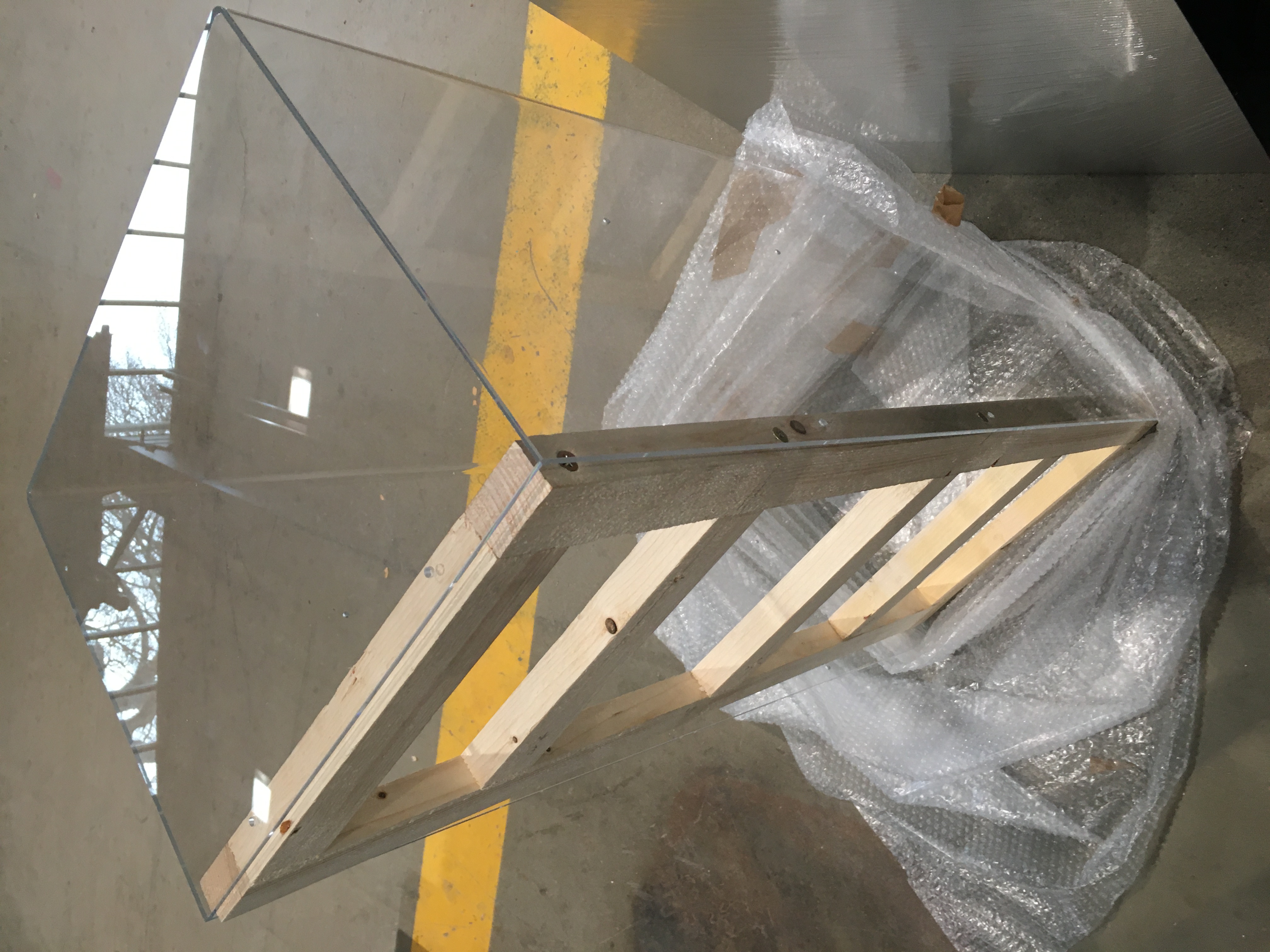
Because I am smart .. the Box inner measurements are exactly 40,5 and 100,5 as I wanted and the metal backdrop is 40,5 and 100 ! and the wood frame is also 40 x 100 so the 'smart' spielraum 0,5mm are now a problem that I need to solve with ? durchsichtige Muttern?
Use Instagram stories to promote my exhibition and the sculpture - show some of the 'making of process'
I know that in terms of promoting the sculpture what makes people curious is something more visual, textural, aesthetic, material based and since this is also what the sculpture is about to promote it online I need an image that shows that
Instagram stories works best with material close up style images - so I will create a quick video of some of my imagery and the date and name of exhibition
If I want to add the camera on the side - I need to measure how far the arm needs to be to get around and have the iPhone be at the front!
90 cm Länge Schwanenhals > the construction would need to be wall-mounted + consider that the phone might need to be constantly charged? - It needs to go 40 cm up and then still would have 50 cm to be bent over to the side and face the sculpture..
+ Thermometer attached magnetically but something 'just industrial' with no further implications ..
Possible timeline:
1) Inoculate
* necessary to have a healthy mass of Physarum
2)
3) Incubation phase covered
4) Transfer
5) Transfer day 2
6) Remove from incubator into wall hung box
7) Day 1 Box
8) Day 2 Box
9) Day 3 Box
... necessary to wait until spores are built?
Changes in book
translation not changed ..?!??
> p. 126 water and box several changes guideline
p.07 bioart approach ..?
p.09 two habitats - return to life cycle
All accessories should be as metallic and sleek and smooth as possible.
(I've started to observe how many contemporary artworks are constructed of 'ready-mades')
As each designed object has a implied meaning the most neutral, most context free way I can include a Thermometer and Hydrometer would be just as sensors and wires. > could I find someone quick to build this for me?!
and Camera arm in metal! + the Iphone would need to be hooked to power so I would need a extra-long Iphone charger + I would like to strip the cable to make it metallic. ( *I am fine with the connotation of the iPhone because it was actually used in the process)
Finals 'Accessories- Konstruktion' - showing the observational, constructivist nature of the work and showing/making visible the 'biological' aspects of working with a living organism
Totally metallic :
But this one has plastic components.
https://www.amazon.de/Universal-st%C3%A4nder-Bidear-verstellbarer-Halterung/dp/B076Q4VCSL/ref=pd_sbs_107_21?_encoding=UTF8&pd_rd_i=B076Q4VCSL&pd_rd_r=5387ba6e-29b6-4953-a3c9-43c3441f5973&pd_rd_w=sPalg&pd_rd_wg=nGFqR&pf_rd_p=17269923-e95e-42b2-b8e1-f208b58f5815&pf_rd_r=DXTTAAMMCPT28Q8H7Z9D&refRID=DXTTAAMMCPT28Q8H7Z9D&th=1
This one is more metallic
https://www.amazon.de/AboveTEK-Heavy-Aluminium-Schwanenhals-Halter/dp/B00X8C39J6/ref=sr_1_11?__mk_de_DE=%C3%85M%C3%85%C5%BD%C3%95%C3%91&dchild=1&keywords=iphone+schwanen+halter+silber&qid=1605797701&sr=8-11
The Halter of this one is what I want !
Problem it is only for Tablet size
> Borrow iPad
> Buy extra long charger cable
https://www.amazon.de/dp/B0836JPHFX/ref=sspa_dk_detail_6?psc=1&spLa=ZW5jcnlwdGVkUXVhbGlmaWVyPUExQlNGVzU5MUFGWjA4JmVuY3J5cHRlZElkPUEwMDQyMTg1Mk1XMk1IQ1lUQjdCTiZlbmNyeXB0ZWRBZElkPUEwODM1ODYwMzJMSU9SMjZNME83SyZ3aWRnZXROYW1lPXNwX2RldGFpbDImYWN0aW9uPWNsaWNrUmVkaXJlY3QmZG9Ob3RMb2dDbGljaz10cnVl
But also just for Tablet
Maybe it is also good if it cannot take place because as I see with this last run it is extremely hard to get the timing exactly right in a limited time frame of 3 exhibition days - for this kind of growing - evolving sculpture I would need a longer time frame for it to unfold, it would be such a shame to stop everything before it has reached its full beauty and life cycle..
Also would be nice to document the process in video..
Now that the exhibition is officially cancelled there is actually no pressure to build the sensor ( except the dude whom would help me) - But I can wait for the Arduino workshop on the 4th to have a fresher/better Idea of how it works and what I need and what the costs would be and what I have and then message the guy who reached out
Humidity build up through contained airflow (from evaporating Agar) > low airflow > humidity
Preferable low lit environment + covering of organism under sheets when not on show
20-21°C + 93% - 99% Humidity > measure with Temp and Humidity controller - Arduino style
* PRINT AGAIN WITH FÖRDERUNGS LOGO!!!